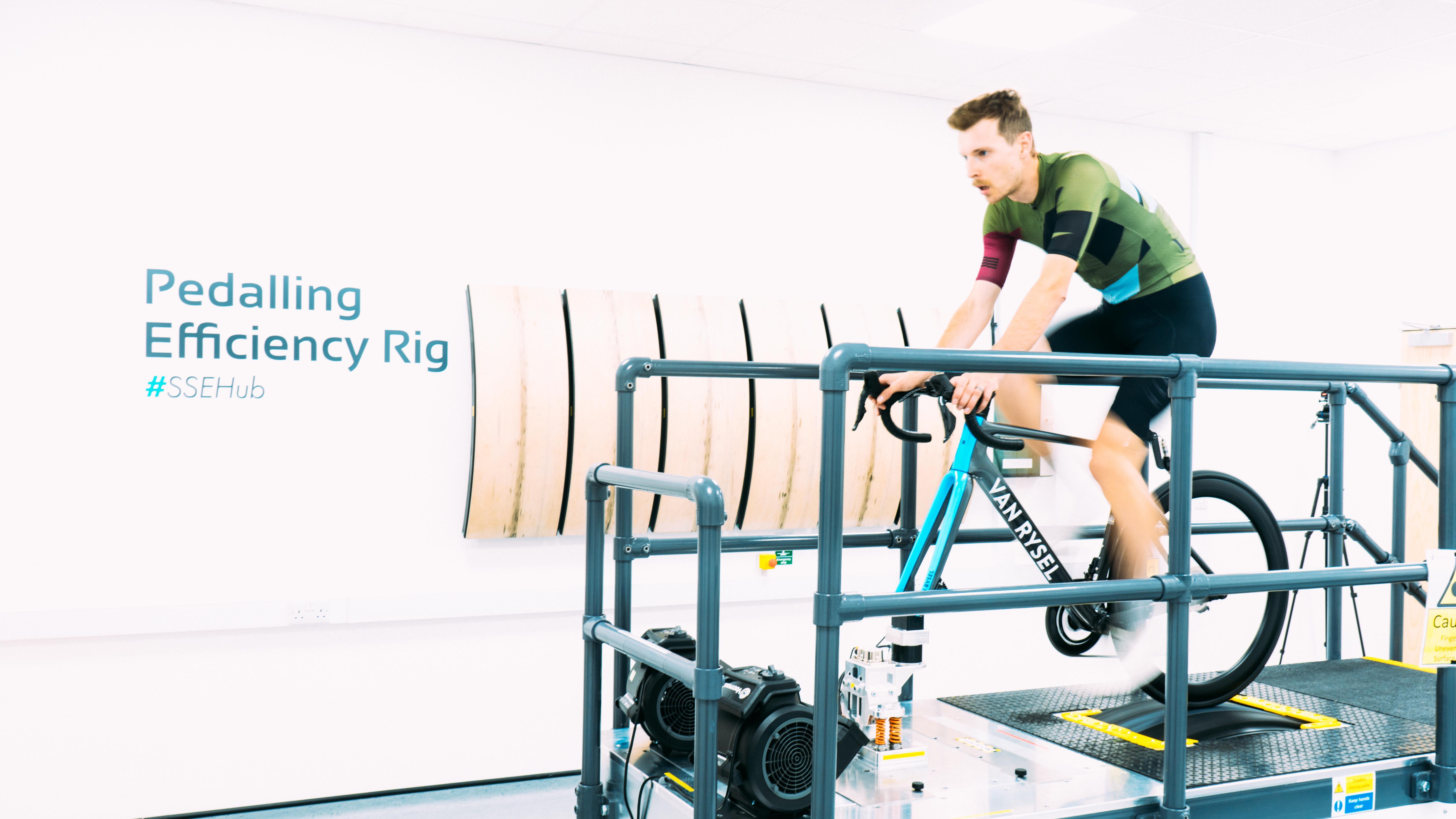
There is merit of course in a back-to-back test of superbikes. They're a big ticket item, but for many of us, they are a once-in-a-blue-moon upgrade. Tyres, on the other hand, are far more readily affordable, and are a consumable part; they will eventually wear out, through use or incurable punctures, and will need replacing. With such a range of options on the market, each with competing marketing claims, knowing what you actually stand to gain between one tyre or another is nearly impossible to work out.
In the last decade or more, the main focus in terms of performance gains, from an equipment point of view, has been on reducing aerodynamic drag as much as possible. Drag is the biggest retarding force acting on a bike and rider, and due to being a square function, the faster you go the bigger the gains will be.
Now, though, we are seeing a plateau in terms of measurable, tangible improvements. Our recent wind tunnel test of 11 WorldTour level superbikes showed that there is really very little measurable difference between bikes at the top end of the sport.
With the advent of this aerodynamic plateau, great strides have been made in terms of nutrition, training, and even things like sleep, but new frontiers are being forged in the hardware landscape nonetheless.
All else being equal, the rolling resistance of tyres on tarmac (or gravel, but this is a road tyre test) is the second greatest retarding force acting on a cyclist, and as such it's where the next greatest hardware gains can be won. Rolling resistance, in this case, is defined as the resistance to a wheel's steady motion caused by power absorption on the wheel's surface (i.e. a tyre).
The forces at play are much smaller with rolling resistance than with aerodynamic drag, in the region of five times smaller, but that doesn't mean the differences aren't worth finding out.
That's where we come in. In the same way as we've done with bikes, wheels, and helmets, we amassed a selection of 24 general race, time trial, and second-tier tyres from as many leading brands as we could, and took them to the pedalling efficiency rig at Silverstone Sports Engineering Hub to measure the differences between them. We also ran some tests to measure the effects of changing tyre pressure within a single model, and how much difference swapping from butyl tubes to tubeless, latex tubes, or TPU tubes can make.
Other Cyclingnews lab tests
- Wind tunnel tested: 10 road bike wheelsets
- Wind tunnel tested: 23 road bike helmets
- Wind tunnel tested: 11 superbikes
- Lab tested: 15 bib shorts pressure-mapped
- Wind tunnel tested: Aero wheels vs basic wheels
Before we get into the thick of it, a quick interlude to say that this feature is not sponsored. We paid the normal commercial rate for our test access and bought or borrowed everything used in the test. This content was made possible solely and entirely by our paying subscribers.
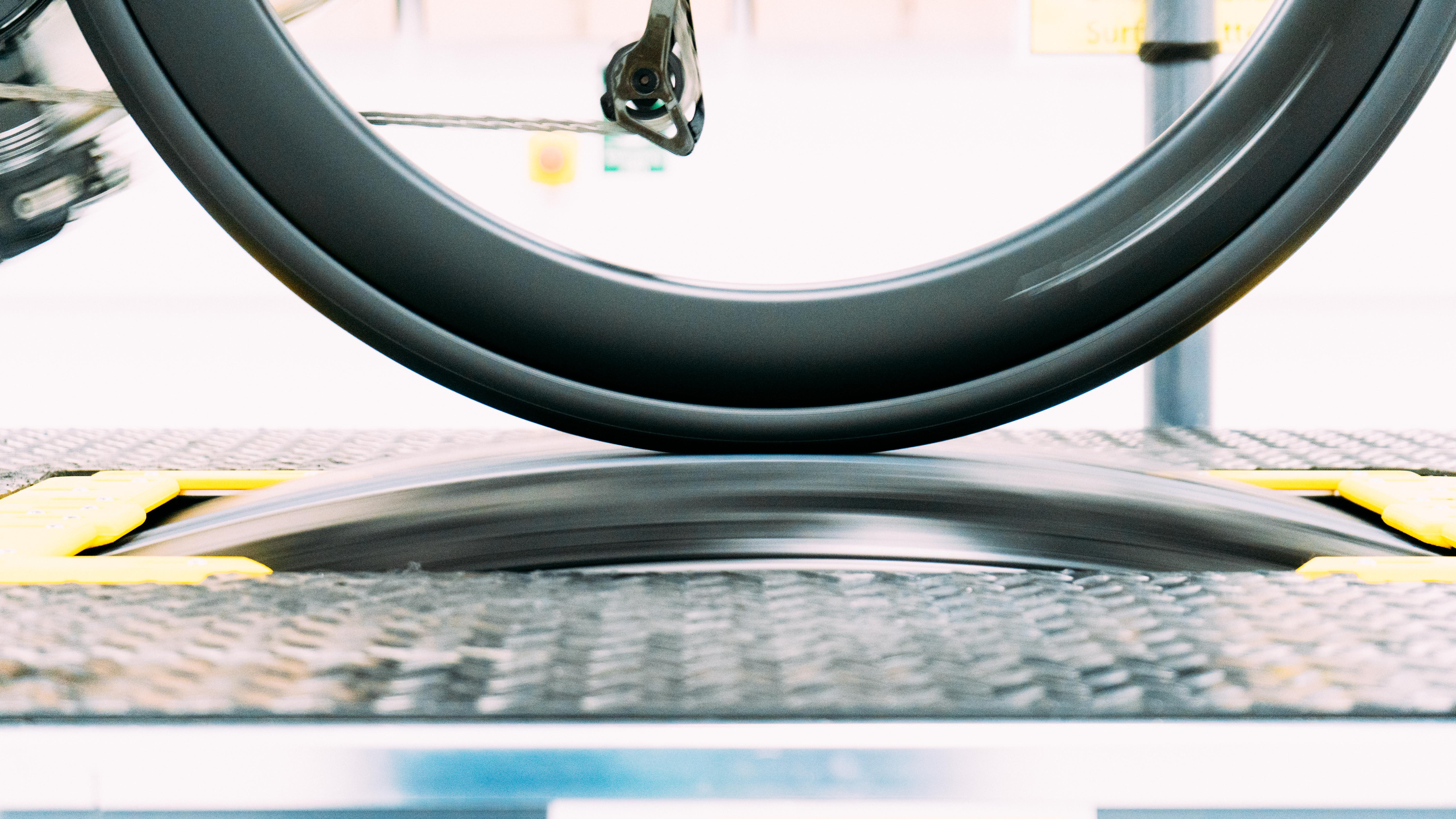
The tyres
With much the same reasoning as with our bike test, we initially selected the tyres to be included in this test based on either what is generally raced at WorldTour level, or picked whatever best fits the description of a general race tyre.
Despite being rarely seen on the road for amateur riders, time trial-specific tyres are increasingly being seen on the road, so a number of these were tested where they were available. For a secondary comparison, a small number of "all-season" options were also chosen to ascertain the penalty, if any, that comes from opting for a slightly more durable and perhaps more grippy option. Finally, a number of second-tier tyres were chosen in addition to the all-season options to cover not only a range of price points but also to see how much of a penalty there is in that regard.
Due to it not necessarily being all that useful, we opted not to test a less-performance-oriented tyre as a baseline. The second-tier tyres included should be sufficient to illustrate the differences between price points, and we assume that if you are reading this and have an interest in reducing your rolling resistance then having another performance tyre to compare is more valuable than knowing how much you stand to gain by upgrading from a nominally 'bad' tyre. We'd like to help you choose which one to pick, rather than whether or not to pick one at all.
Therefore, to achieve some comparative values, the Continental GP5000 S TR was chosen to be the benchmark before the commencement of the test. It was ridden to the joint most stage wins at this year's Tour de France, and was used by more teams in the race than any other, and in addition it is also, in our experience, more readily seen on the wheels of consumers than say a Vittoria Corsa Pro.
In alphabetical order, the tyres are as follows.
- Cadex Race GC
- Challenge Criterium RS
- Continental Aero 111
- Continental GP5000 AS TR
- Continental GP5000 S TR
- Continental GP5000 TT TR
- Goodyear Eagle F1 R
- Goodyear Eagle F1 Supersport R
- Hutchinson Blackbird
- Michelin Power Cup TLR
- Panaracer Agilist Fast
- Panaracer Agilist TLR
- Pirelli P Zero Race TLR RS
- Pirelli P Zero Race TLR 4 Season
- Schwalbe Pro One Tubeless
- Schwalbe Pro One TT
- Specialized S-Works Mondo
- Specialized Turbo Cotton Hell of the North
- Specialized Turbo Cotton
- Specialized Turbo 2BR
- Vittoria Corsa N.EXT
- Vittoria Corsa Pro Control
- Vittoria Corsa Pro Speed
- Vittoria Corsa Pro
Each tyre was brand new, never before fitted to a wheel, and had been stored at room temperature for at least 24 hours prior to testing.
Sign up to the Musette - our subscriber-only newsletter
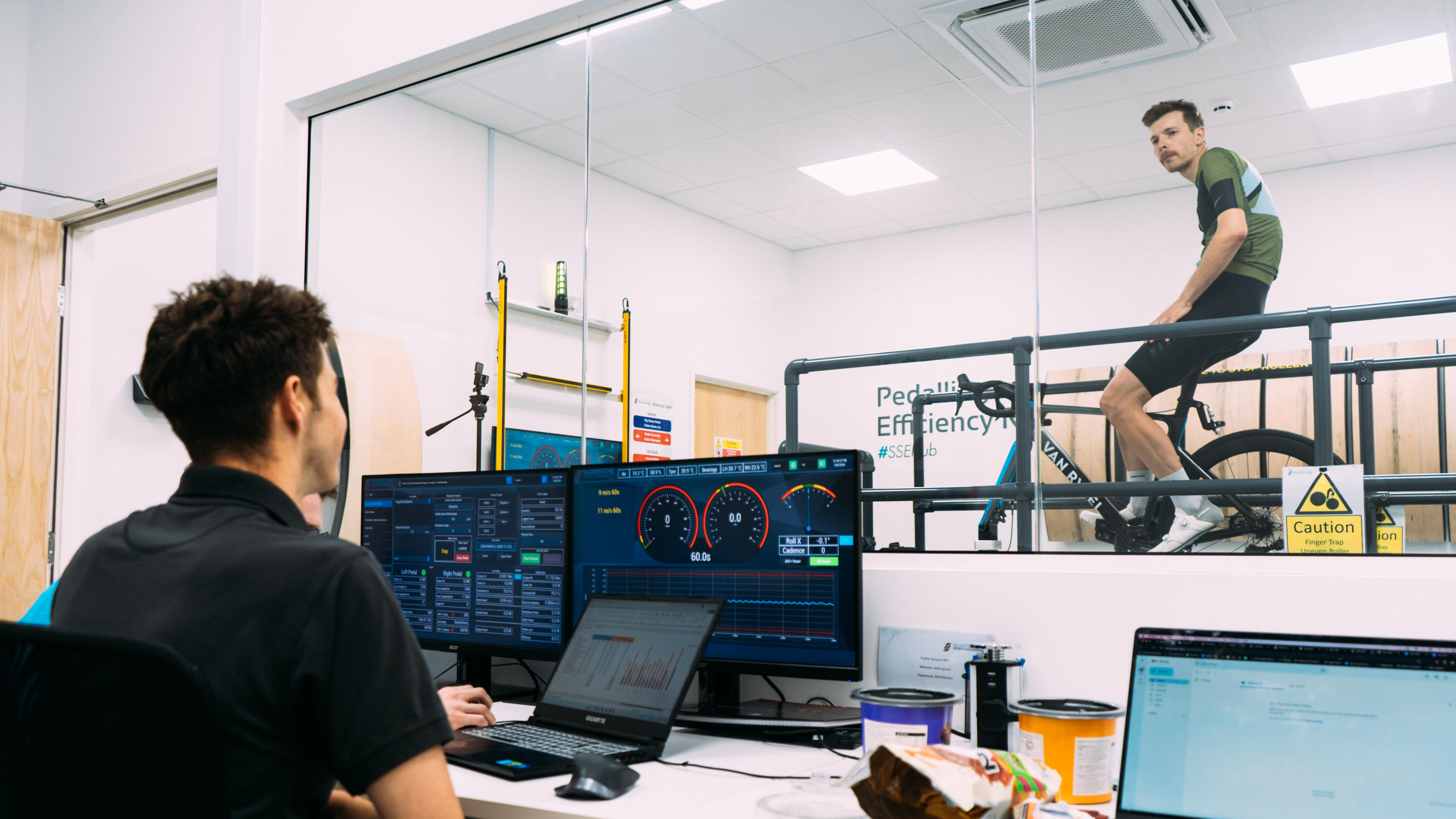
The test
The fundamentals of the test are extremely simple. A bike is mounted with its rear wheel atop a rotating drum. Body Rocket power meter pedals measure the power going into the bike at 100hz, substantially greater than standard pedal-based power meters, and sensors on the drum measure the power actually reaching the 'road'. Any discrepancy between these two numbers is the total power loss through the bike.
This setup differs from a dedicated tyre rolling resistance rig in that the energy loss it shows will also include energy lost in the drivetrain and any flexing of the frame and wheel.
However, as those losses remained constant throughout - the only variable we changed was the tyre - the differences between each test result are down to the rolling resistance performance of the tyres.
Silverstone Sports Engineering Hub does have a tyre rolling resistance rig, but in much the same way as in our wind tunnel tests, we wanted to make things as applicable to the real world as possible. The rolling resistance rig uses a metal drum, while the drivetrain efficiency rig uses a much larger drum with a simulated tarmac surface taken from a scan of a Paris street, creating a much more realistic contact patch. The pedalling efficiency rig also uses a real rider - in this case our Associate Editor, Josh - and therefore the small oscillations and vibration absorption that come with using a human to power the bike.
In essence, our aim for the test was to find out the following:
- Which tyres have the lowest rolling resistance?
- Are the differences in rolling resistance measurable beyond our confidence level?
- What tangible effect does this have out on the road?
- How does tyre pressure impact things?
- Is tubeless faster than TPU/latex/butyl inner tubes?
Present on the day were:
- Me - Will Jones - Doing a little bit of everything
- Josh Croxton - The legs needed to pedal the setup consistently
- Tom Wieckowski - Ex-professional mechanic and dab hand at quickly setting tyres up
- Sam Gupta - Photo duty and video coordination
- Andrew Daley - Videographer
- The team of test engineers from Silverstone Sports Engineering Hub
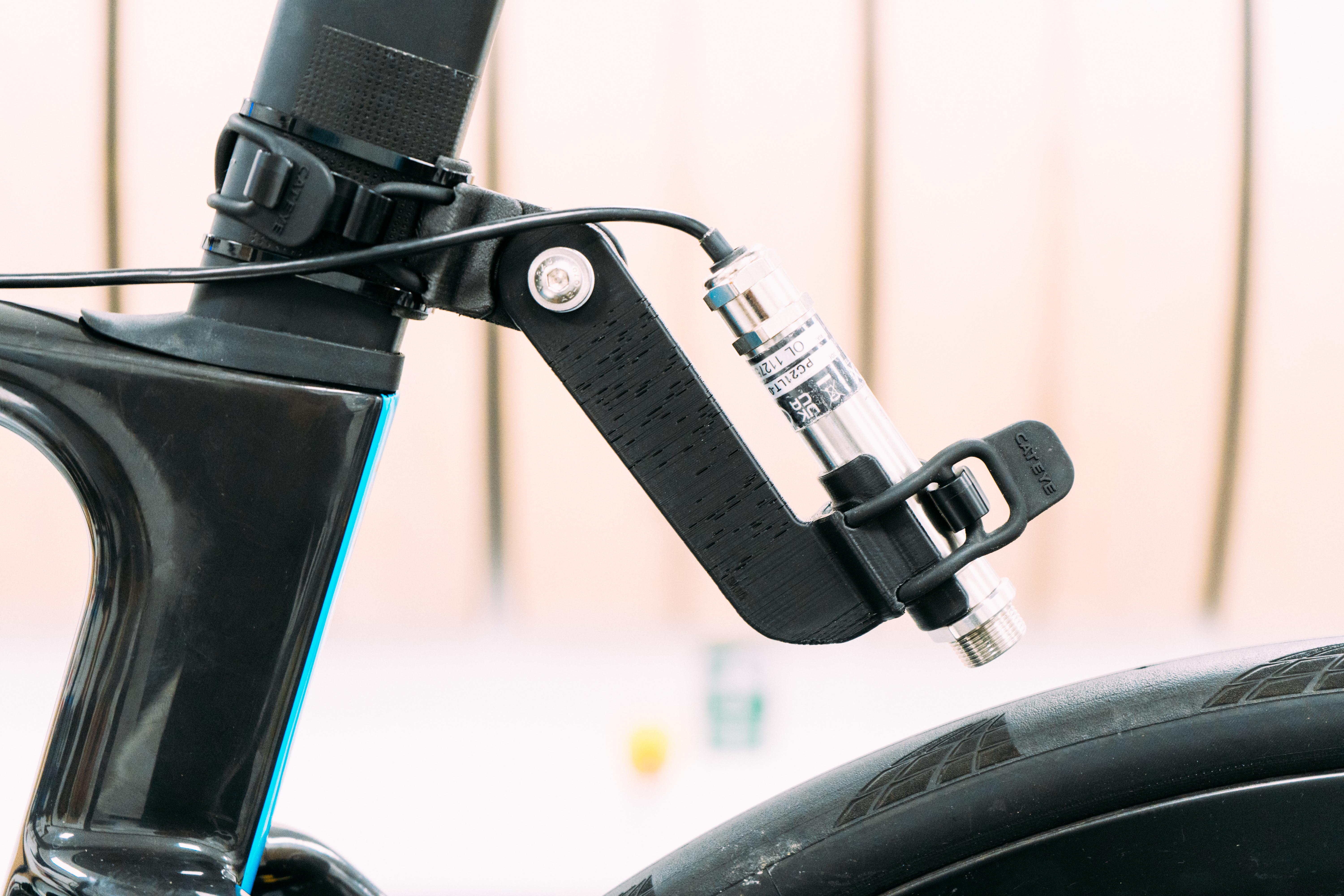

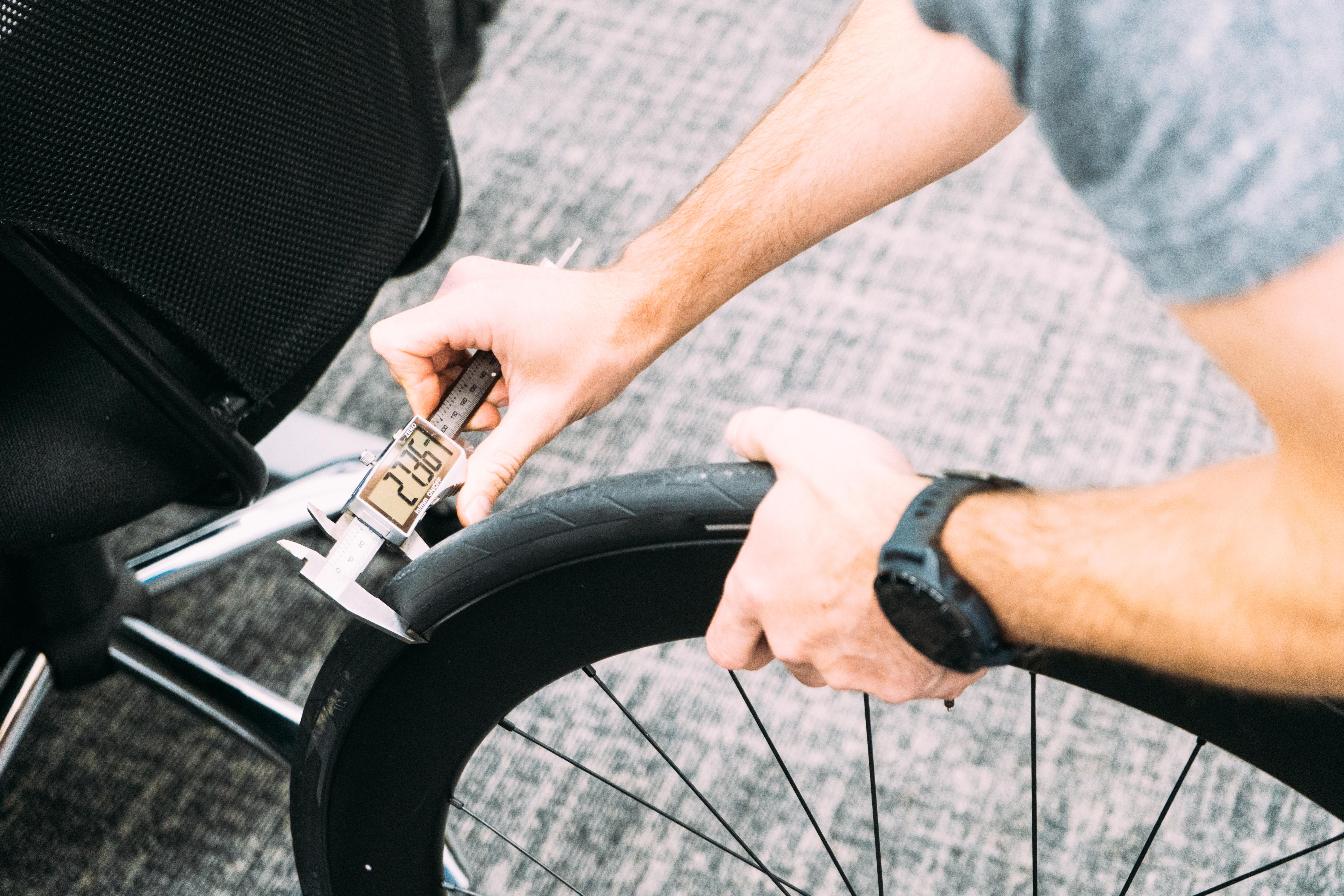
Our protocol
Each tyre on the test was run on the rig at two different velocities - 9m/s and 11m/s - equivalent to 32.4km/h and 39.6km/h. Hitting a nice round metres per second integer was a lot easier than trying to hit the equivalent of 30 or 40km/h, and these speeds are roughly in line with a fast amateur road ride and a more race-like pace.
Each pair of speeds was repeated to maintain accuracy, highlight if any results were unreliable, and allow us to check any variables, and we'd repeat again if anything looked untoward. Each run (one tyre at one speed) was 60s long, meaning each tyre/setup had four minutes of data capture after an initial warm-up.
Standardisations
Each tyre was a 28c width, provided one was available. In certain cases, such as the Specialized S-Works Turbo Cotton and the Challenge Criterium RS, a 28c was not available and as such the closest available size was used. Measured widths for each tyre at our standardised pressure are given in each tyre's datasheet.
Each tyre was run at the same pressure - 73psi - as this was the lowest allowed pressure across the board, and only a slight amount higher than Josh's recommended pressure based on SRAM's tyre pressure calculator. We are aware that there are myriad pressure calculators out there, in addition to received wisdom, but again to maintain real-world applicability, 73psi was basically what Josh would run on a set of 28c tyres anyway, and provided it was kept consistent it was as good a number as any.
The pressure being slightly harder than recommended might also offset some of the increased penetration into the tyre that a drum has over and above a purely flat surface, though to what extent this impact is, is unknown. Pressures were verified using a standalone pressure gauge.
In the case of the S-Works Turbo Cotton, being a 26c, we opted to increase the pressure based on the same tyre pressure calculator to avoid it potentially being too soft skewing the results unfairly. Both the Challenge Criterium RS and the Continental Aero 111 came in noted sizes 1mm below and 1mm above the standard 28c. These were kept at the same pressure. You can see from their measured widths that they fall within the range of the other tyres on test. The S-Works Turbo Cotton did come up wider than expected, and with hindsight could have been run at the same pressure as everything else, but as we'll see later on changing the pressure up or down from the ideal pressure a small amount has very little impact on rolling resistance anyway, so we're confident this didn't skew our results.

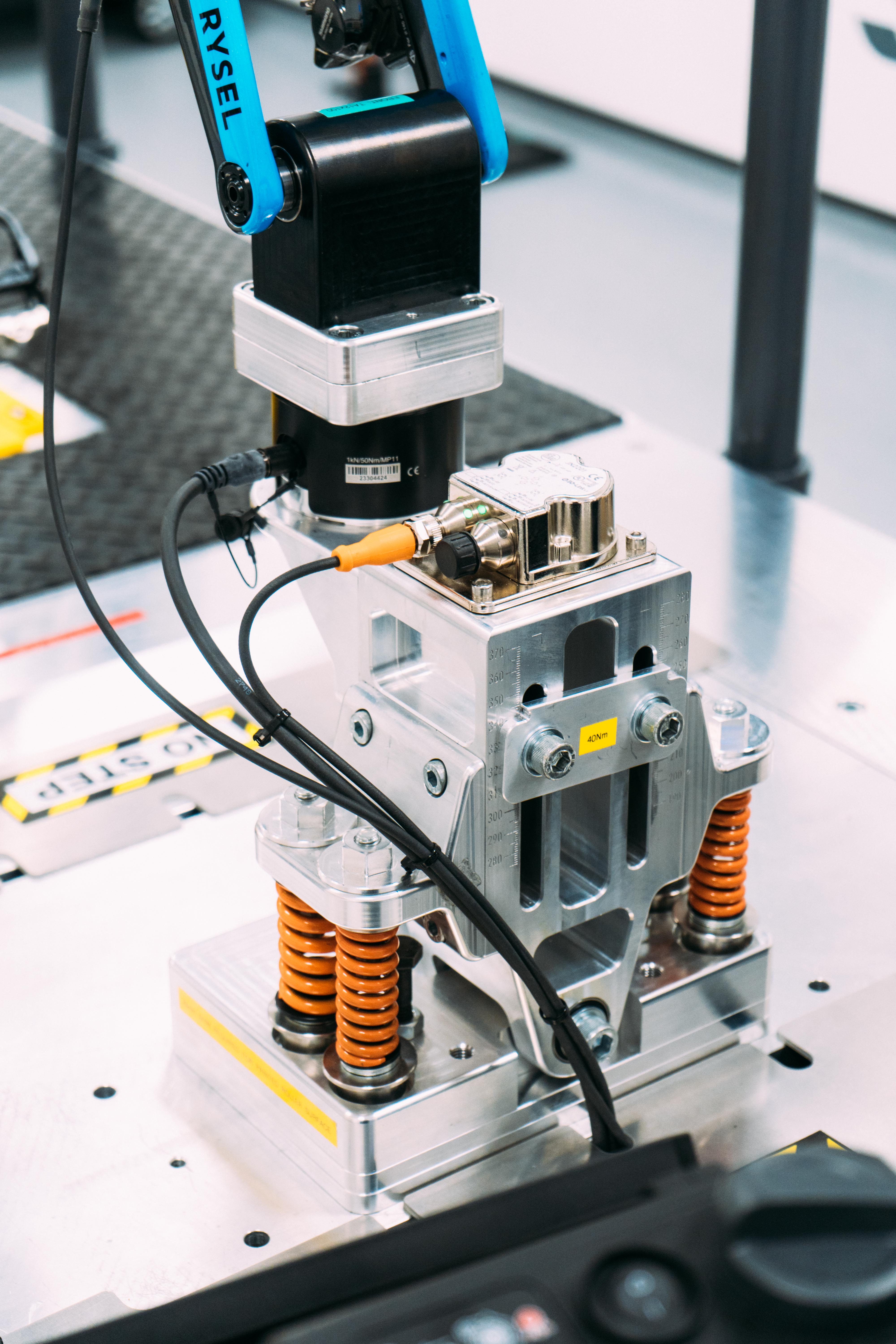
In the majority of cases the tyres were tubeless ready, and as such were set up tubeless using 40ml of Muc-Off sealant. In some cases like the S-Works Turbo Cotton and the Panaracer Agilist Fast, the tyres were not tubeless-ready and were set up with Vittoria Competition Latex tubes. All of the tube-only tyres were tested on a dry rim separate from the rest to avoid any inner tube-sealant interaction that could unfairly bias the results.
In a small number of cases, the tyres lost a modicum of sealant on setup. In these cases, it was noted and is made clear in the results.
Each tyre was mounted on an identical wheel rim, in this case, a Hunt 54 Aerodynamicist Dis, with a 20mm internal width. No disc rotors were installed so as to avoid any brake rub. For efficiency's sake, we used five identical rear wheels, allowing us to set up new tyres while testing was ongoing, and have a dedicated dry wheel for tube-type setups. It is assumed that the bearings in each of the test wheels were of equal quality, but as David Gordon Wilson states in his excellent book Bicycling Science, "the drag of ordinary ball bearings is utterly negligible as long as they are not adjusted far too tightly". As such, any minor discrepancies between the bearings would have no tangible consequence. Brand new cassettes were fitted to each of the test wheels.
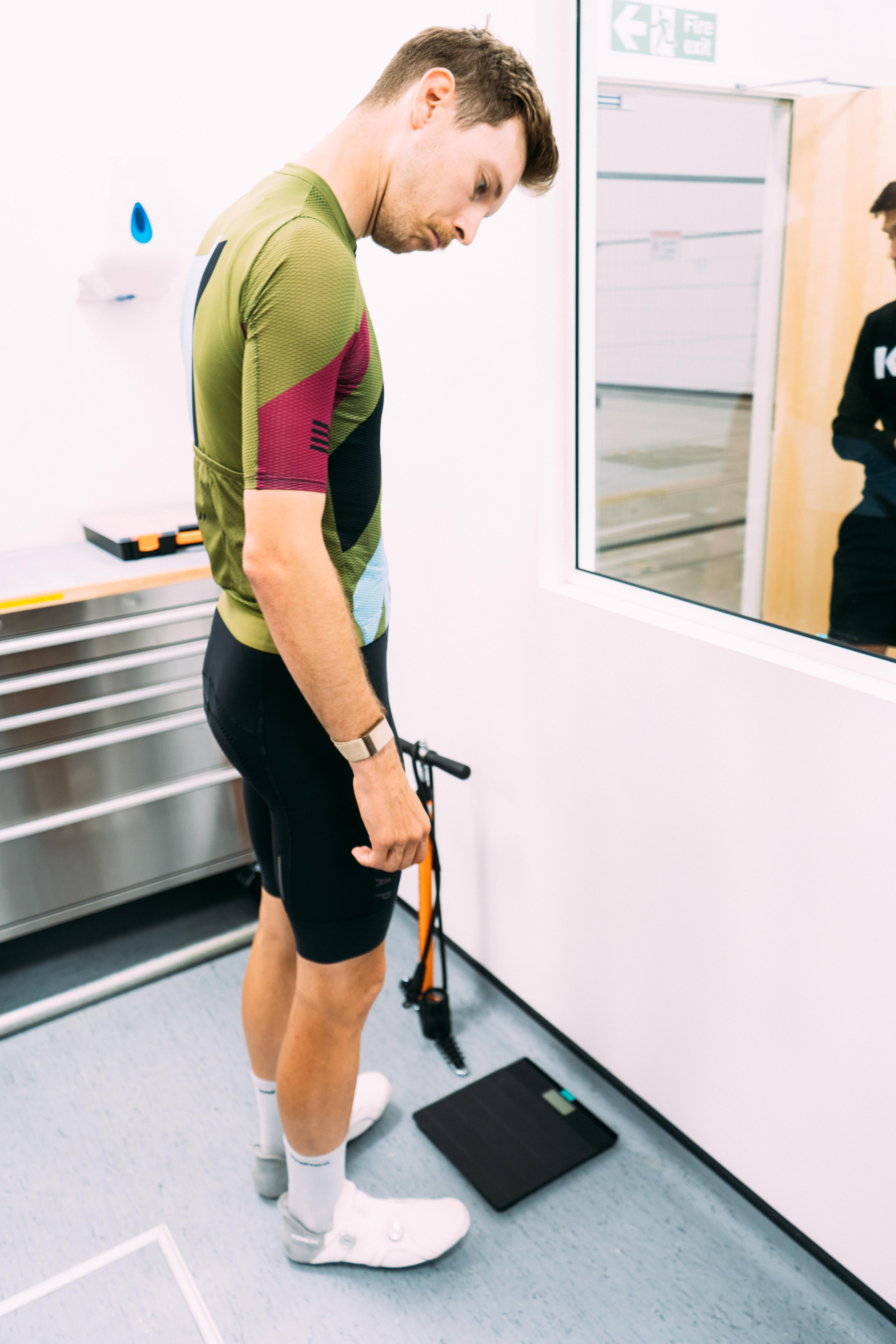
A constant velocity was used in each test, using the same gear to maintain the same cadence and pedalling style. As Josh had to get off and on the bike for each tyre swap, we also opted to have him get off and on the bike between repeats of the same tyre.
Josh was marginally smoother in his power delivery for 11m/s than for 9m/s, which we are told is normal, but in either case, as we will see when it comes to discussing the margin of error, the differences are extremely small.
The testing was conducted in a temperature-controlled room, with a sensor mounted to the seatpost constantly monitoring the temperature of the rear tyre directly to maintain consistency. No significant temperature drift was measured throughout the day. A variation in temperature was seen both between the 9m/s and 11m/s run on the same tyre, which is to be expected due to the increased workload of the faster velocity, and between tyre models due to differing rubber compounds and tread patterns, but nothing that would have any undue influence on the test.
As total system weight has an impact (greater weight will produce a larger contact patch and therefore higher numbers) Josh was regularly weighed and 'topped up' with water to offset sweat loss. He was also given sufficient time to properly warm up prior to the first test on each tyre to ensure a smooth pedalling style. He maintained the same hand and saddle position throughout to standardise weight distribution.
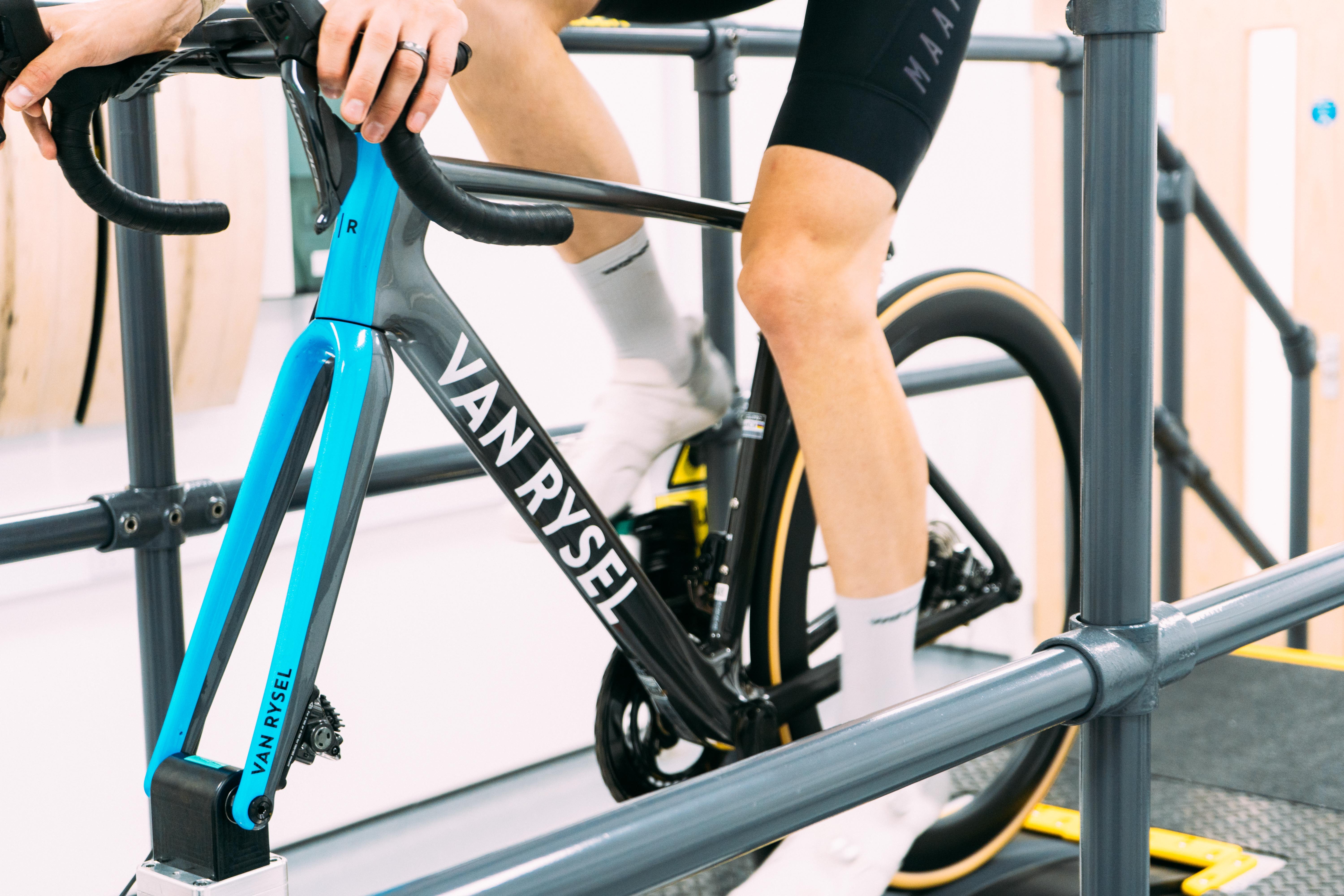
Finally, the testing was conducted on the same bike, a Van Rysel RCR Pro, which we deem representative of a modern road bike. It was kindly loaned to us by the brand for our aforementioned wind tunnel bike test and we were allowed to hold onto it for use in this test.
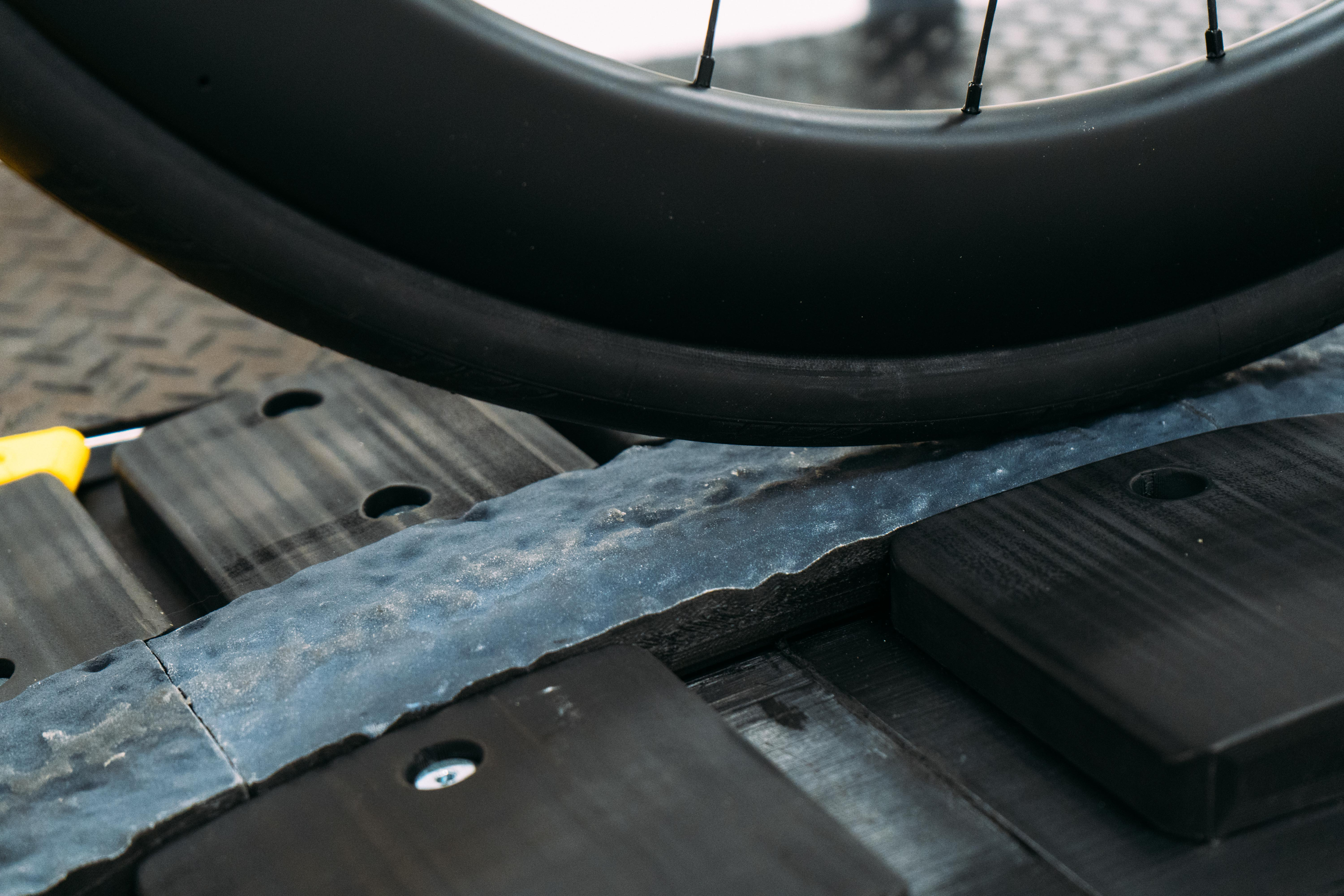
Confidence
In order to work out a margin for error, our baseline tyre, the Continental GP5000 S TR, was tested on two separate occasions throughout the day at our chosen standardised pressure.
The difference between the lowest and highest power loss figures is then used as our error margin. In this case, that is 0.1 Watts at 9m/s and 0.4 Watts at 11m/s. These error margins are presented on subsequent graphs to show where tyre data could overlap and change the potential order of proceedings. The error bars are relatively small in the context of the data as a whole.
In addition, here are a few other factors that could affect our data, and mitigations we took to ensure its accuracy.
- Any pressure loss occurring during the test runs: Repeating the tests highlighted if this was ever an issue.
- Inconsistent road speed: Should Josh stray from the target speed by =/-0.1m/s the run was redone.
- Any drivetrain efficiency losses due to chain wear or lubrication deterioration over the day. A pre-cleaned, lubed and well-bedded-in chain was used to mitigate this. Given the dry and clean environment, both SSEH and we were confident that this had no undue impact on the results.
Additional details and disclaimers
As I've already gone over, our aim isn't to create the last word in absolute data, but rather give you, our readers, an idea of what gains are realistically on the table in a real world scenario. Despite the larger drum creating more realistic absolute values than the dedicated rolling resistance rig, it is still a non-flat surface and will slightly inflate the figures to some unknown degree. The SSEH team have confidence in it, and in any case, we're only looking for the differences between each tyre here, rather than the absolute Watts lost. Therefore, it is still very much possible for us to say which tyres have the least resistance.
Where we have taken the result of a single tyre (rear) and doubled it for a full bike setup, we've assumed a 50/50 weight distribution. One's weight distribution on a bike is naturally slightly rear-weighted, but the percentage differs. We've provided individual data too, so you can adjust our maths as required.

Results
The results below are, unless otherwise stated, the values for a single tyre. Normally tyres are bought as pairs, but given the data also includes the losses that come through the drivetrain and frame flex, it would be inaccurate to double the total wattage loss. As in other tests, we are primarily interested in the comparative data rather than espousing absolutes.
The only tyre where this shouldn't be done is for the Continental Aero 111. This tyre is marketed as a front-only model, and so the gains or losses a consumer would see if they fitted one of these (in terms of rolling resistance) is for a single tyre.
When comparing each tyre to our benchmark (the Continental GP5000S TR), we used the average of results from the two GP5000 tests, and that figure was subtracted from the wattage losses for each tyre. A negative result indicates that the tyre in question is faster than the benchmark, and vice versa.
The wattage losses have first been ranked at 9m/s, and then separately at 11m/s, rather than averaging the values to create a single figure. Some tyres may perform better or worse at higher speeds and averaging would lose this valuable information.
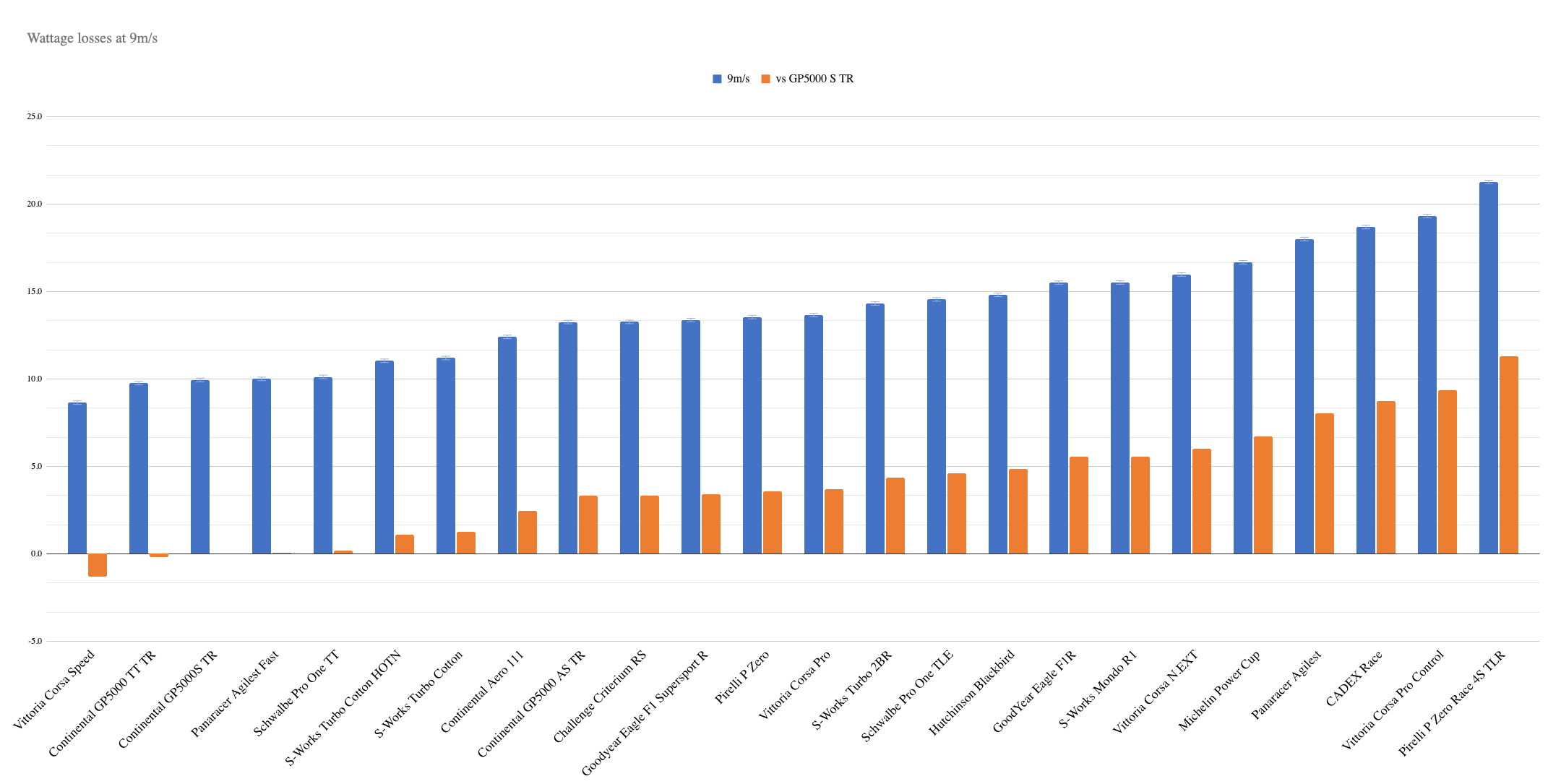
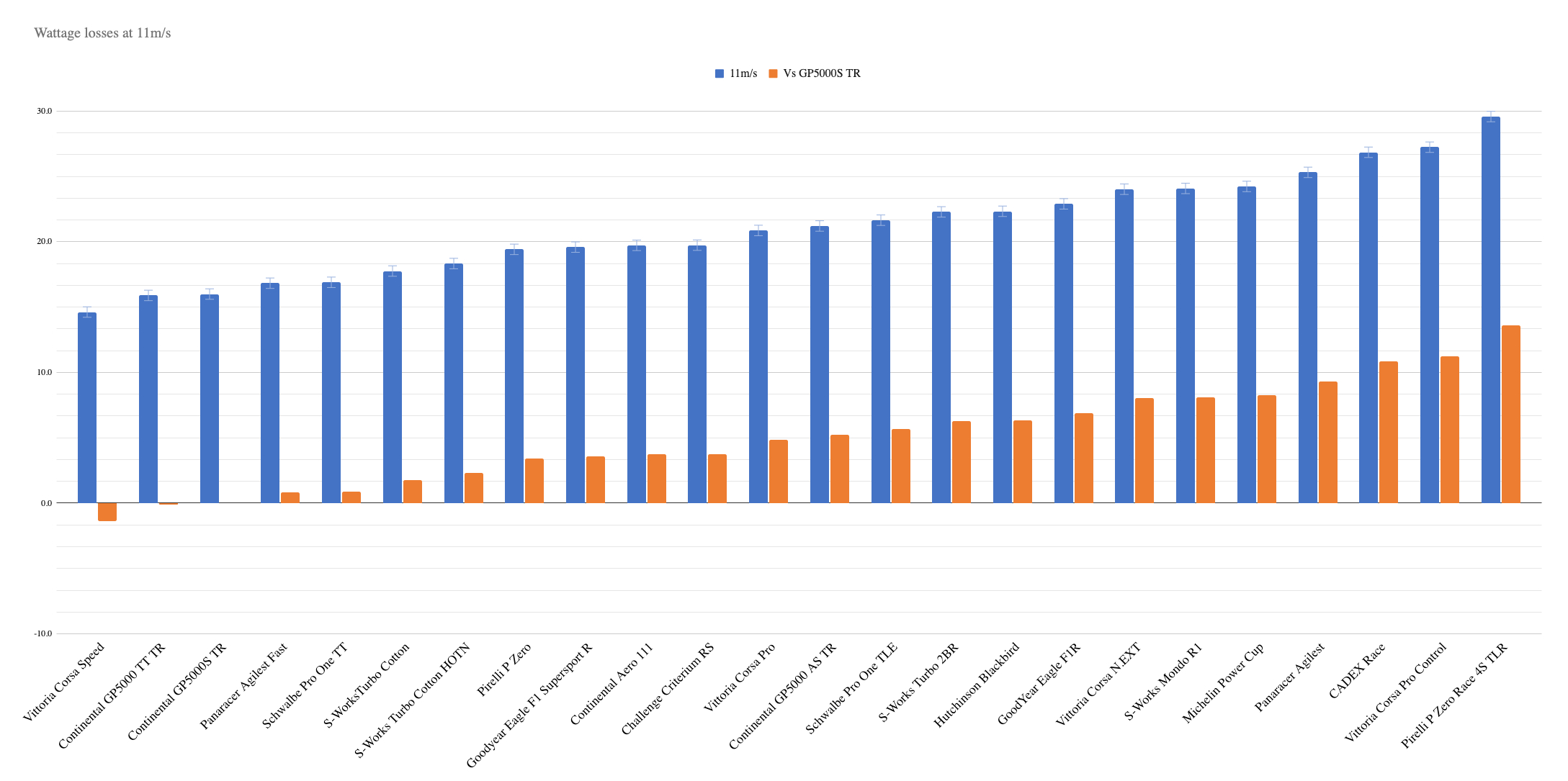
From the X axis on both graphs you can broadly see that the tyres are in agreement in terms of ranking position across both speeds, but to more easily see which tyres have changed position I have tabulated the positional shift. Bright green are tyres where the position is unchanged across both speeds. Pale green for a change of only a single position either up or down, pale yellow for a shift of two positions, and orange for anything greater.
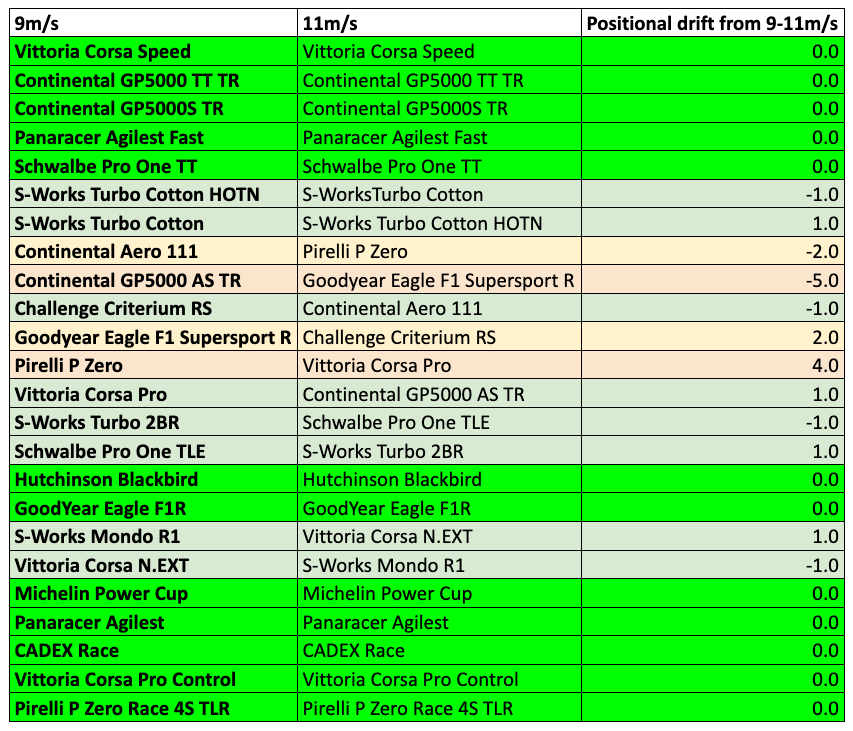
From this we can see that the fastest tyres and the slowest tyres are all generally in agreement with each other over both velocities. There's a slightly more variable patch in the middle, but 20 out of 24 of the tyres on test either remained in the same position in the ranking, or deviated by only a single place, so I think we can be relatively confident in saying that generally speaking the rankings are consistent with varying speed.
Conclusions
Which tyre is the fastest?
It's no great surprise to find that the fastest tyre on test, across both velocities, with no overlap in terms of margin of error over the next fastest, was the Vittoria Corsa Pro Speed. Compared to our benchmark GP5000S TR it would save you 1.4 watts per tyre, or 2.8 watts for a pair. I say this isn't a great surprise because it felt incredibly supple in the hands, and isn't really designed for everyday riding.
Of the all-round race tyres, the Continental GP5000S TR performed the best when taken across both speeds. It had the outright lowest wattage losses compared to its peers at 11m/s, but at 9m/s it could have shared the title with the Panaracer Agilest Fast or the Schwalbe Pro One TT (incidentally the second slowest TT tyre on test). Given the GP5000S TR is tubeless, unlike the Agilist Fast, and not a TT tyre, I am confident in labelling it as the best all-around race tyre from the data we have available here.
Our reason for selecting it as the benchmark before the test has been somewhat vindicated, but it's also heartening to see that the general consensus from what we hear with our ear to the ground both at the amateur and pro level rings true.
Below this we have both iterations of the S-Works Turbo Cotton, which swap places with the change in velocity but with the error bars either could have occupied the next spot. As I'll go into later it isn't necessarily a quirk of the inner tubes themselves, but it is noteworthy that behind the GP5000S TR, the three fastest all-round tyres are all tube type.
Getting into the mid-table, there are five or six tyres that all occupy roughly the same place in terms of rolling resistance over both speeds and can be interchangeable based on the error bars shown. Curiously for a TT-specific tyre, the Continental Aero 111 has not tested very well compared to other TT tyres. Continental claims it is up to 18 watts faster than a GP5000 S TR, and I assume this is solely in aerodynamic terms. The tyre itself has a 3.7-watt penalty over the GP5000 S TR at 40km/h by our testing.
There is little point in me simply listing the tyres in terms of their order as you can look at the graphs yourselves for how each tyre performed at each velocity, so the only thing I'll cover here in more general terms before I start unpicking trends is what's going on at the very bottom end. The slowest tyre across both velocities was the Pirelli P Zero Race 4 Season. This isn't a great surprise given it is sold as a winter tyre rather than one that'll net you "free" speed. The next two slowest though are the Cadex Race GC and the Vittoria Corsa Pro Control. The former is an all-round race tyre that "balances speed, cornering grip and durability in equal measure," and while the latter is marketed as offering slightly better grip and durability than the standard Corsa Pro, it is still a tyre we see raced regularly at WorldTour level.
How many watts can you save by swapping tyres?
The difference in wattage loss from the worst tyre on test to the best is 12.6 watts at 9m/s or 15 watts at 11m/s. Double that for a pair of tyres and, at the faster velocities, you're looking at a gain of 30 watts, which is substantial.
Realistically though, I'd suspect there are very few riders out there who are going to be swapping from a four-season tyre to a dedicated time trial tyre, so perhaps a better way to look at it overall is to simply compare it to the benchmark. At 9m/s you could gain 22.6 watts for a pair of tyres and at 11m/s that rises to 27.2 watts.
This is still comparing an all-season tyre to the best-performing race tyre, and while that upgrade isn't unheard of by any means, it isn't really comparing apples with apples. Looking at just the race tyres, excluding the TT options, you could stand to gain 17.4 watts at 9m/s and 21.8 watts at 11m/s by swapping from a pair of Cadex Race GC tyres to the Continental GP5000 S TR.
Results and data for each individual tyre
I have ranked the tyres by how they perform at 9m/s.
A case could be made for ranking them at 11m/s or by combining the two results and ranking them by how they perform on average over the two velocities, but I estimate that more of you will spend more time riding at 9m/s than you will at 11m/s, and as such the data at 9m/s is more relevant. As I've shown earlier, the tyres don't change much in their ranking/position from one speed to another.
The wattage savings for each tyre are listed below, along with some vital stats. Remember, the wattage savings are for a single tyre. I have stopped short of outlining any improvements in velocity, or the time taken for a hypothetical 40km time trial, for reasons I'll go into later.
N.B. Hookless compatibility has in many cases been listed as a simple yes/no. Compatibility is almost always dependent on the internal width of the rim, so please check your individual setups as required.
Pirelli P-Zero Race TLR 4S
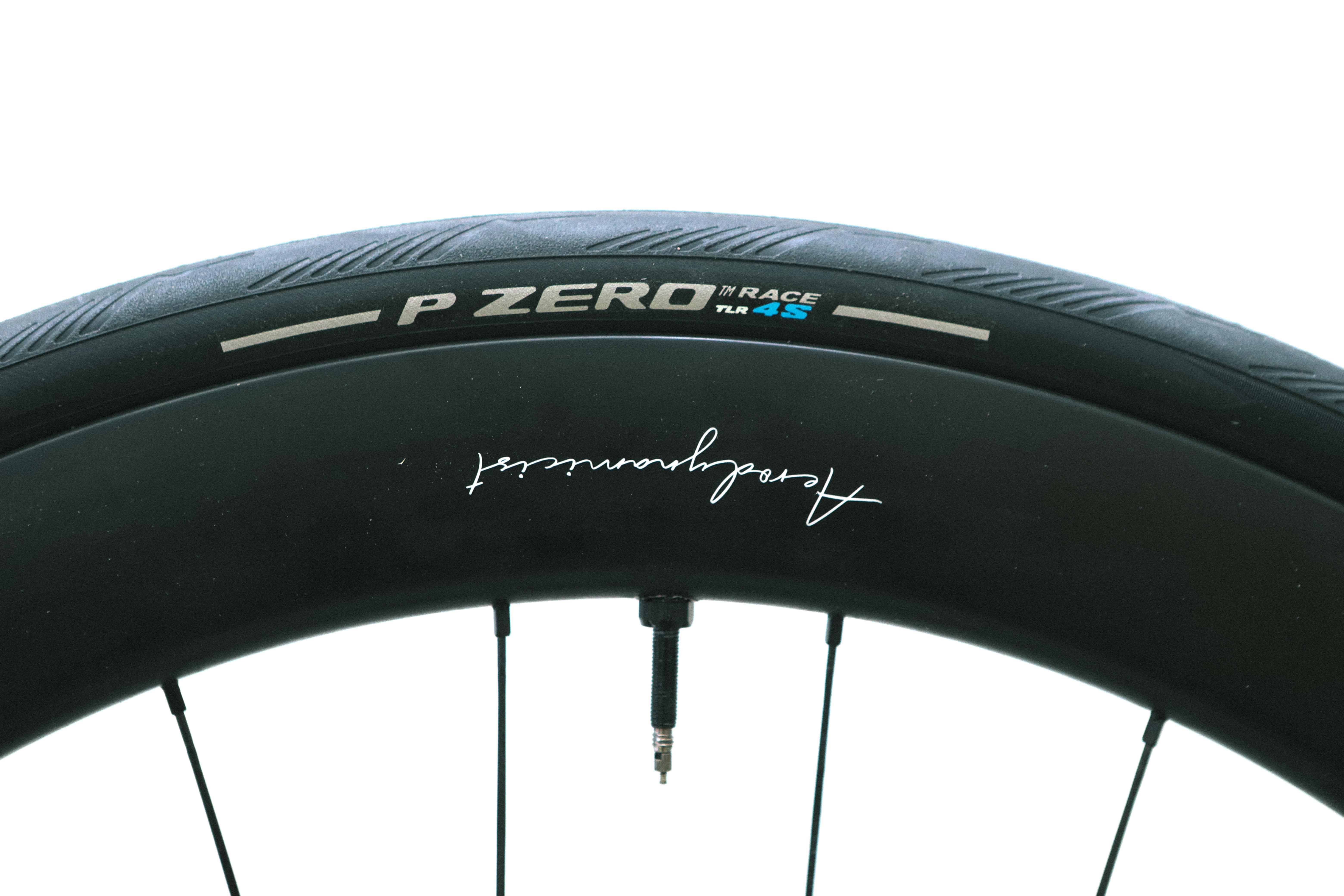
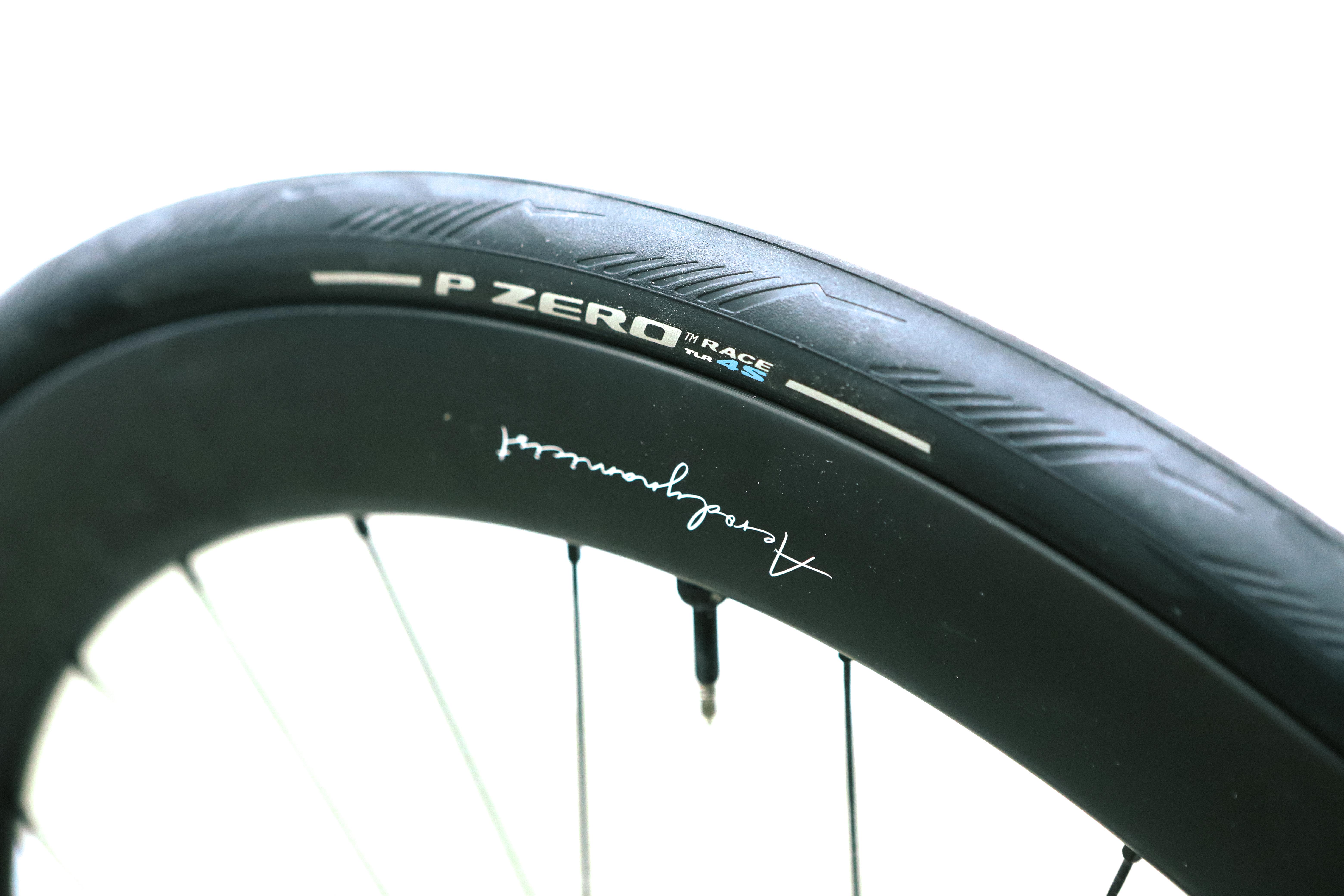
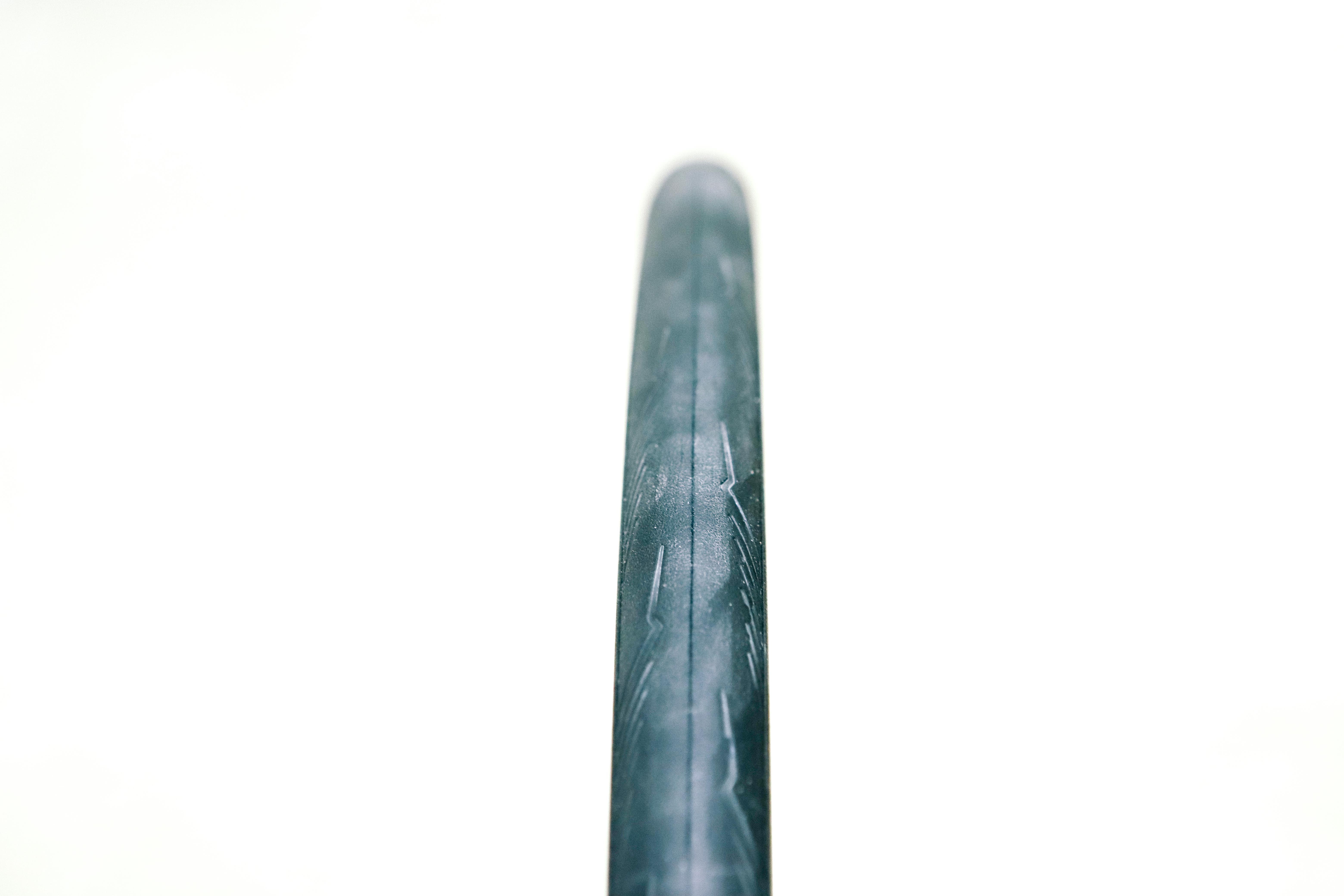
- Power at 9m/s: 21.3W
- Power at 11m/s: 29.6W
- Vs GP5000 S TR at 9m/s: +11.3W
- Vs GP5000 S TR at 11m/s: +13.6W
I am reticent to label this as last place. It is measurably the slowest of the cohort of tyres that we tested, but it is an all-season tyre and as such has a focus on durability and grip too that pure race models don’t need to worry about quite so much. Without testing all the winter tyres on the market it’s hard to say how this stacks up, but if you do run more sturdy rubber over the winter months then perhaps this can serve as a reminder that when the sun comes back out you can save in the region of 22 Watts by swapping to our benchmark tyre.
Vittoria Corsa Pro Control
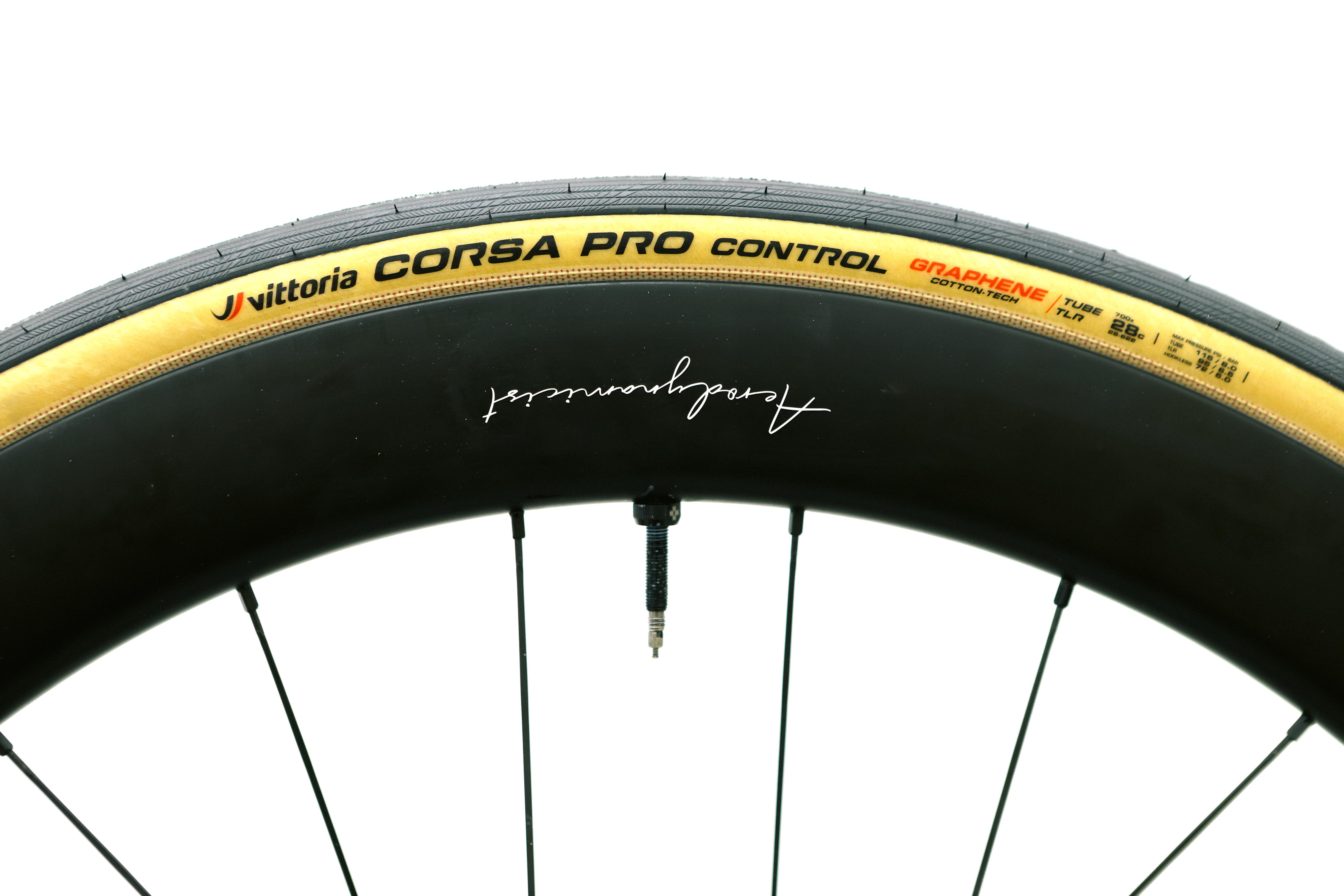
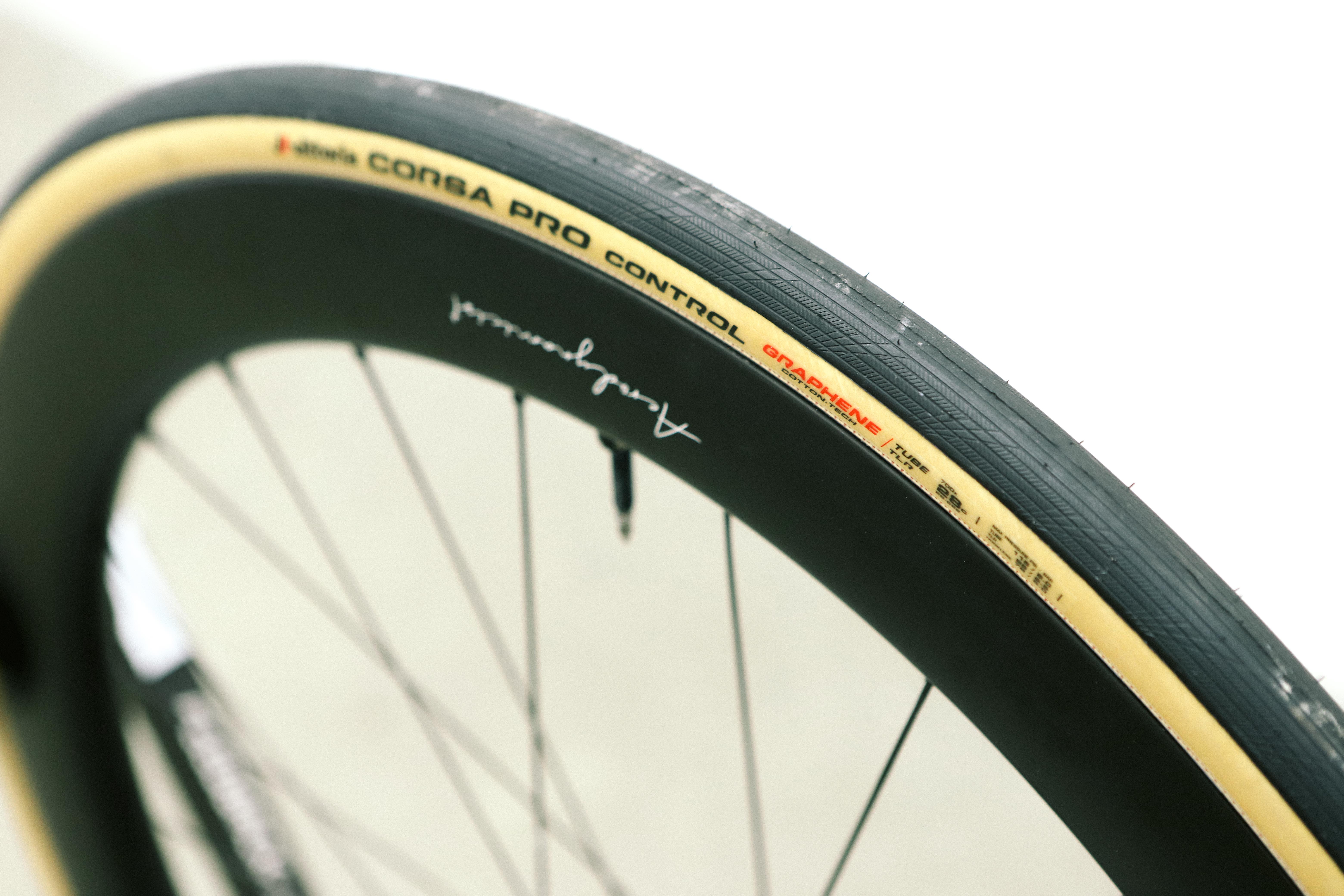

- Power at 9m/s: 19.3W
- Power at 11m/s: 27.2W
- Vs GP5000 S TR at 9m/s: +9.4W
- Vs GP5000 S TR at 11m/s: +11.2W
Now, this is an interesting one. The second slowest tyre from our test group, but one that is readily seen in the WorldTour. It purports to have much the same construction as the more-often-seen Corsa Pro but with better grip and better puncture resistance. It is most frequently seen during the Spring Classics, and without figures for its mechanical grip it's hard to judge in this regard, but we can say that by our measurements any Vittoria-sponsored teams opting for this over the Corsa Pro are taking a hit of 14.4 Watts at around 40km/h, and even more at higher velocities.
CADEX Race GC
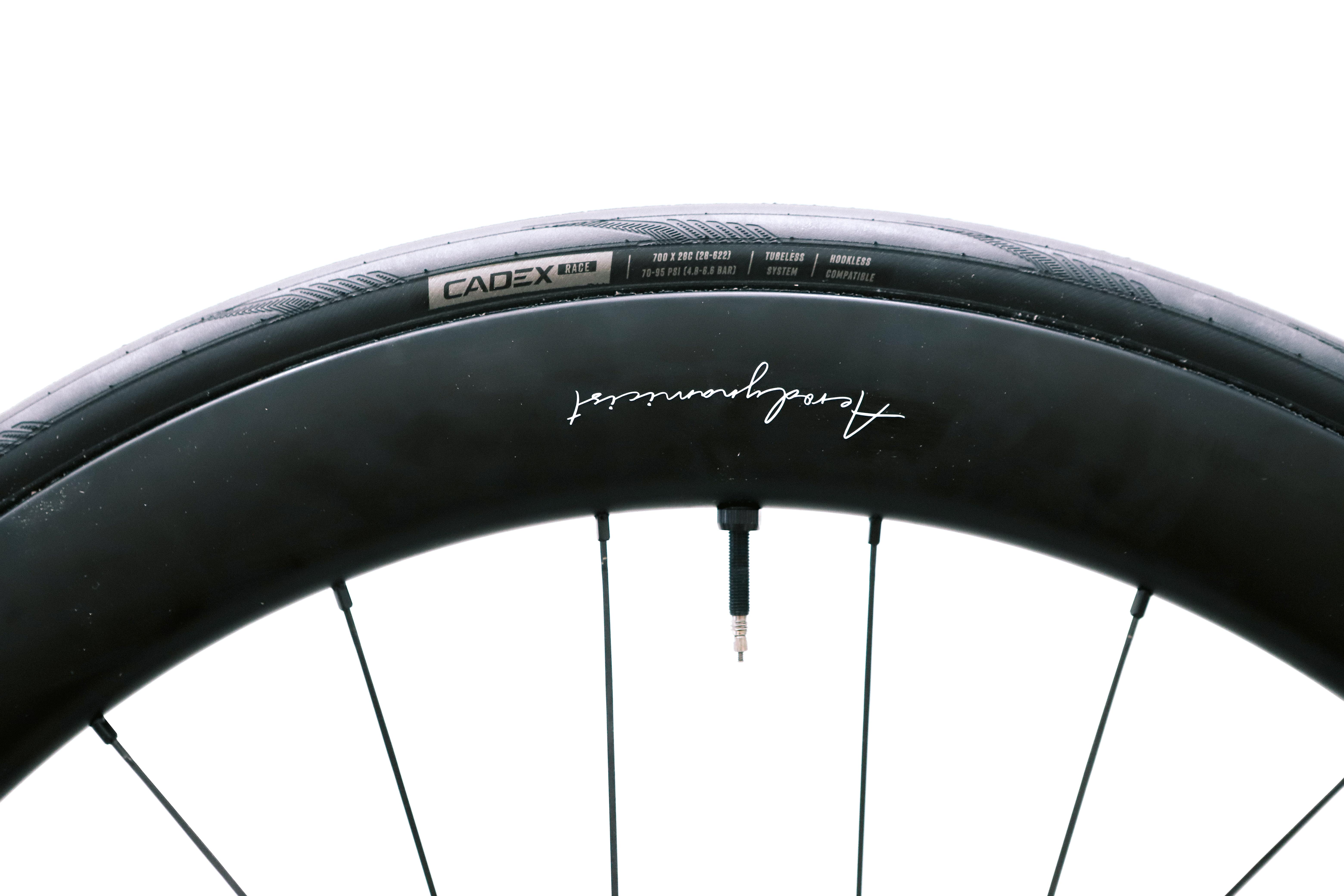
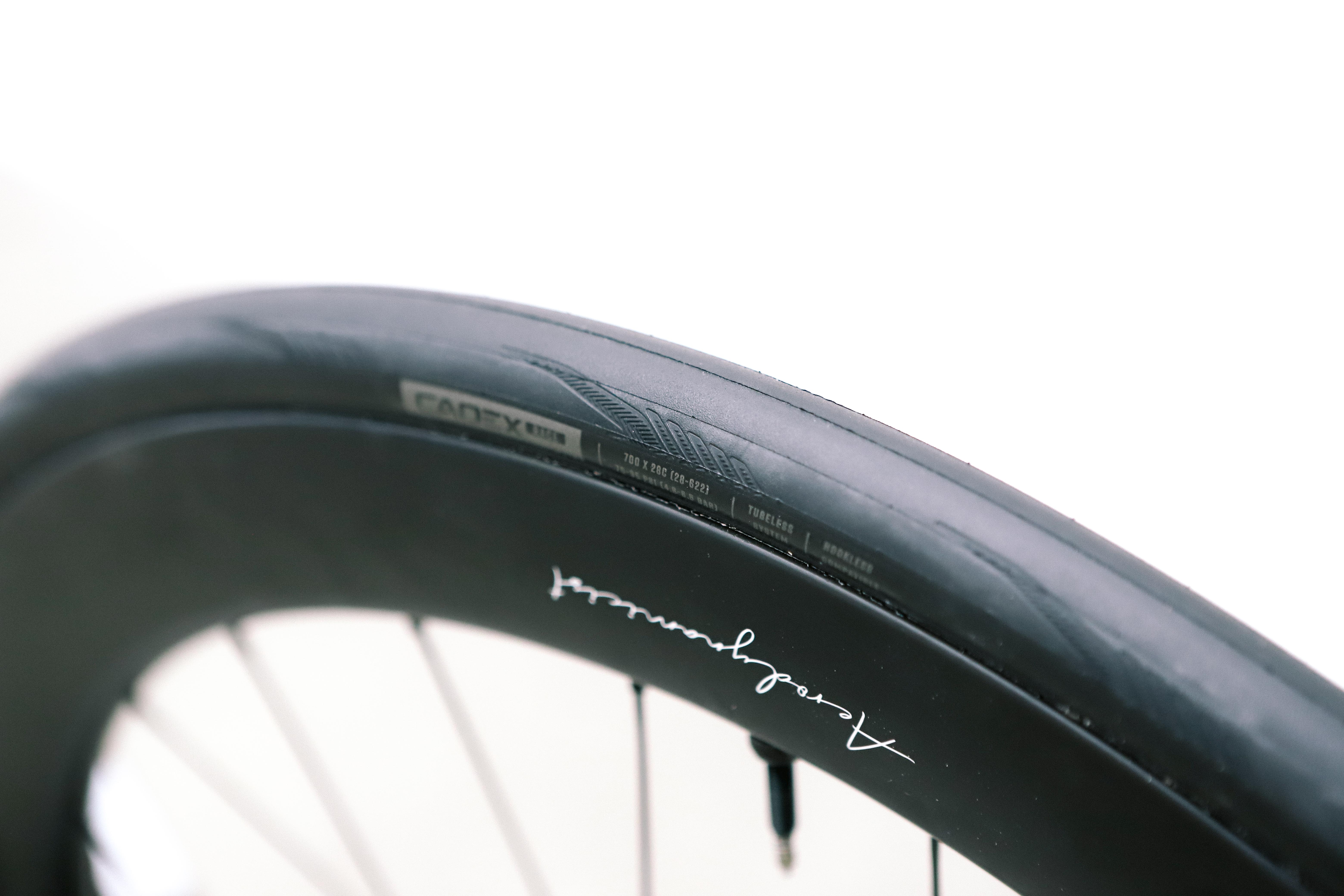
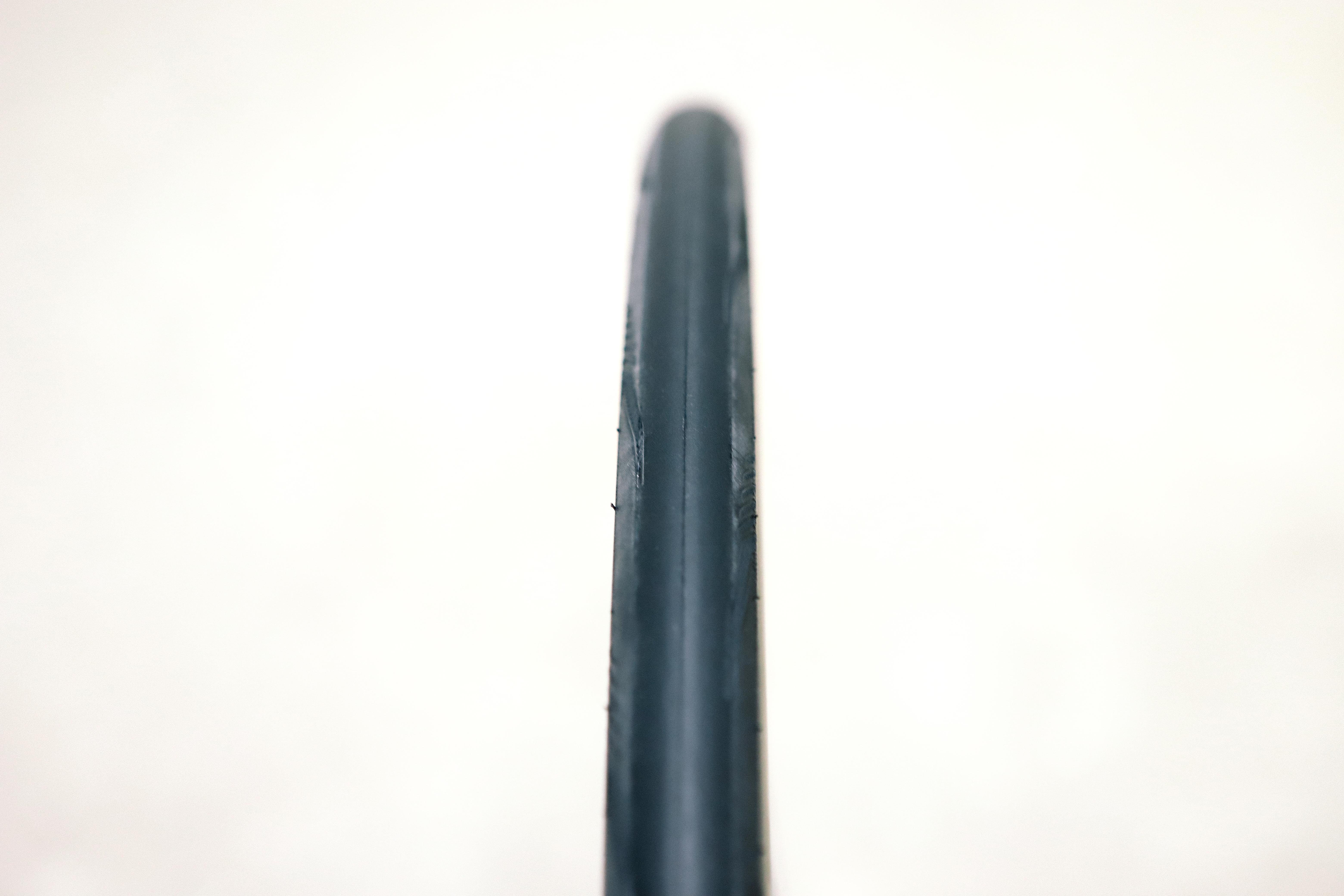
- Power at 9m/s: 18.7W
- Power at 11m/s: 26.9W
- Vs GP5000 S TR at 9m/s: +8.7W
- Vs GP5000 S TR at 11m/s: +10.9W
Of all the dedicated all-round race tyres, the 28c-only CADEX Race GC came out with the highest wattage penalty. It isn’t seen at WorldTour level, but it is in the tier below under the riders of teams like Kern Pharma, so has been raced at Grand Tour level. It came up relatively narrow on our test rims, and given the tyres were designed on CADEX's own 25mm-wide rims, this could be why they tested poorly. CADEX itself was pretty clear in stating that outright speed wasn’t the only goal in the development of this tyre, but regardless a 20-watt penalty over a GP5000S TR is noticeable in a sport where winning margins are often tiny. By the error bars the Race GC could easily have swapped with the Corsa Pro Control, too.
Panaracer Agilest TLR
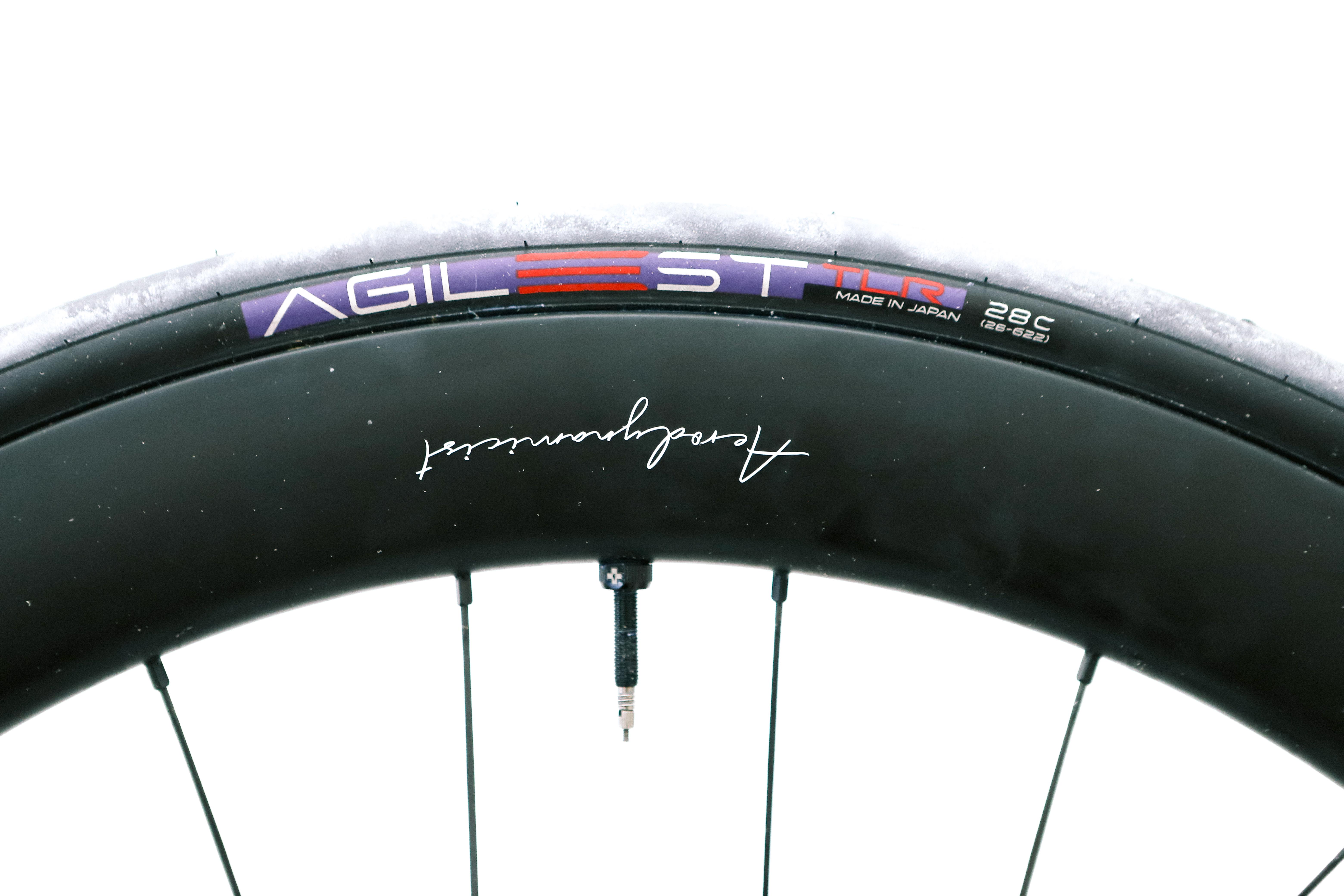
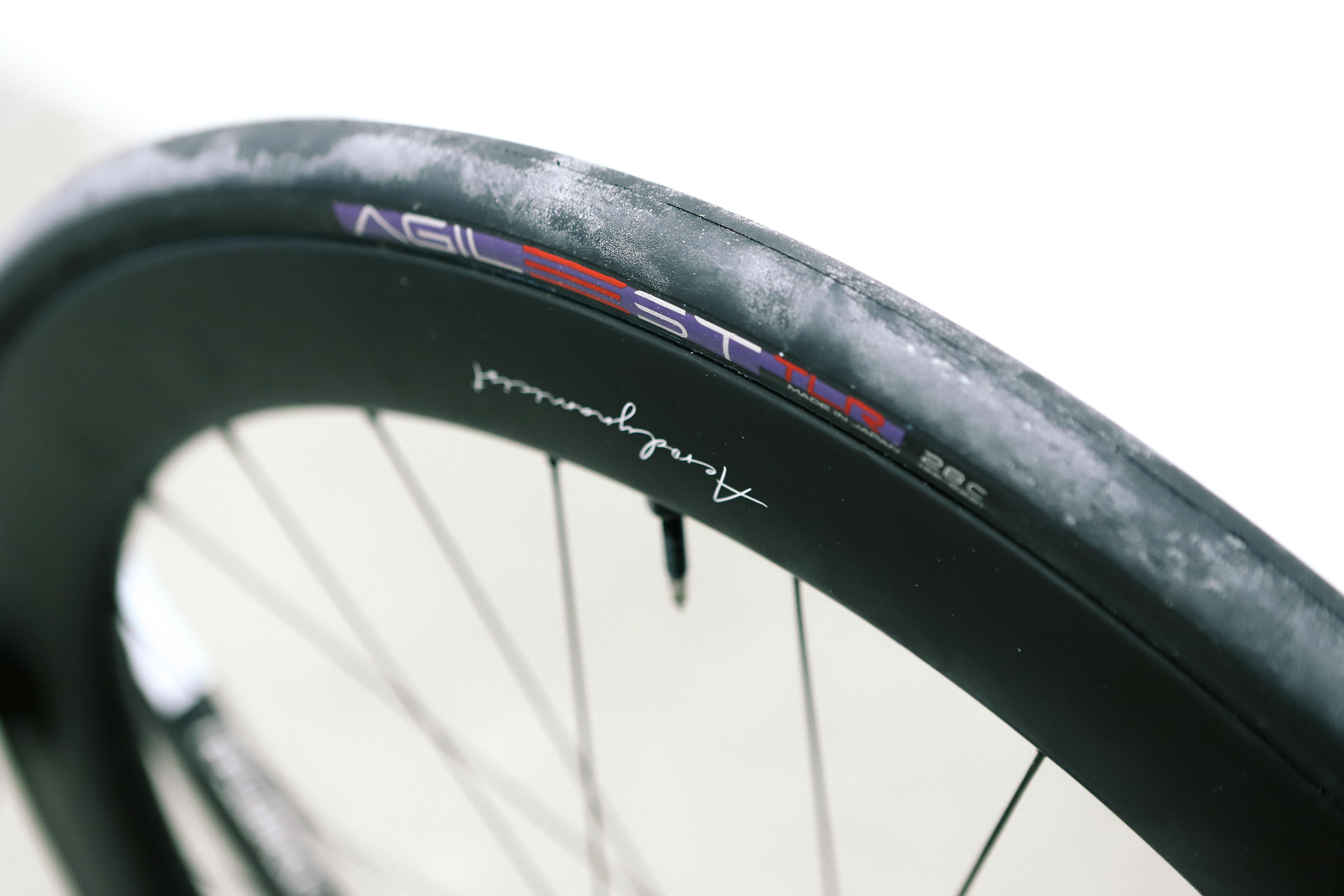

- Power at 9m/s: 18W
- Power at 11m/s: 25.3W
- Vs GP5000 S TR at 9m/s: +8.1W
- Vs GP5000 S TR at 11m/s: +9.3W
Best known for the well-proliferated GravelKing series of tyres, the Agilest is the general-purpose option in Panaracer’s new road tyre range. A totally slick tread (and slick branding too, it must be said) is on offer here. Its error bars, particularly at 9m/s, sit out of the realm of other tyres so it is definitely where it should be. A slightly more affordable option that tests better than some pro-level options is perhaps the positive spin to take away here.
Michelin Power Cup TLR
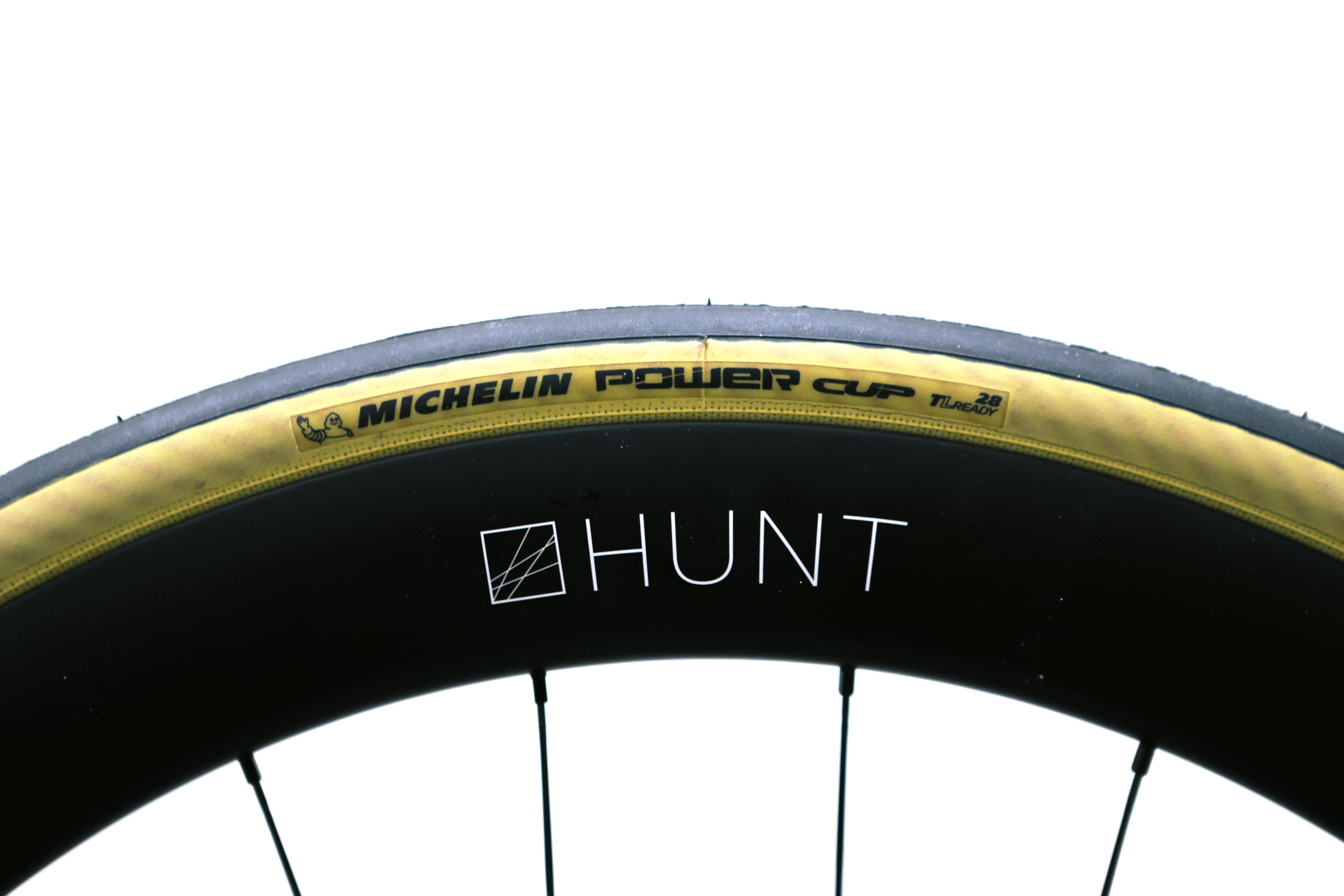
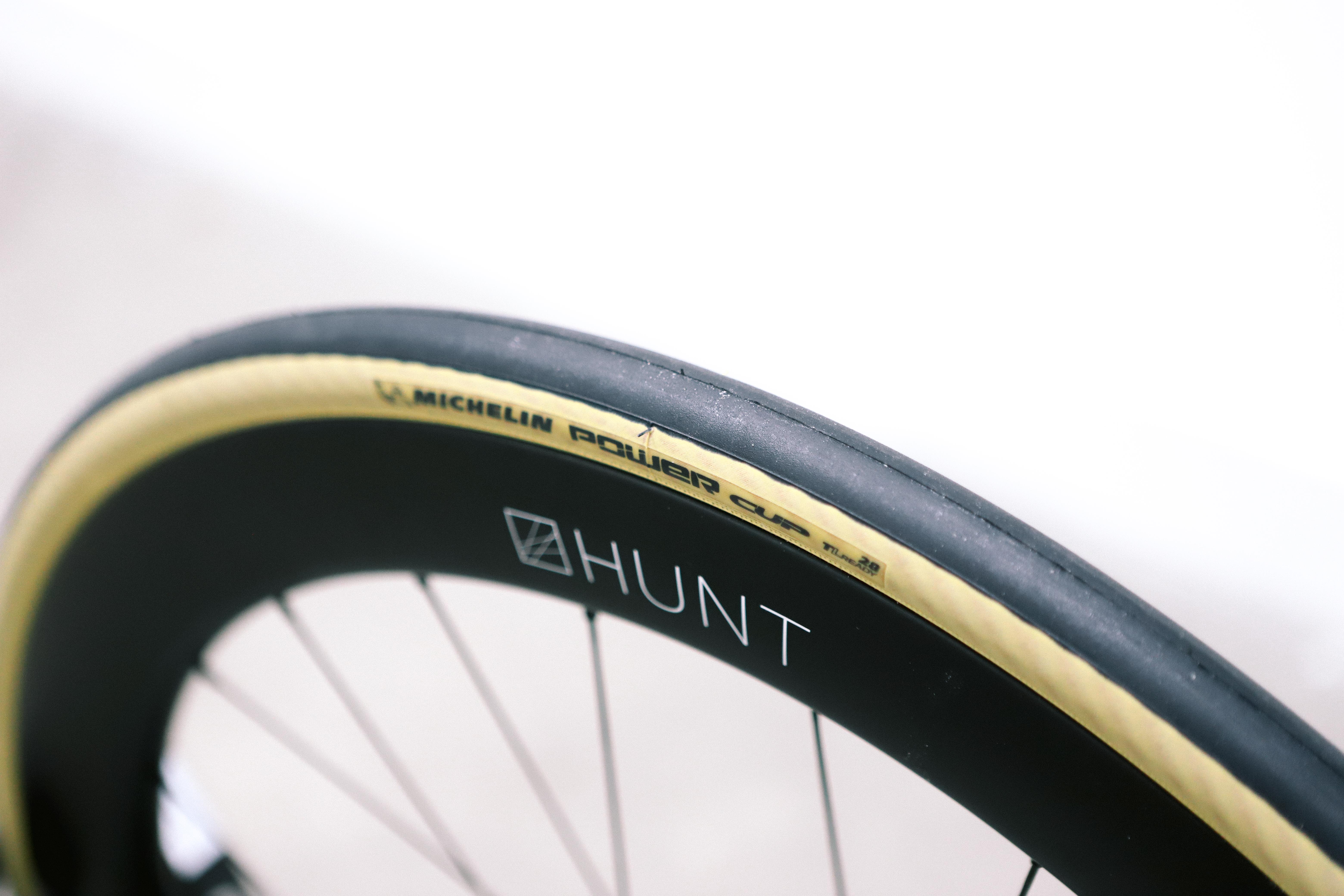
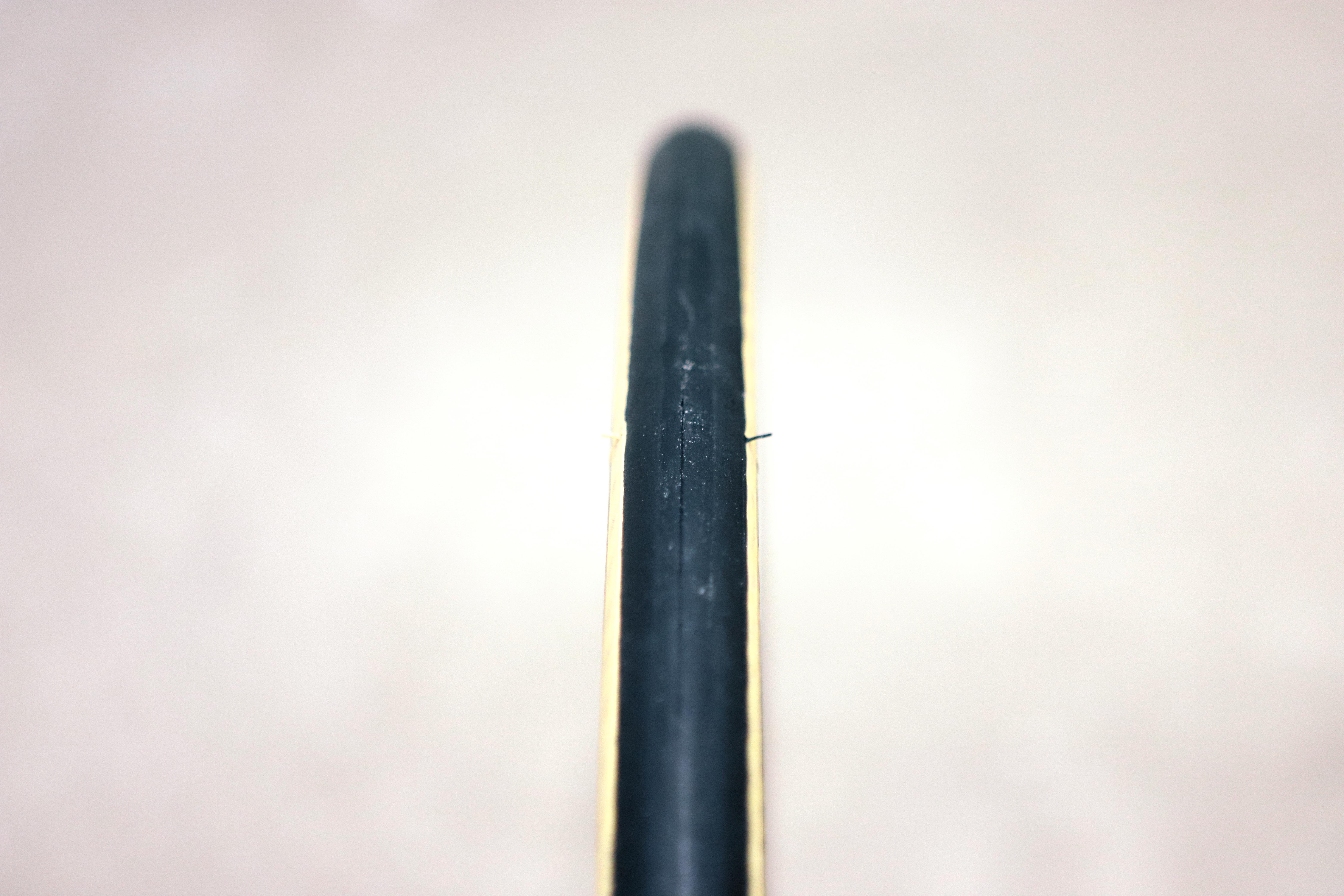
- Power at 9m/s: 16.7W
- Power at 11m/s: 24.2W
- Vs GP5000 S TR at 9m/s: +6.7W
- Vs GP5000 S TR at 11m/s: +8.2W
The Power Cup TLR from Michelin occupies much the same market space as the Agilest TLR in that it’s a more wallet friendly option with designs on competing with the more established players. It’s often on sale, sometimes markedly so, and with only a 1.4 Watt difference between a pair of these and a pair of Agilests you can probably think with your wallet as much as anything else here. Sadly there are no sizes above a 28c if you want tanwalls (the 30c size is black only), which may be a limiting factor for those who are a bit more forward thinking with their tyre choices.
Vittoria Corsa N.EXT
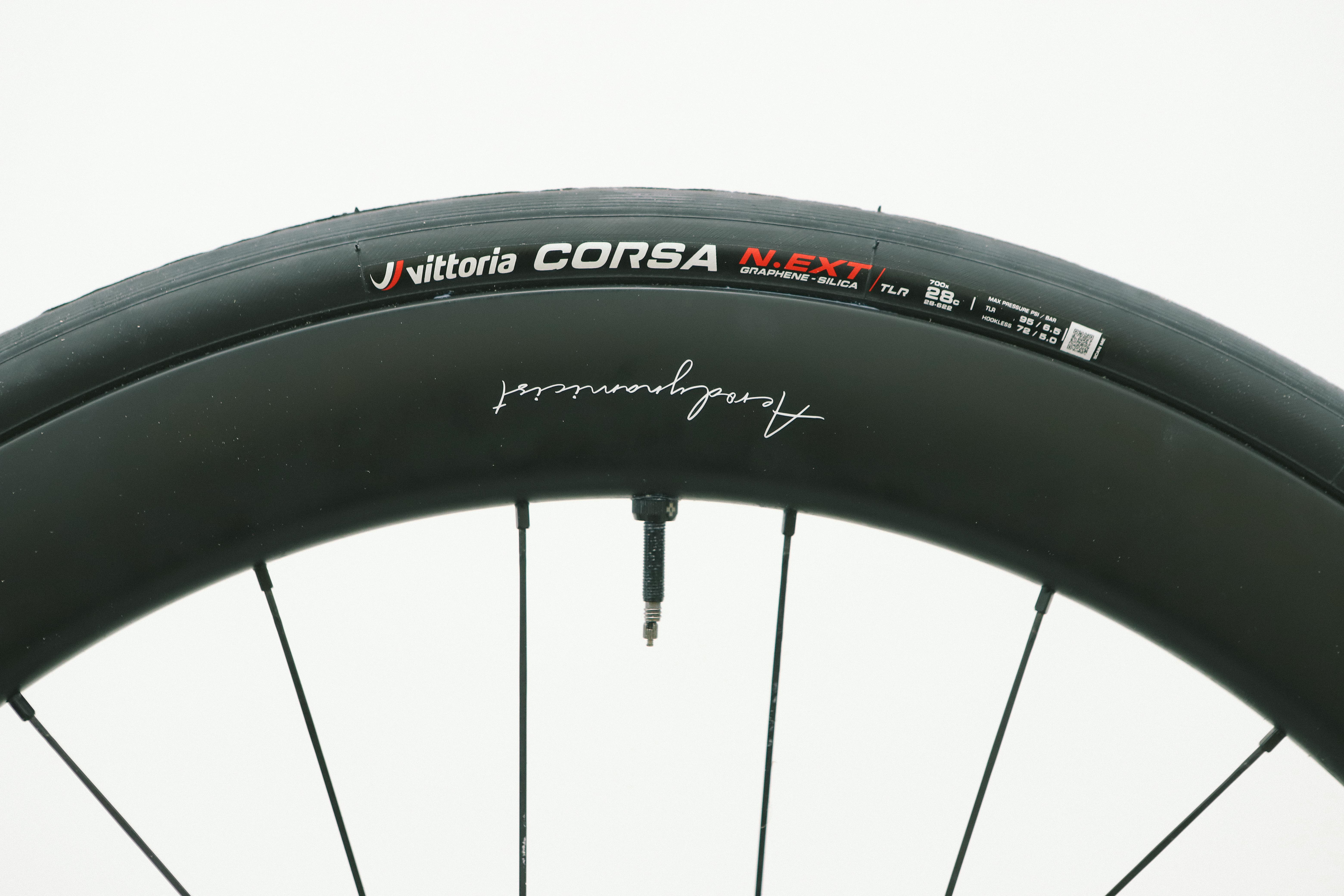
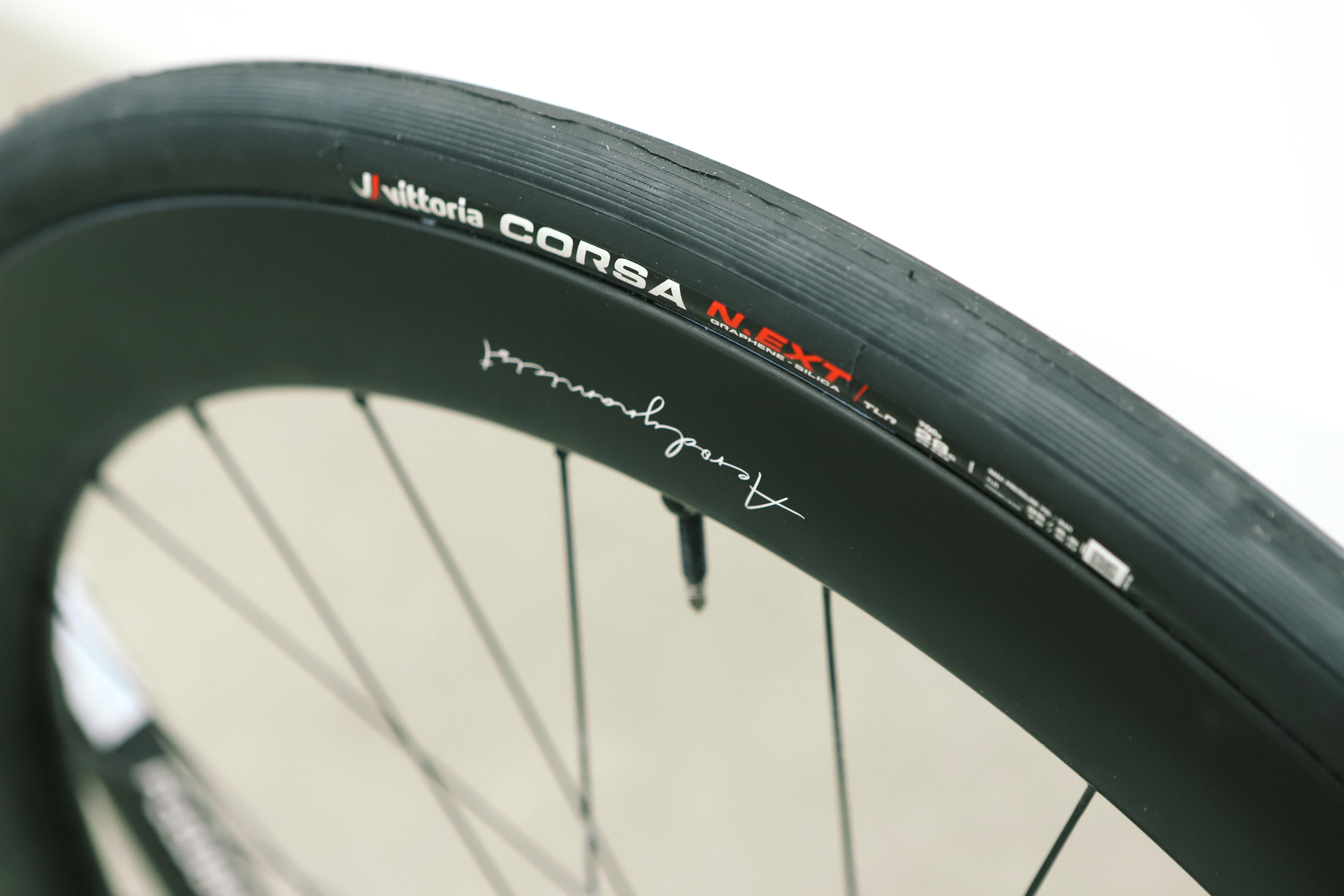
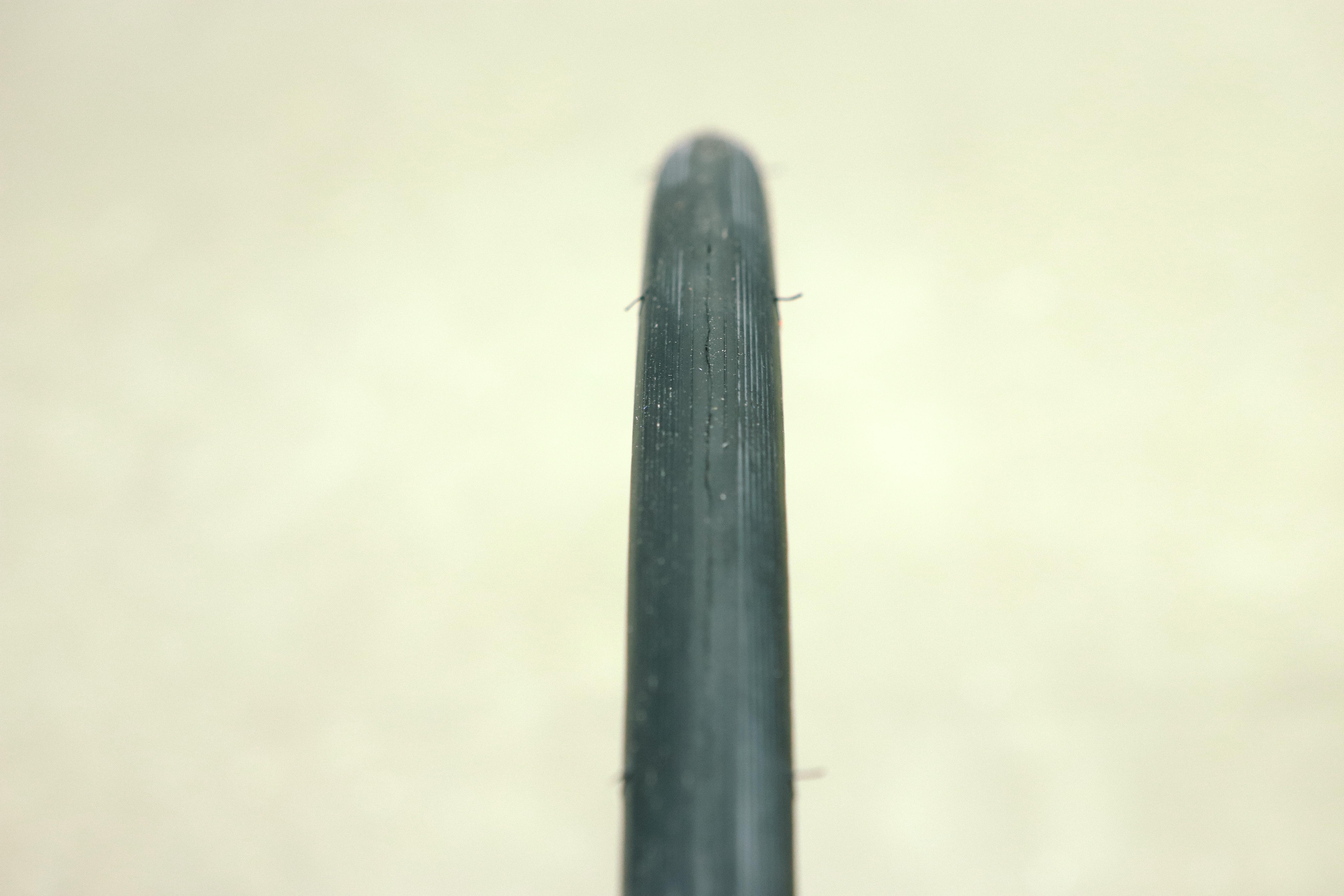
- Power at 9m/s: 16W
- Power at 11m/s: 24W
- Vs GP5000 S TR at 9m/s: +6W
- Vs GP5000 S TR at 11m/s: +8W
Perhaps the biggest upset so far as we go through the list is that the Corsa N.EXT, ostensibly Vittoria’s second-tier road tyre below any of the Corsa Pro range, is actually faster than the Corsa Pro Control by 6.6 Watts for a pair. It’s cheaper, it comes in a big range of sizes, and while I have no data to back it up the carcass should be more puncture-resistant too. If you’re considering the Corsa Pro I’d say go here instead, unless you absolutely must have those fancy cotton sidewalls for aesthetic or ride-feel reasons.
Specialized S-Works Mondo
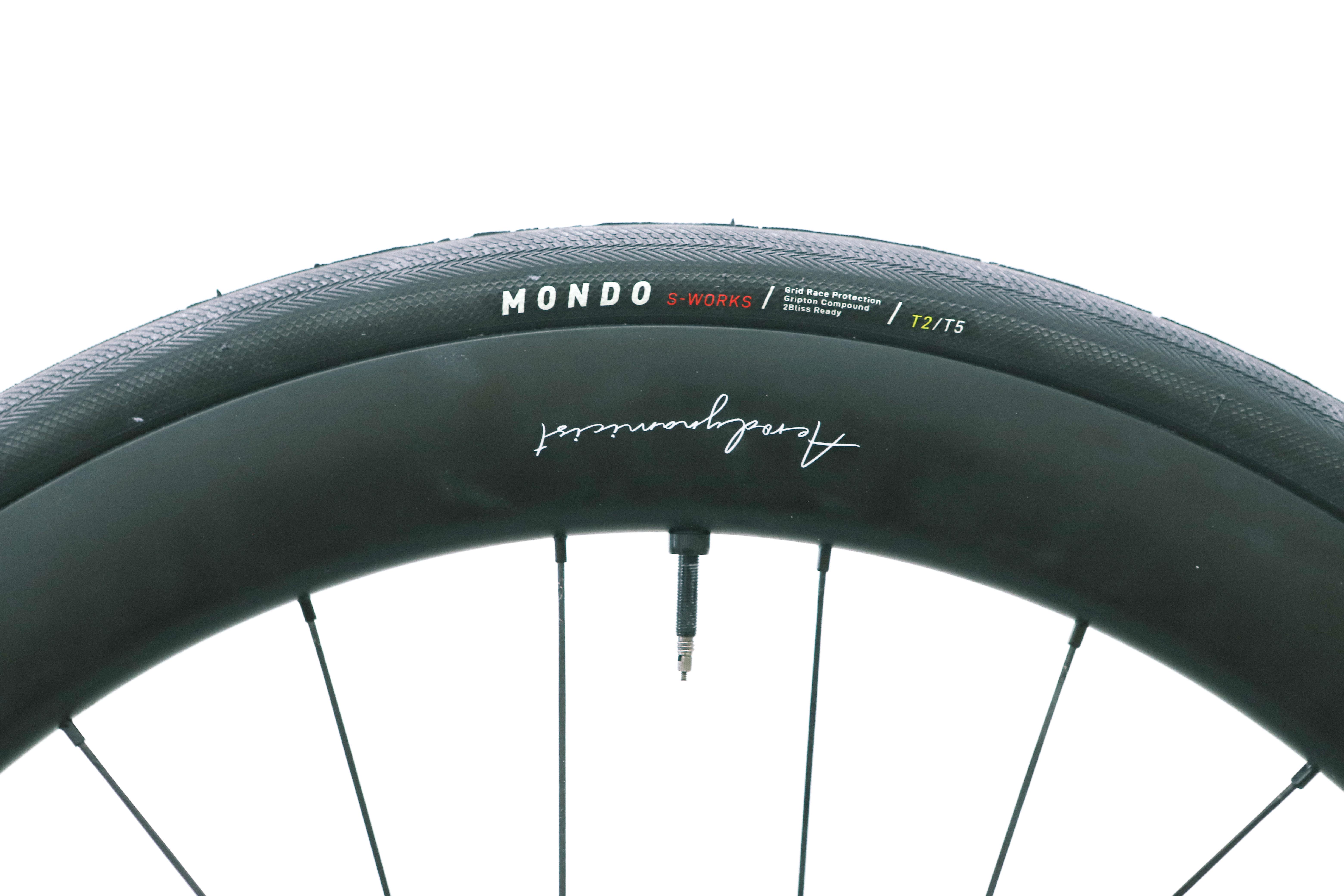
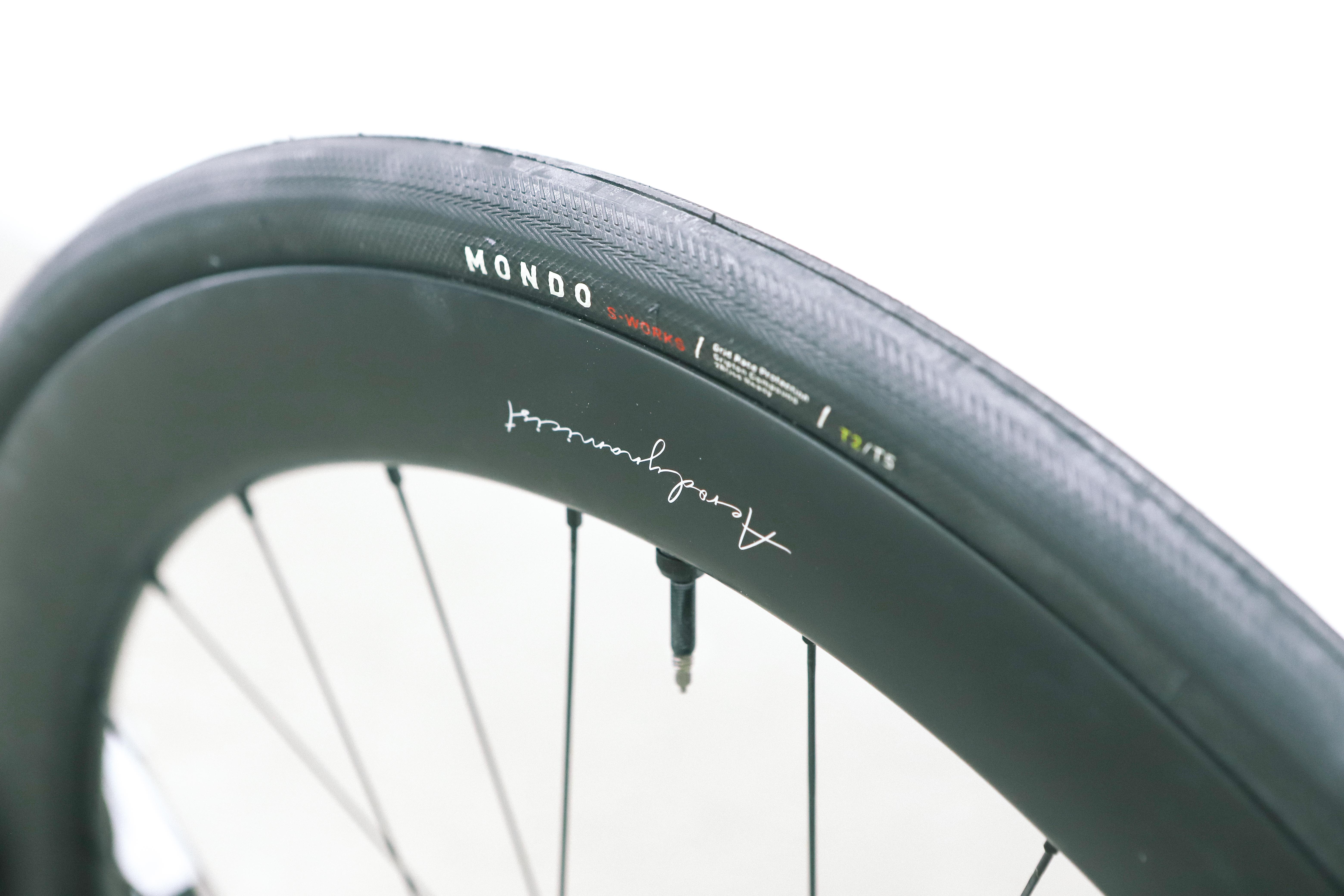
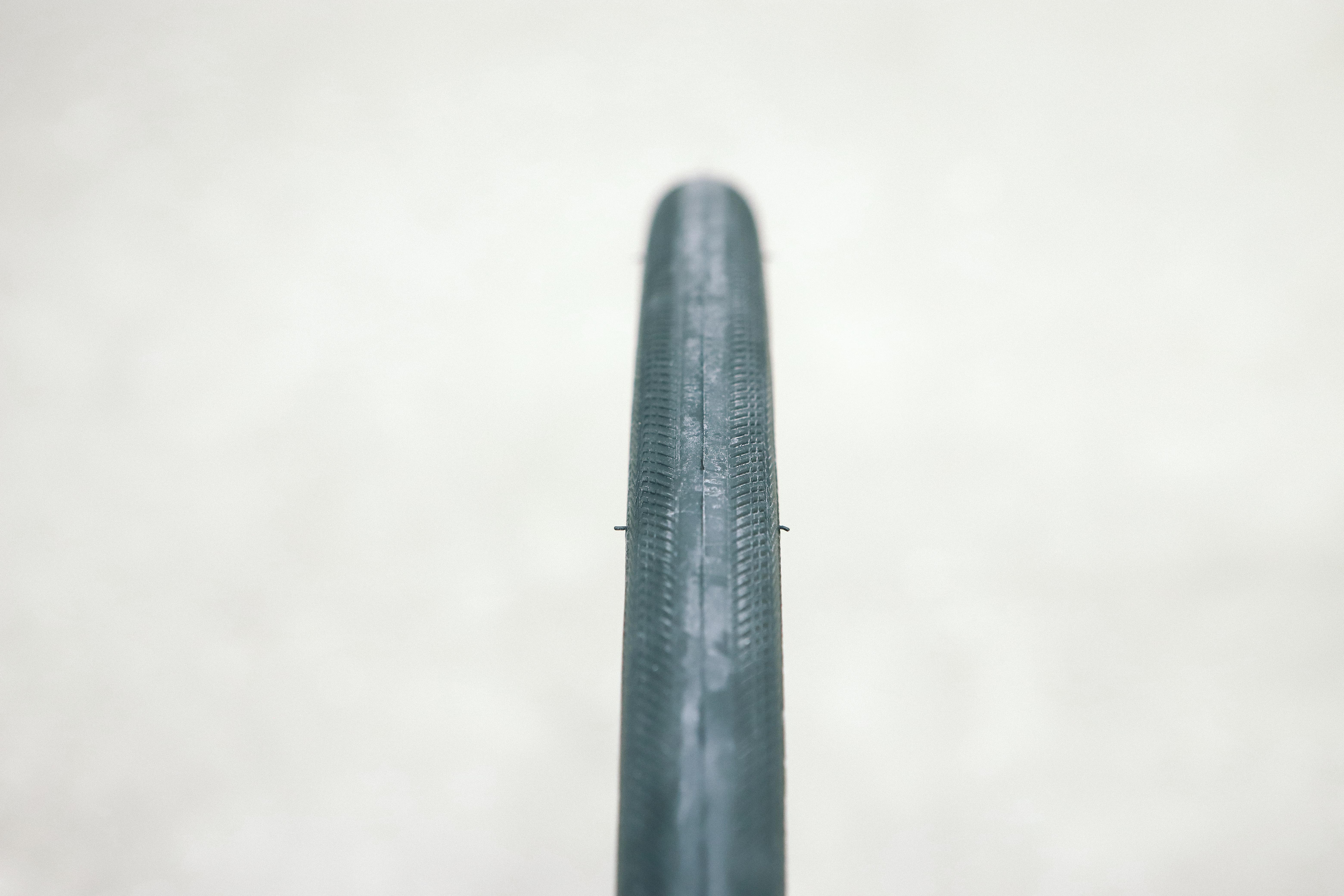
- Power at 9m/s: 15.5W
- Power at 11m/s: 24.1W
- Vs GP5000 S TR at 9m/s: +5.6W
- Vs GP5000 S TR at 11m/s: +8.1W
The slowest of the bunch from Specialized, and despite the S-Works moniker it is more a 'bad weather' tyre, and is decidedly a tyre that plays second fiddle to the Turbo Cotton range. It was developed, according to the brand, to allow Specialized sponsored riders to better tackle the cobbles of Flanders and Roubaix, and comes in a 35c width, which is wider than most. The brand’s previous cobble tyre, the Hell of the North version of the Turbo Cotton, is still one of the outright fastest tyres on test, though is limited to inner tubes and a 28c width - too narrow for most through the Arenberg Trench.
Goodyear Eagle F1 R
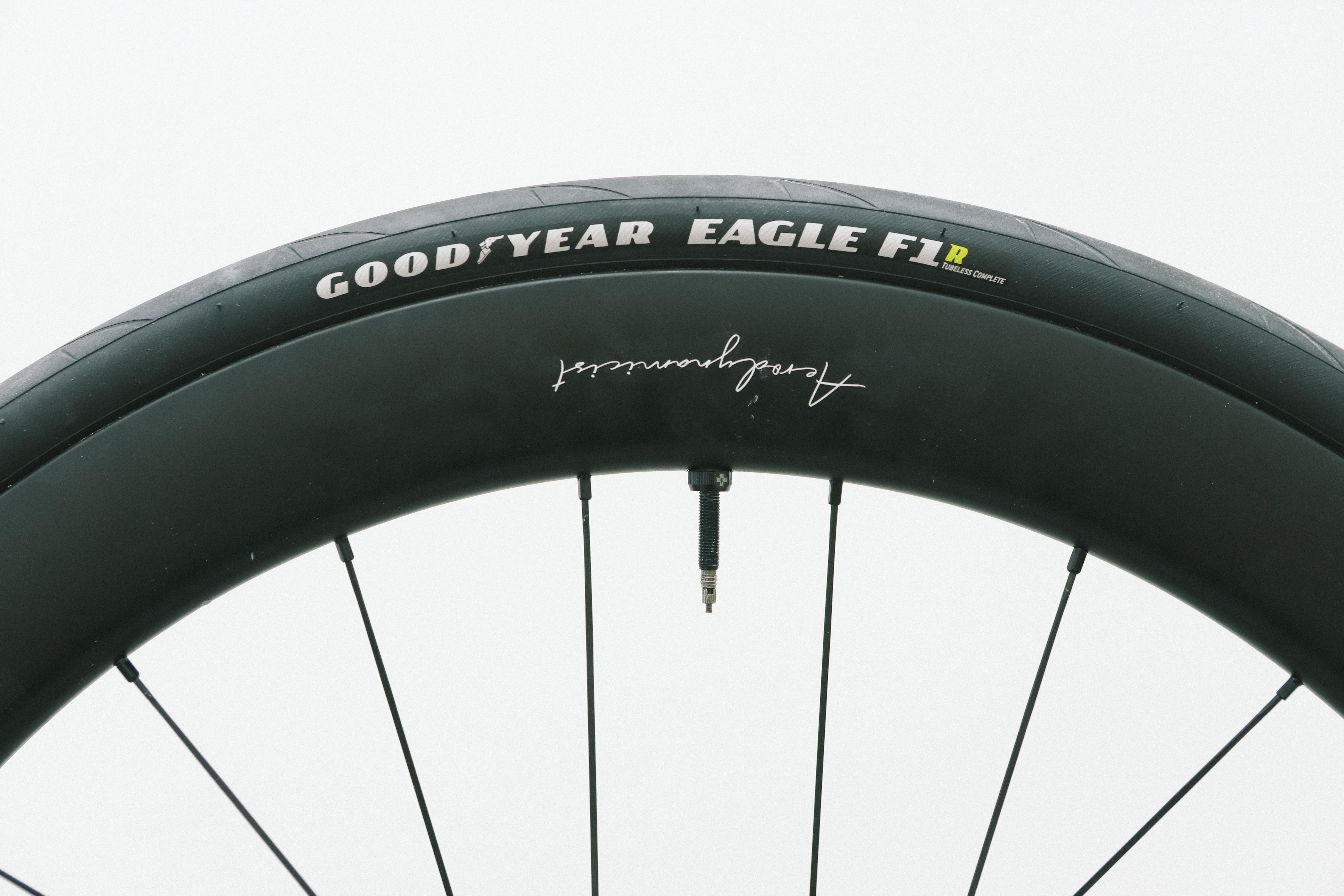
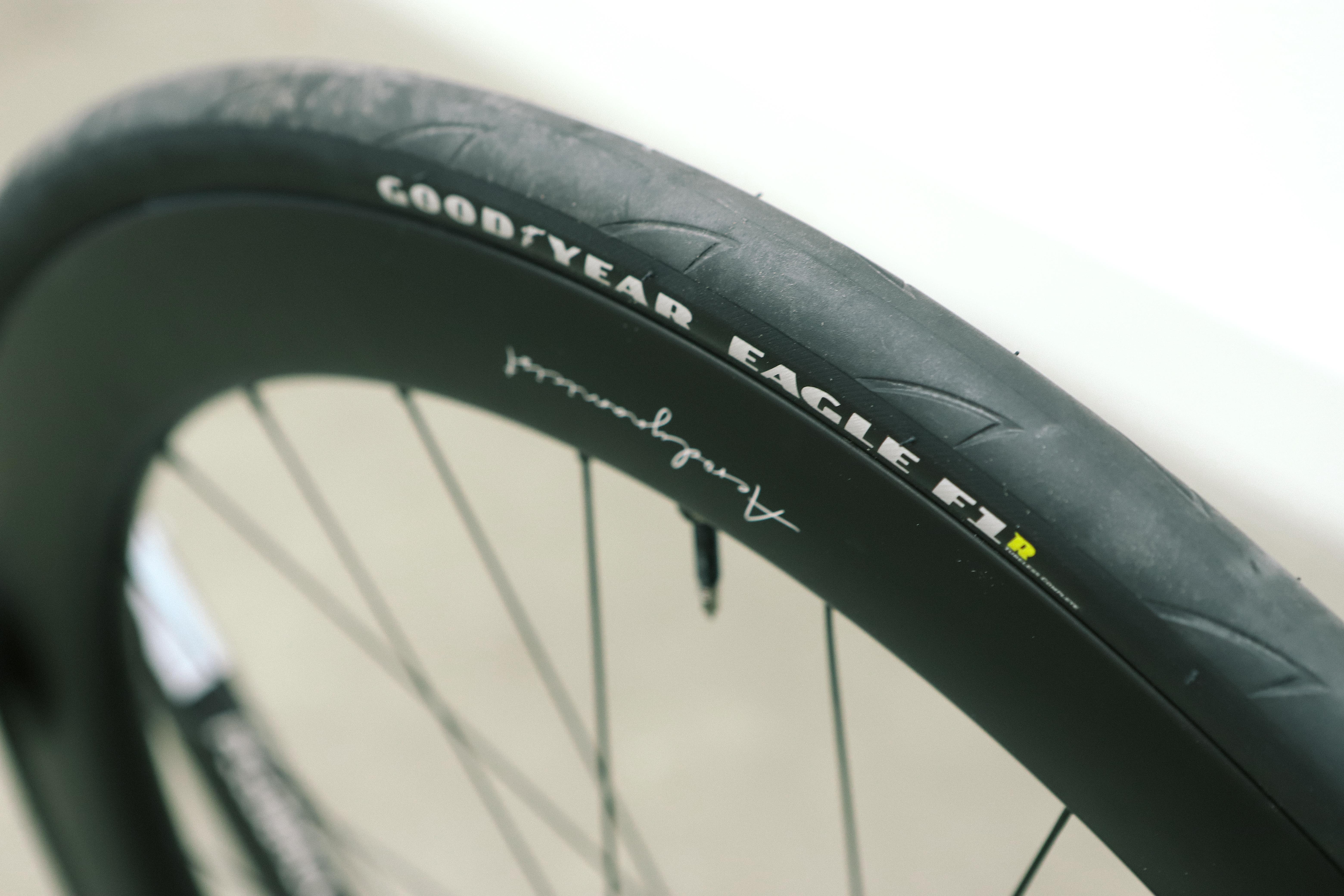
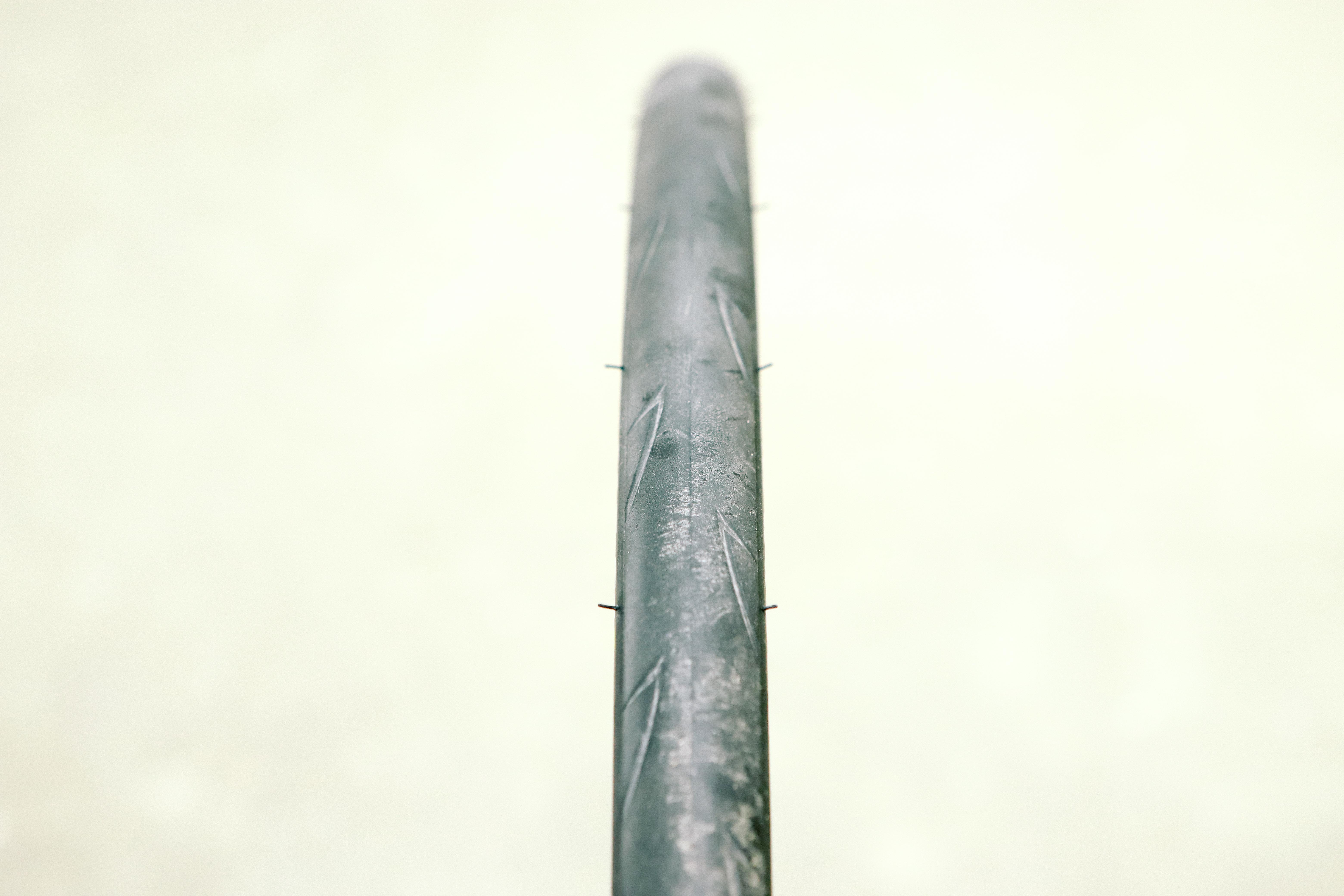
- Power at 9m/s: 15.5W
- Power at 11m/s: 22.9W
- Vs GP5000 S TR at 9m/s: +5.6W
- Vs GP5000 S TR at 11m/s: +6.9W
The Eagle F1 R is sold as a high-performance road tyre, but is overshadowed somewhat by the introduction of the Eagle F1 Supersport R. The difference between the two is worth around 4 Watts a pair, and at the time of writing, they are similarly priced. If you’re after speed and are a fan of Goodyear then I’d say go for the Supersport version.
Hutchinson Blackbird
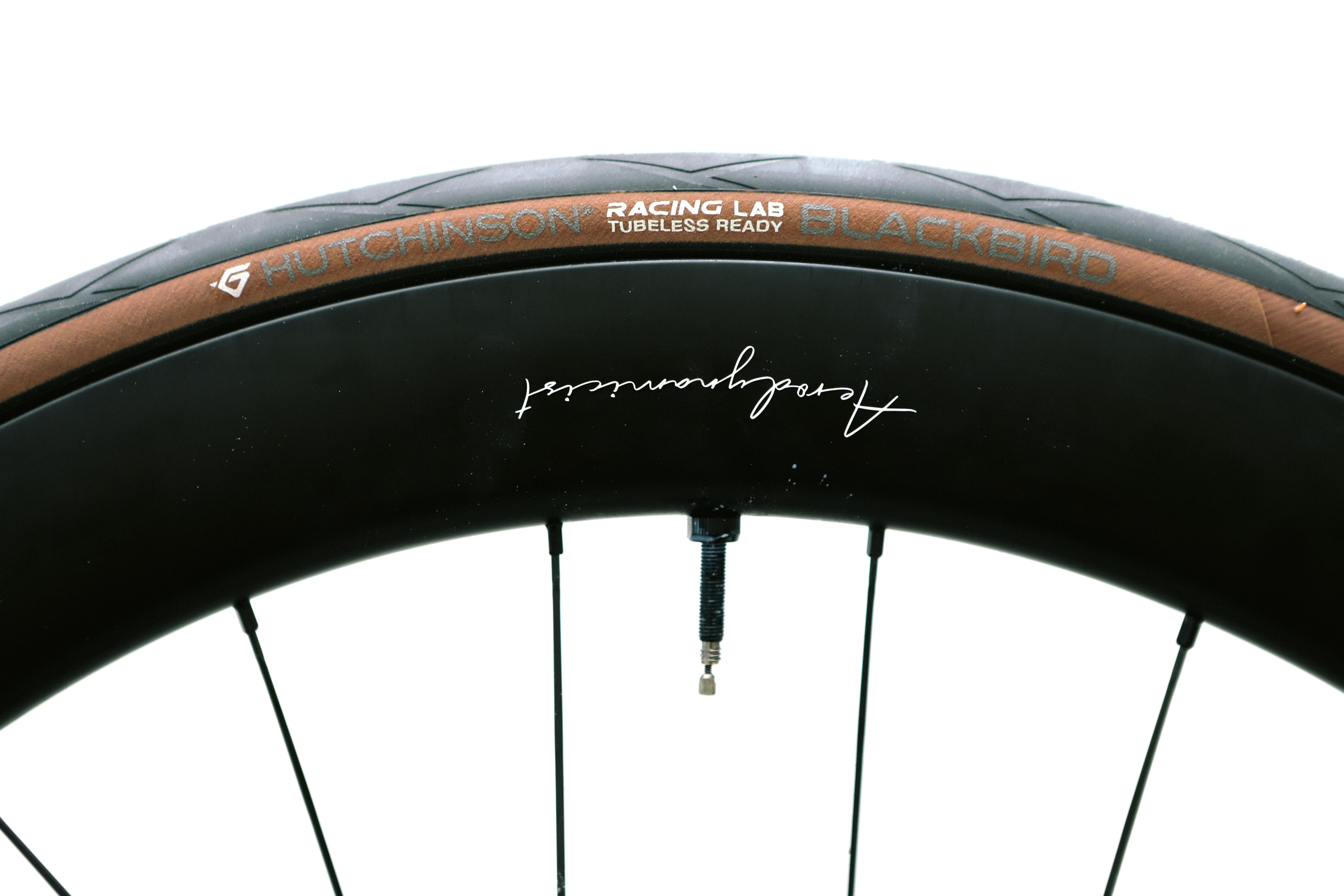
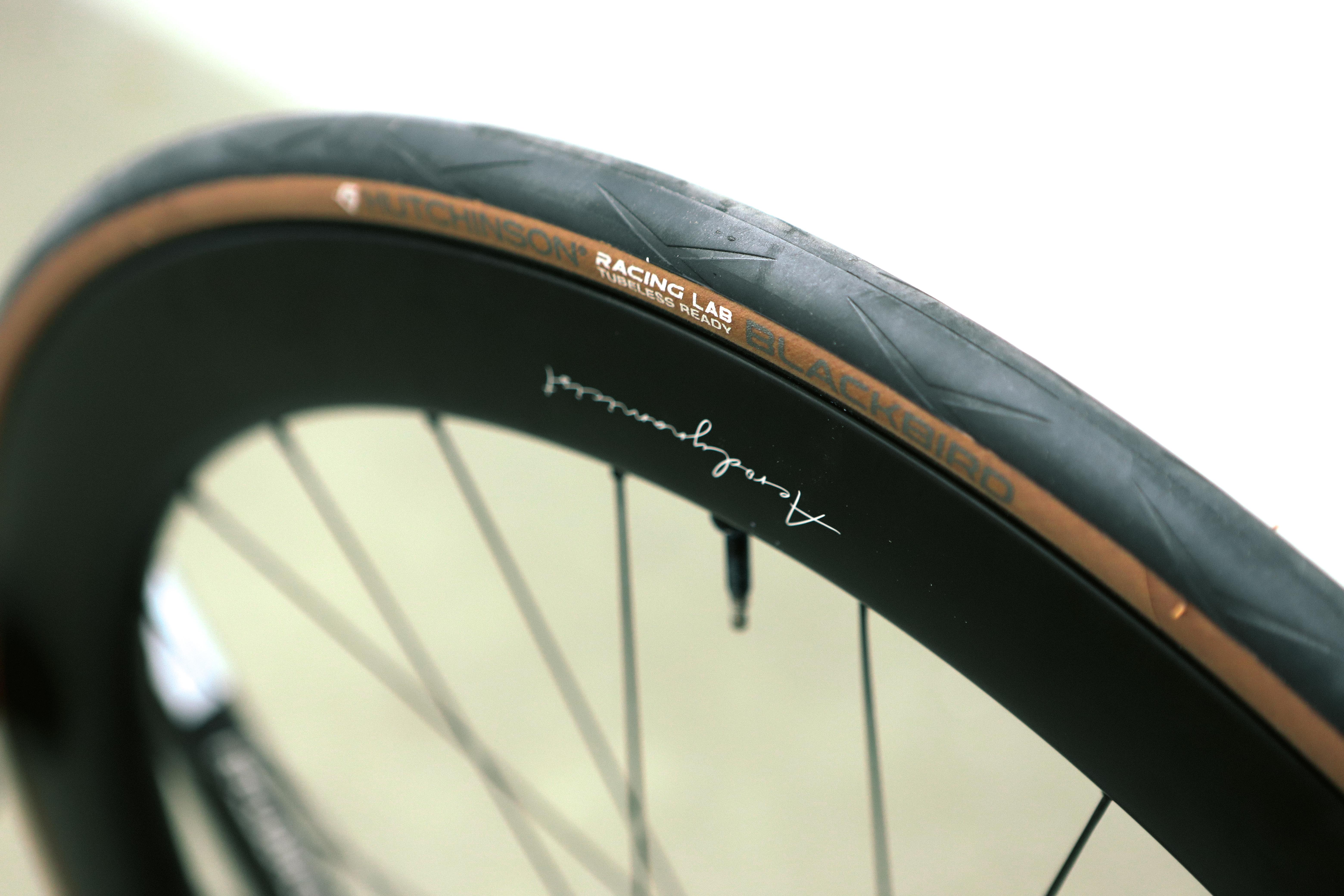

- Power at 9m/s: 14.8W
- Power at 11m/s: 22.3W
- Vs GP5000 S TR at 9m/s: +4.9W
- Vs GP5000 S TR at 11m/s: +6.3W
A relatively new tyre on the scene, and another billed as an all-around performance option. It is near the bottom end of the general race tyre cohort, but accounting for the error margin you could view it as being only a hair slower than the Schwalbe Pro One TLE, which is raced at WorldTour level by Canyon-SRAM. It is also among the cheaper tyres in the test, too, which is undeniably an important factor for many of us.
Schwalbe Pro One TLE
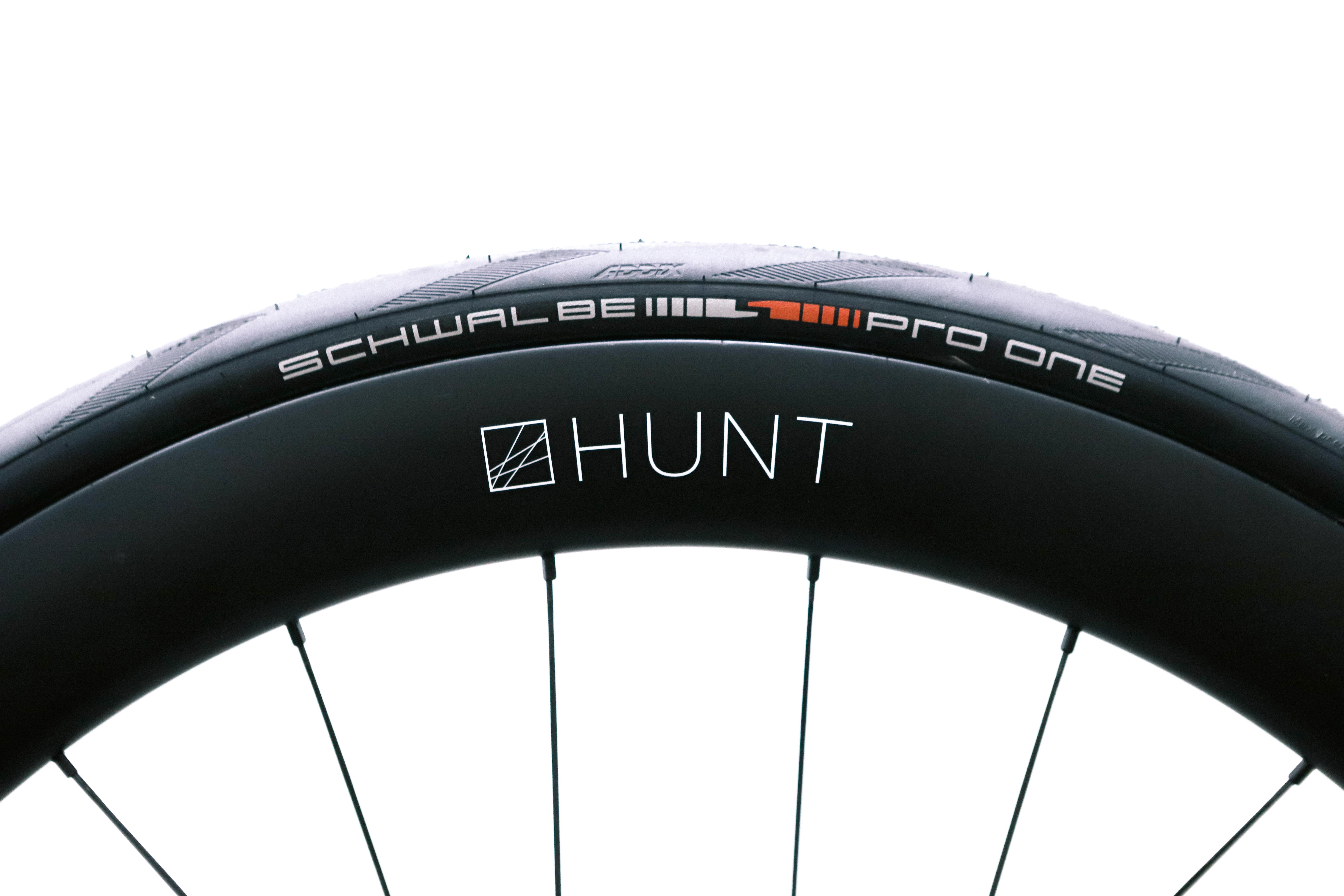
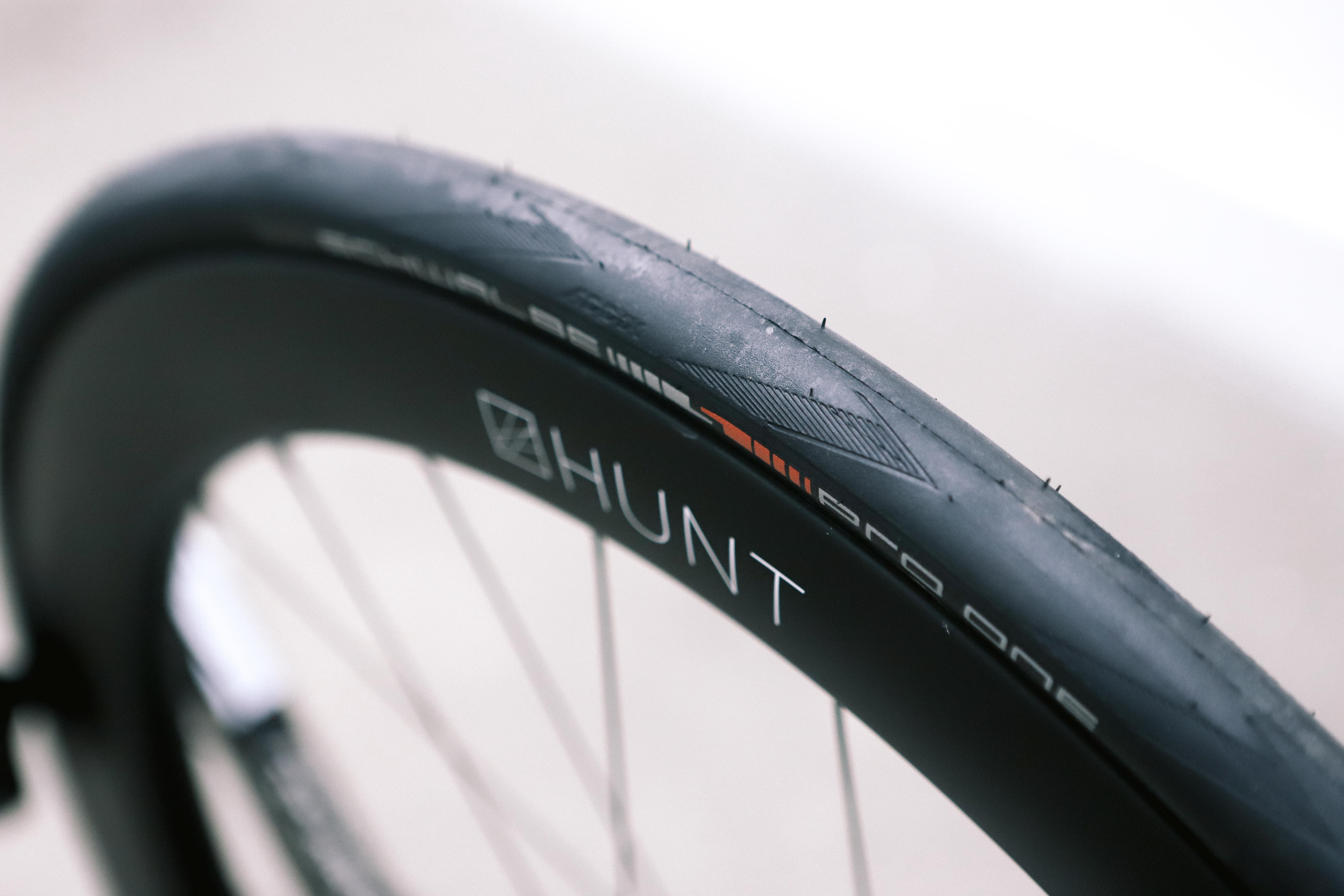
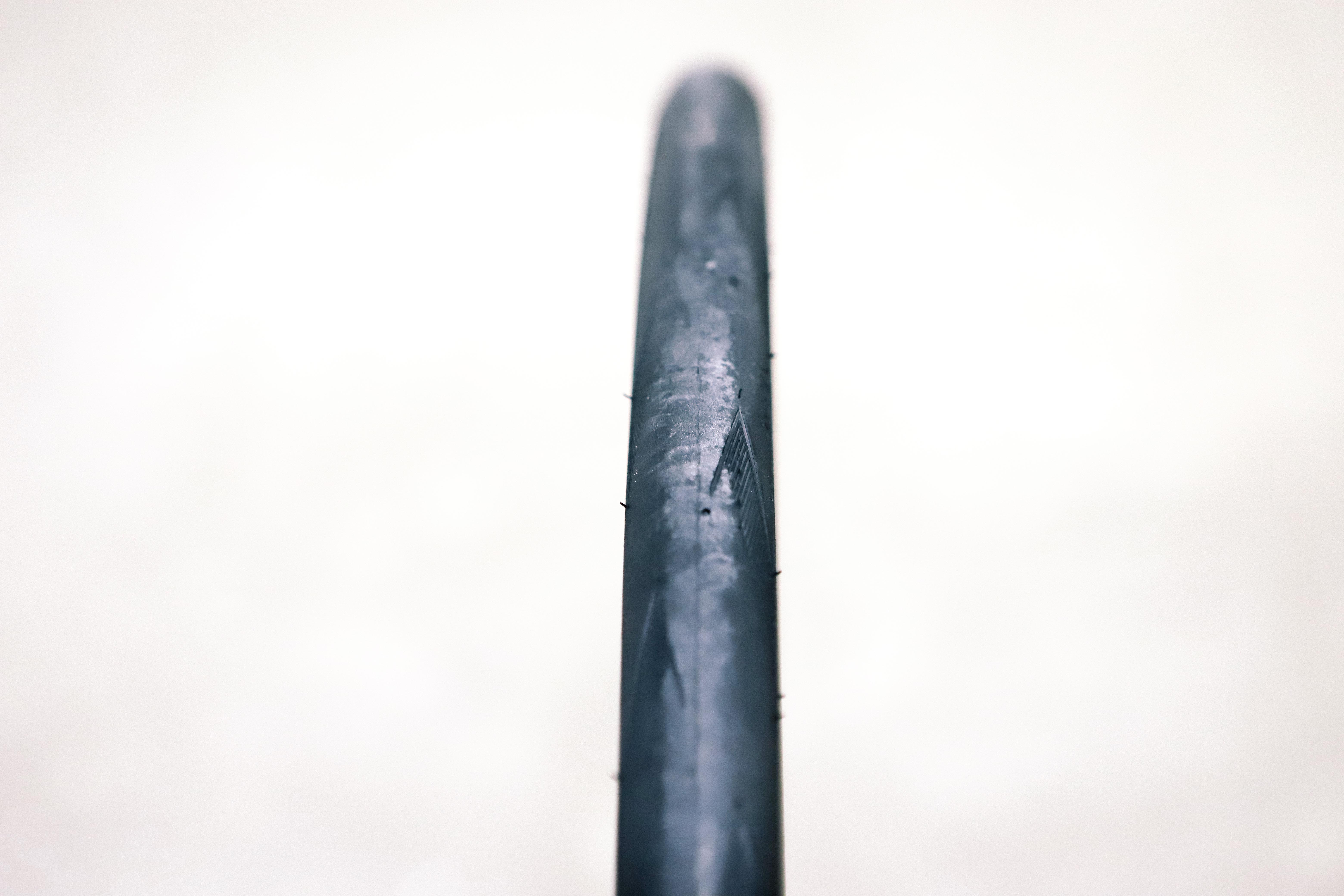
- Power at 9m/s: 14.5W
- Power at 11m/s: 21.7W
- Vs GP5000 S TR at 9m/s: +4.6W
- Vs GP5000 S TR at 11m/s: +5.7W
Schwalbe’s all-round race tyre is seen shodding the wheels of Canyon-SRAM and Uno X, but it is also the slowest on test of the tyres used in the women’s WorldTour, meaning these riders are suffering a wattage penalty of 11.4 Watts over Continental sponsored teams based on our data. At race pace the error bars are such that the Corsa Pro could also have been the slowest, but this is the order they came out on the day.
Specialized S-Works Turbo 2BR T2/T5
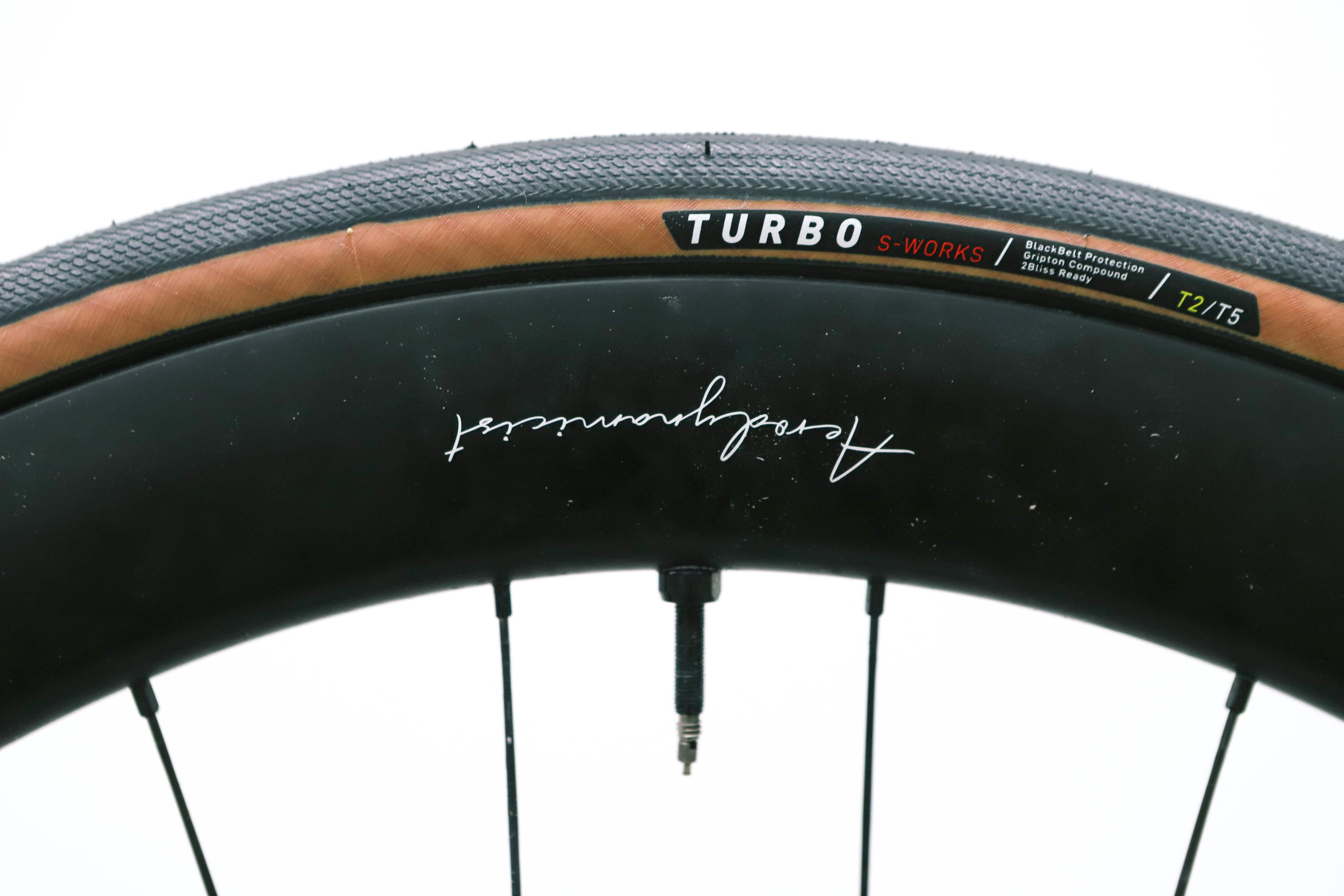
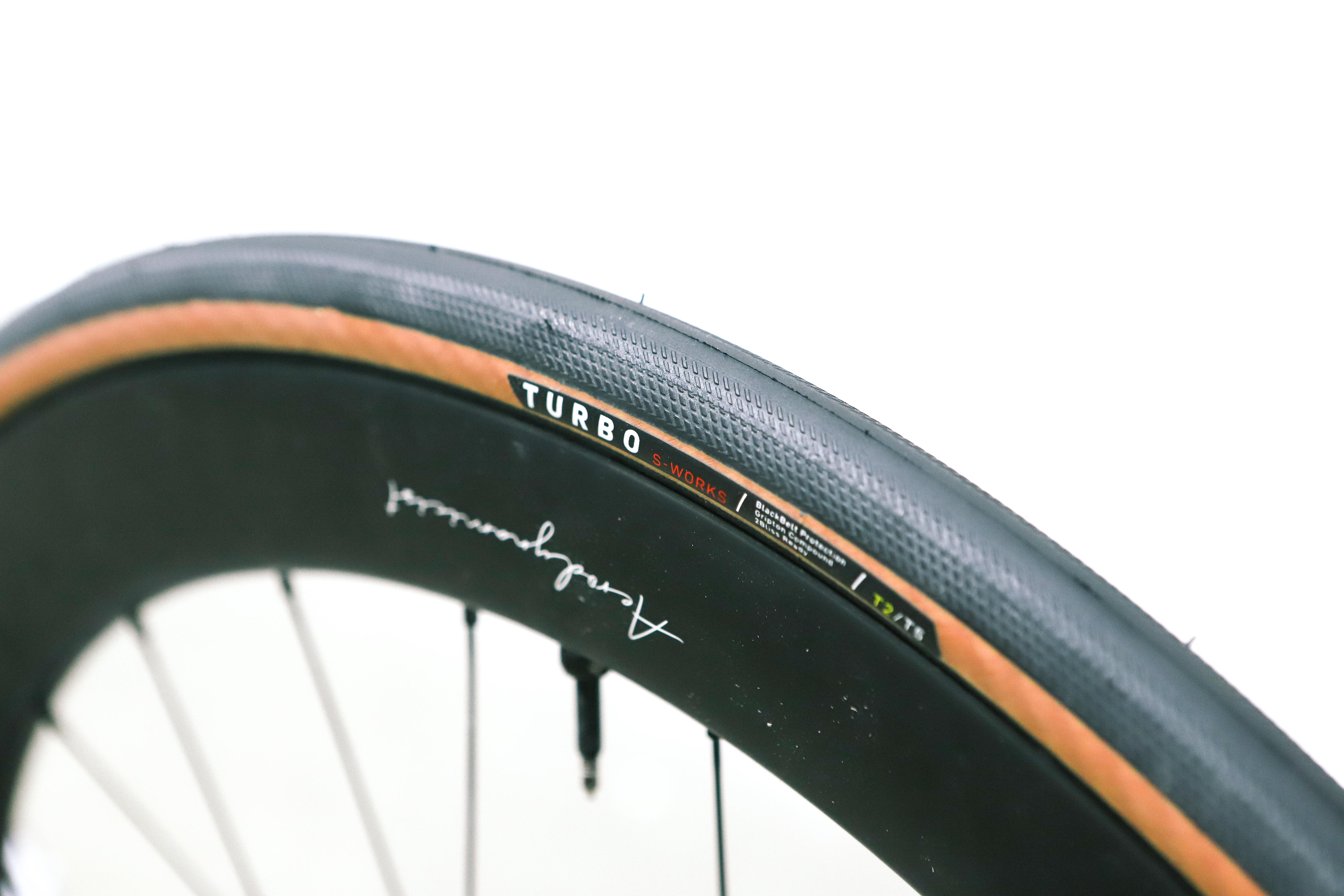
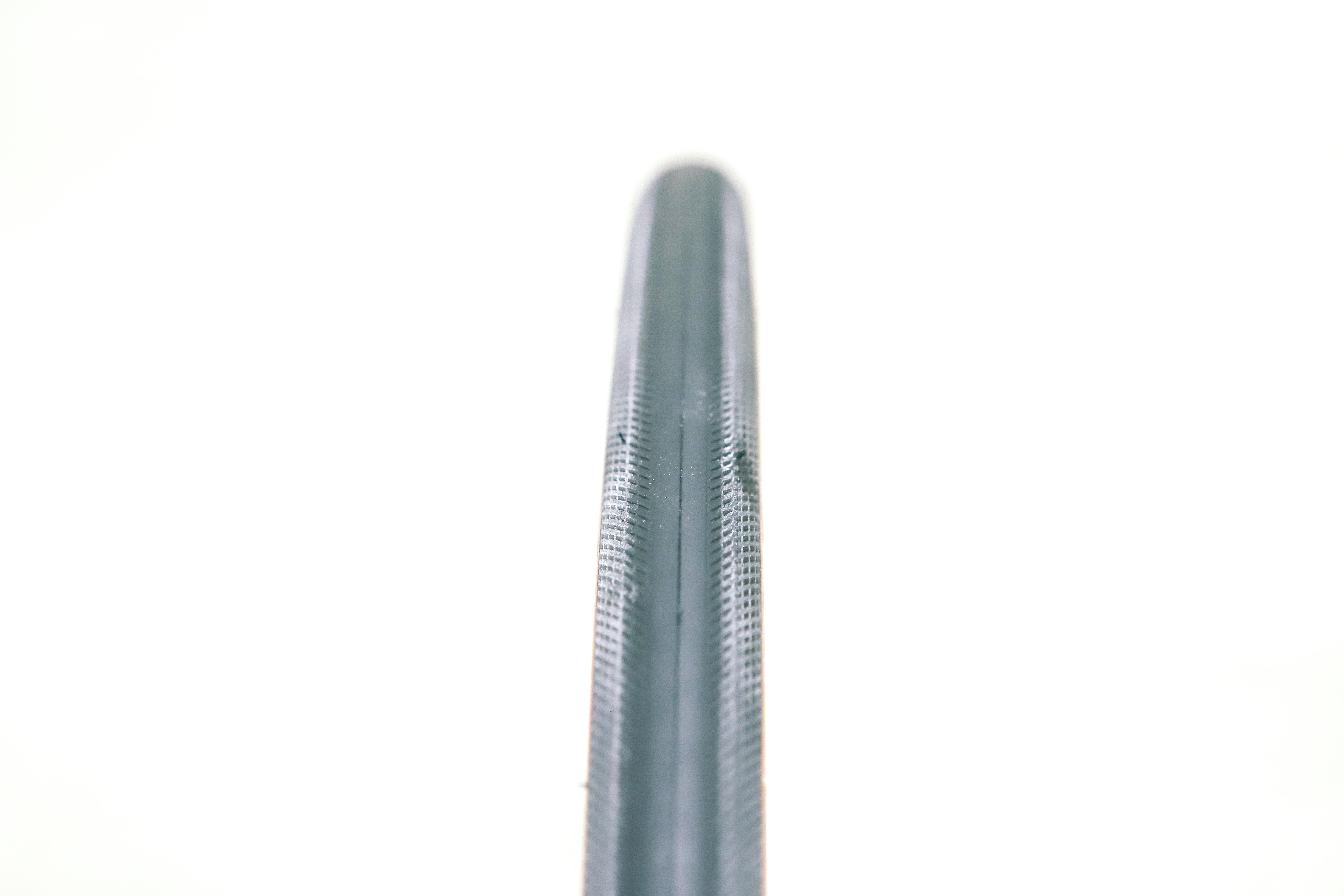
- Power at 9m/s: 14.3W
- Power at 11m/s: 22.3W
- Vs GP5000 S TR at 9m/s: +4.4W
- Vs GP5000 S TR at 11m/s: +6.3W
Of all the Specialized tyres, this is perhaps the one most of us would consider buying. It has the ‘Turbo’ brand going for it, as well as being tubeless ready, which Turbo Cottons aren’t. While most riders on Specialized sponsored teams opt for the Turbo Cotton, some choose to go tubeless and this is almost certainly the tyre they'll be using, at a cost of 17.8 Watts per pair of tyres at our higher test speed, but at the same time gaining the ability to seal small punctures.
Vittoria Corsa Pro
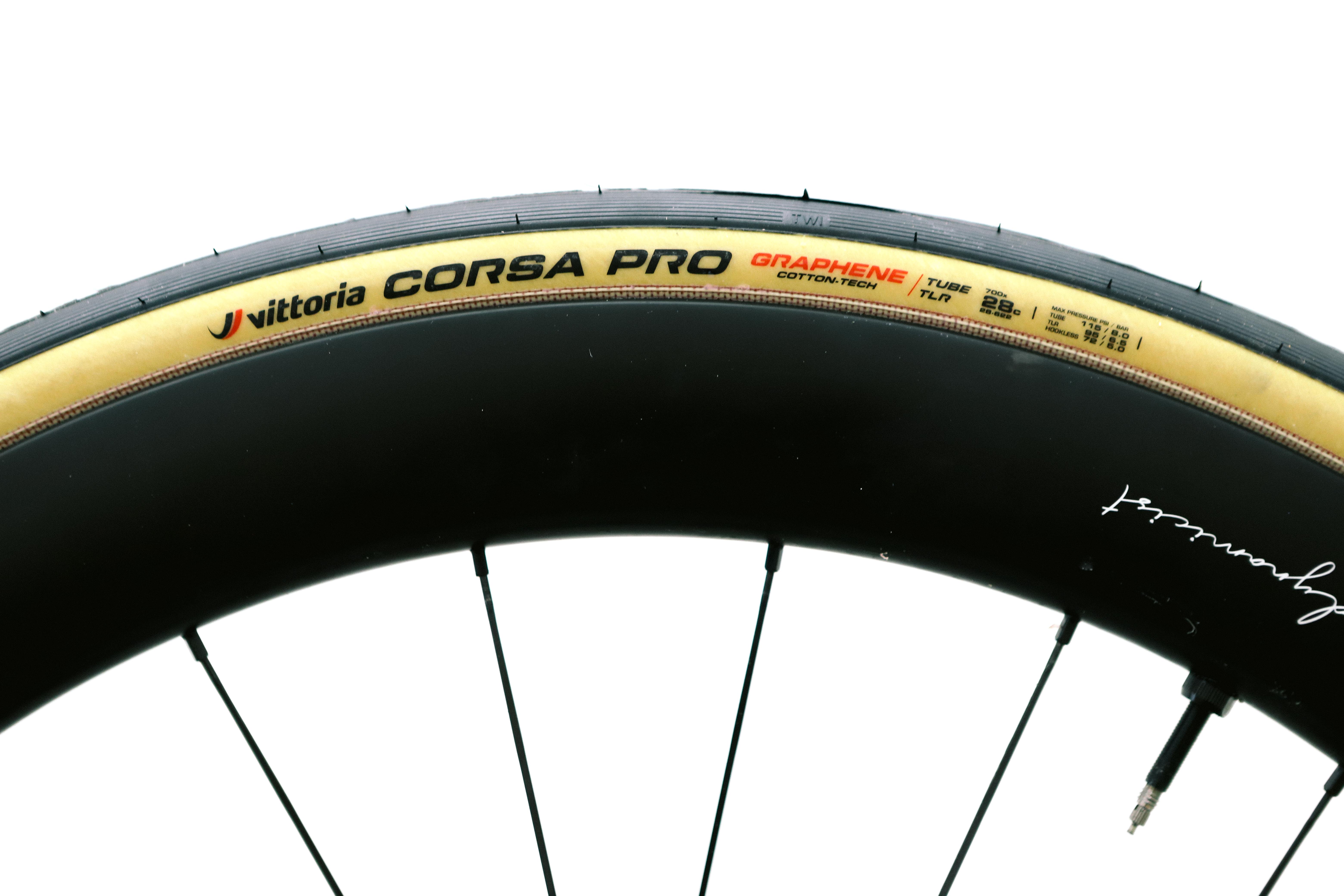
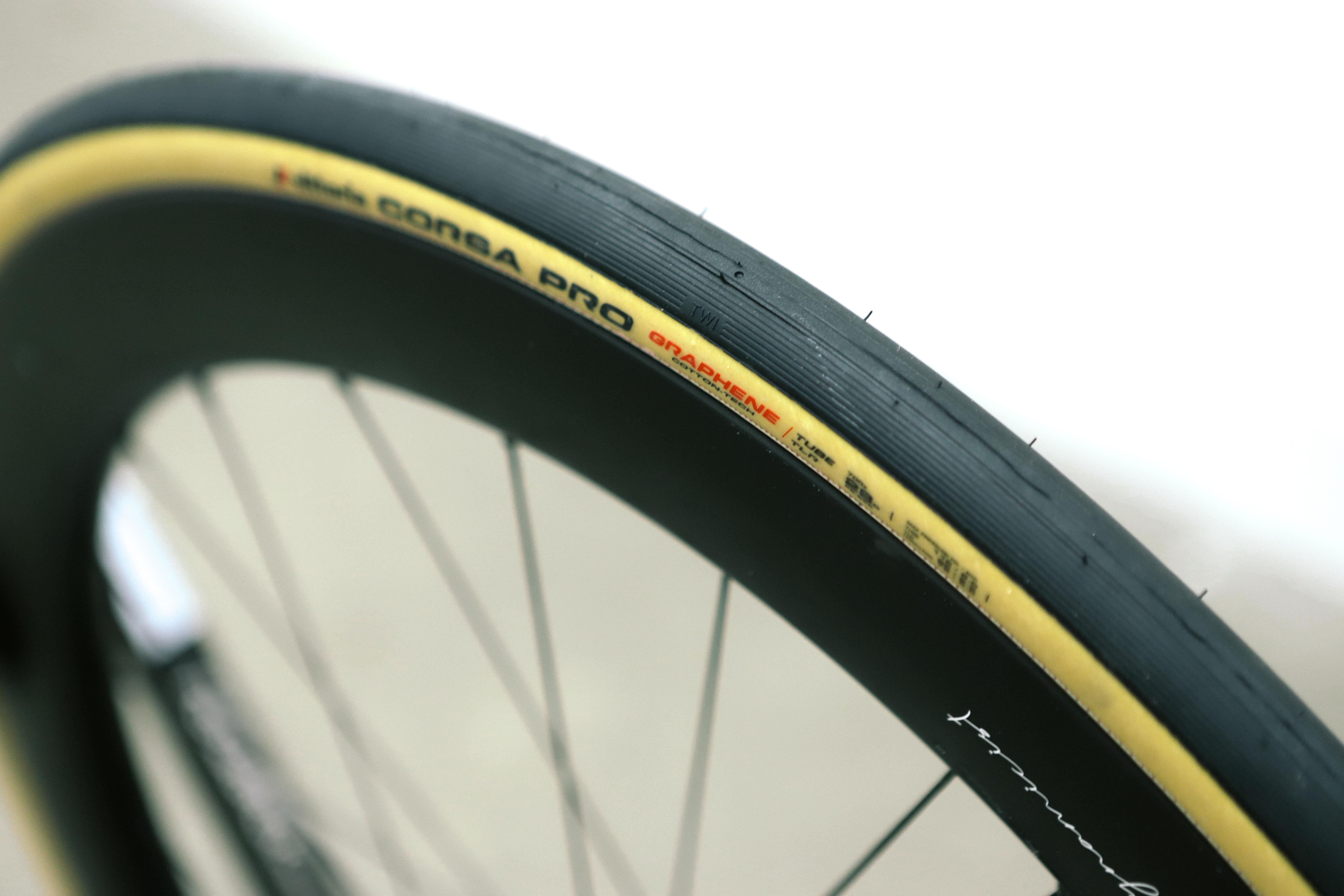
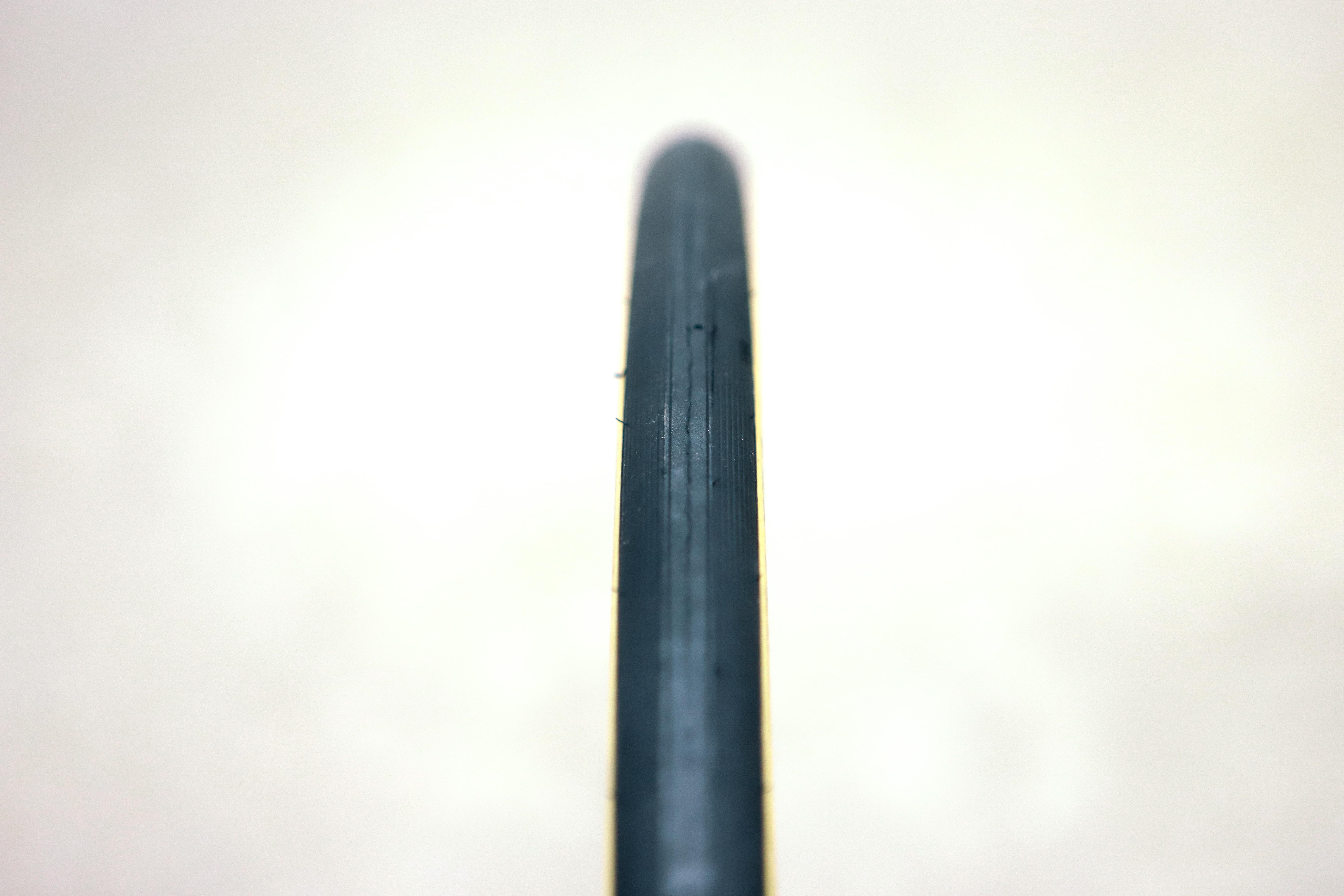
- Power at 9m/s: 13.7W
- Power at 11m/s: 20.9W
- Vs GP5000 S TR at 9m/s: +3.7W
- Vs GP5000 S TR at 11m/s: +4.9W
Having personally reviewed these I can attest to the fact that they are beautifully smooth and supple, which often translates to things ‘feeling’ fast. By the numbers though, one of the most used tyres at the top level of our sport, and a set that bagged a clean sweep of Grand Tour GC wins in 2023, is coming at a 10-watt penalty over the GP5000 S TR.
Pirelli P-Zero Race TLR RS
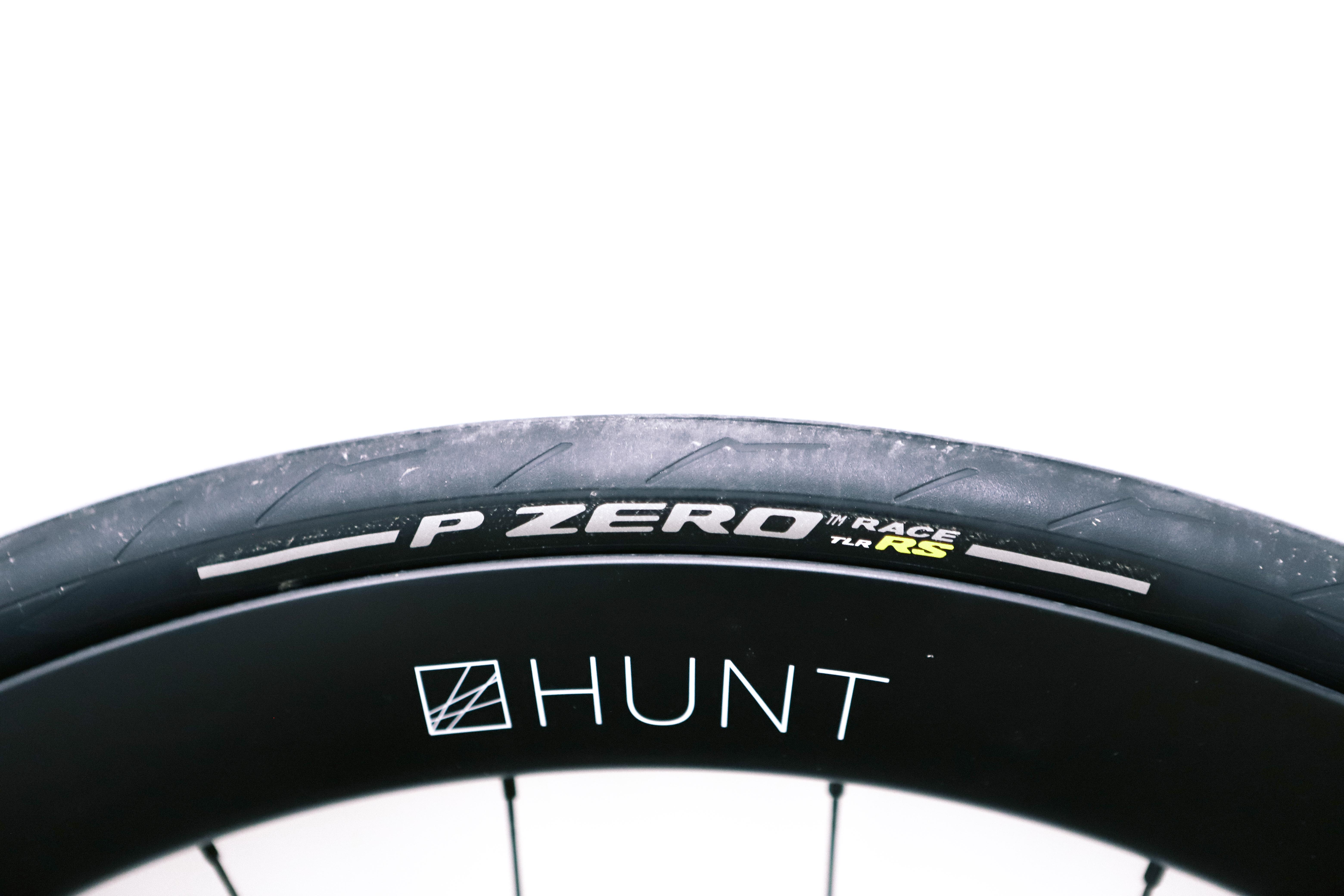
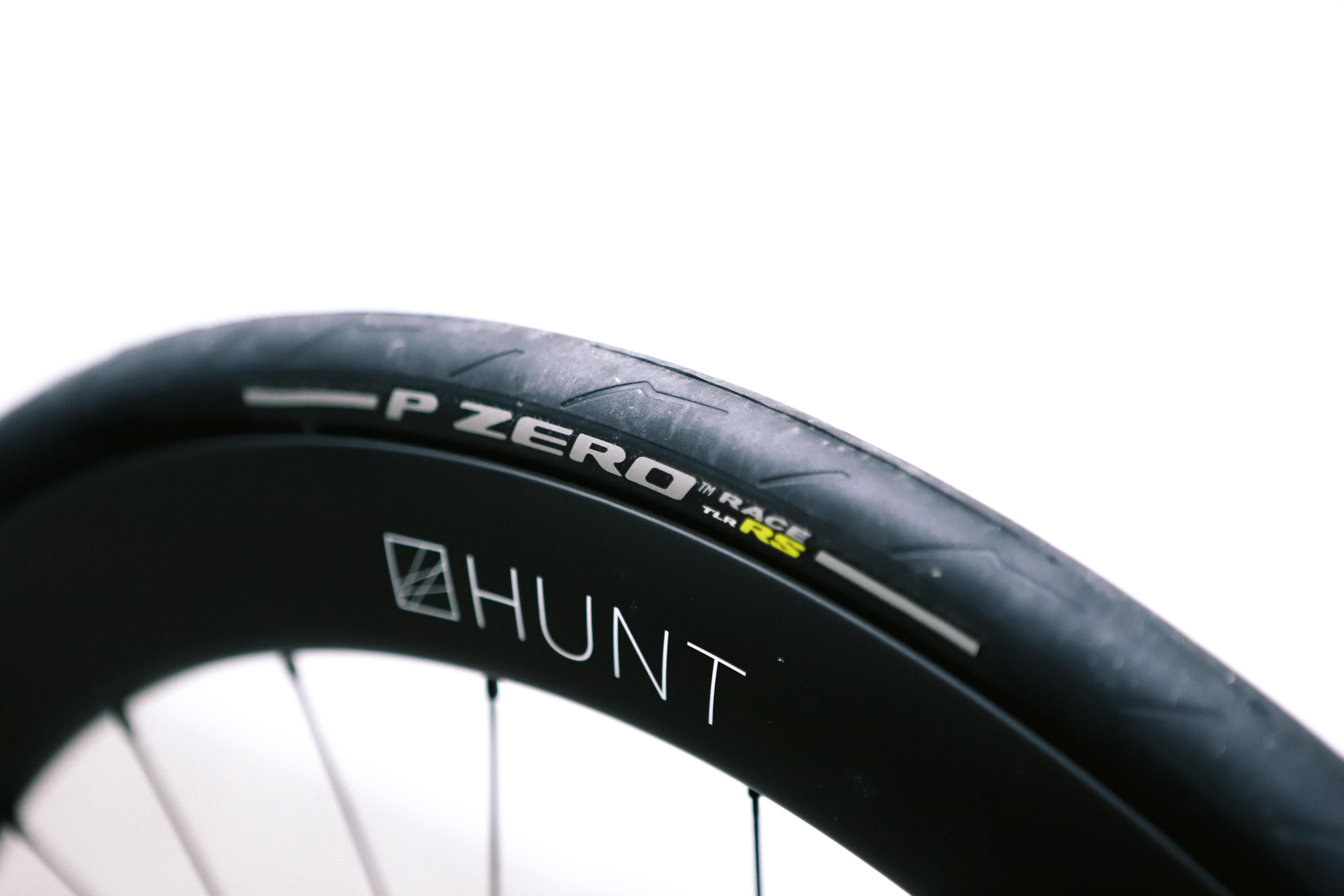

- Power at 9m/s: 13.5W
- Power at 11m/s: 19.4W
- Vs GP5000 S TR at 9m/s: +3.6W
- Vs GP5000 S TR at 11m/s: +3.4W
Launched at the start of 2023 under Lidl-Trek sporting look-at-me #Prototype sidewall logos, Pirelli’s latest top-end tyre happily sits mid-table. It is worth remembering that this list is ranked by the 9m/s data, and by the faster, more WorldTour-y speeds it placed higher. At either speed, the error bars show it could have moved up or down several places, so perhaps it’s best to just think of it as functionally the same as its near neighbours.
Goodyear Eagle F1 Supersport R
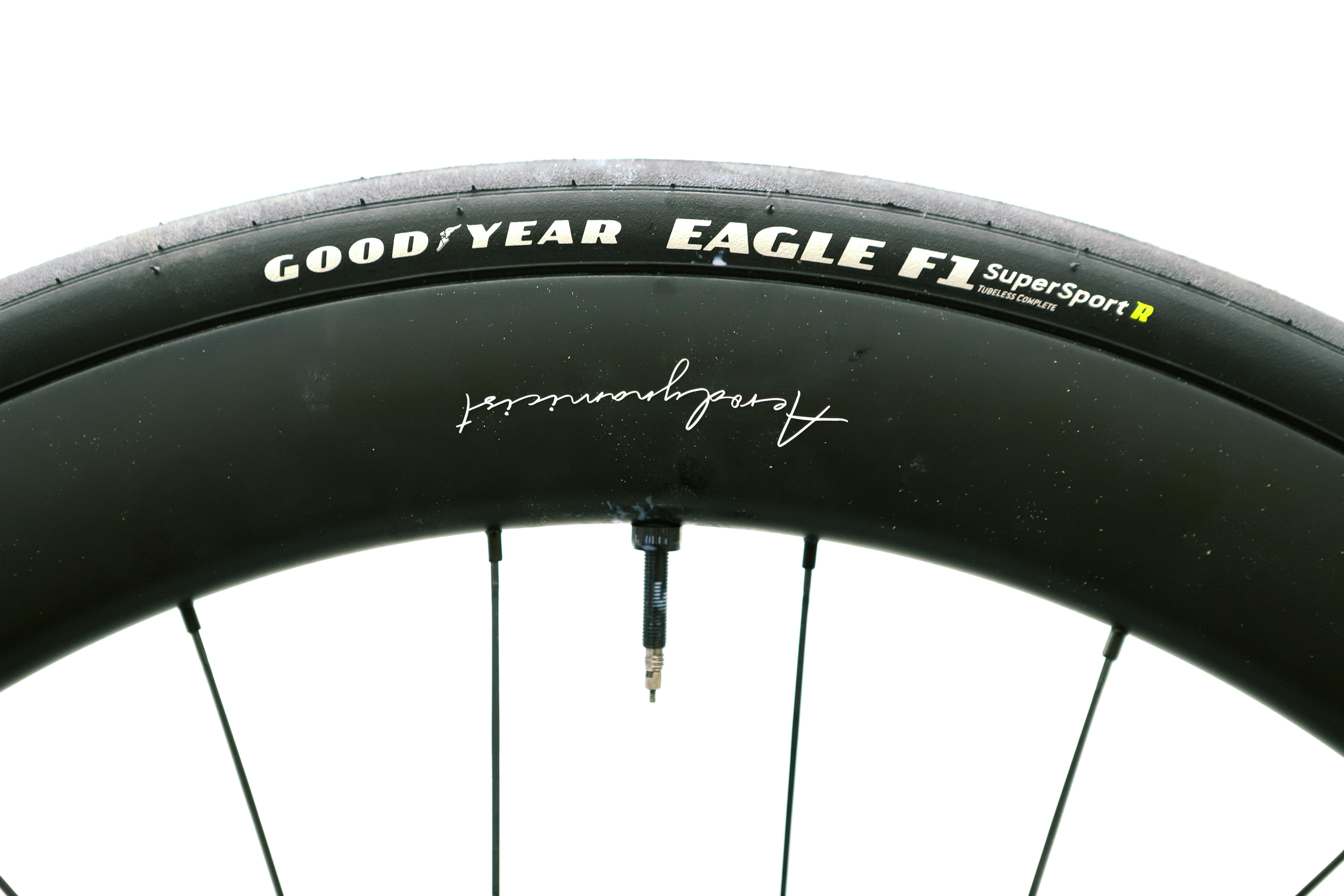
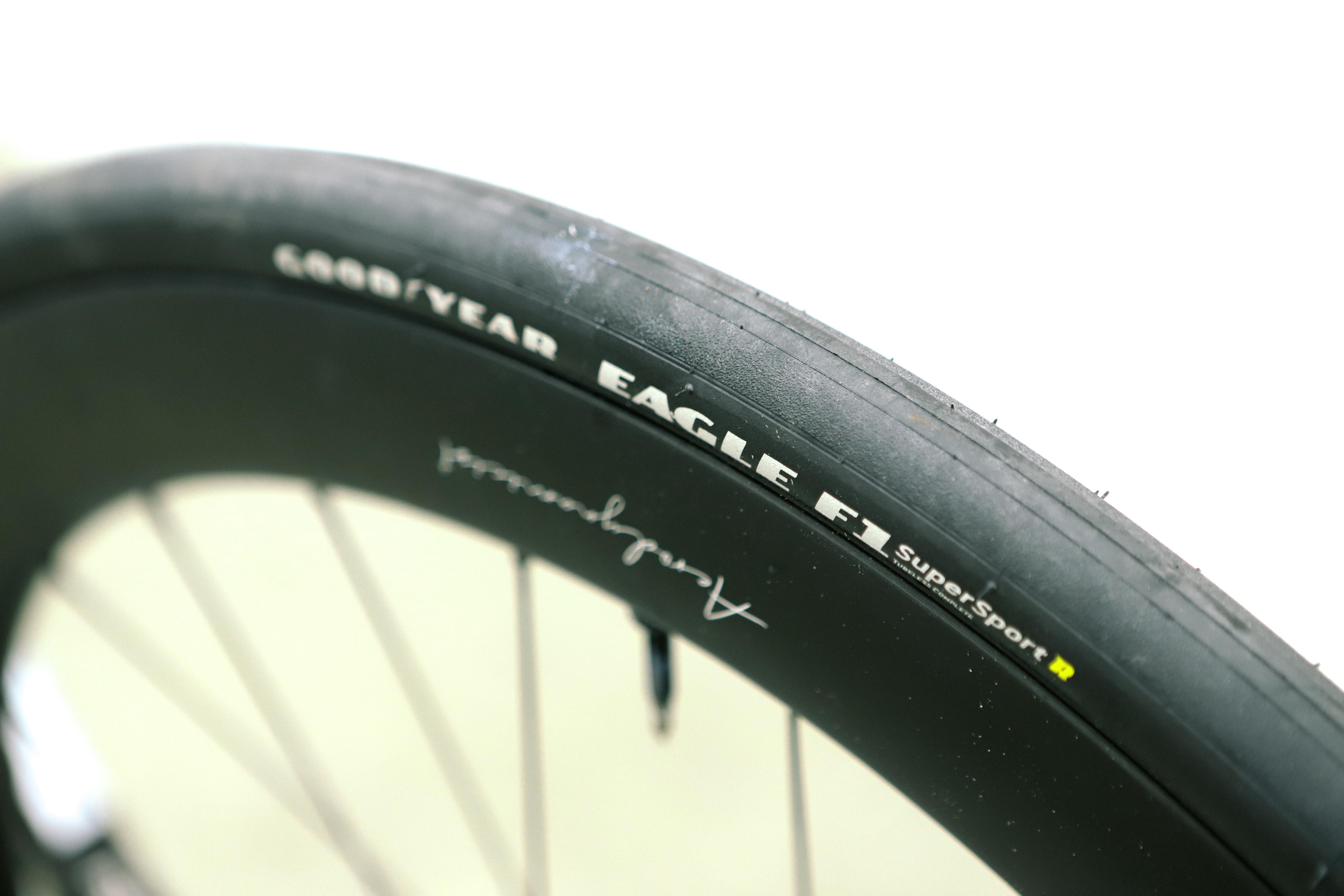
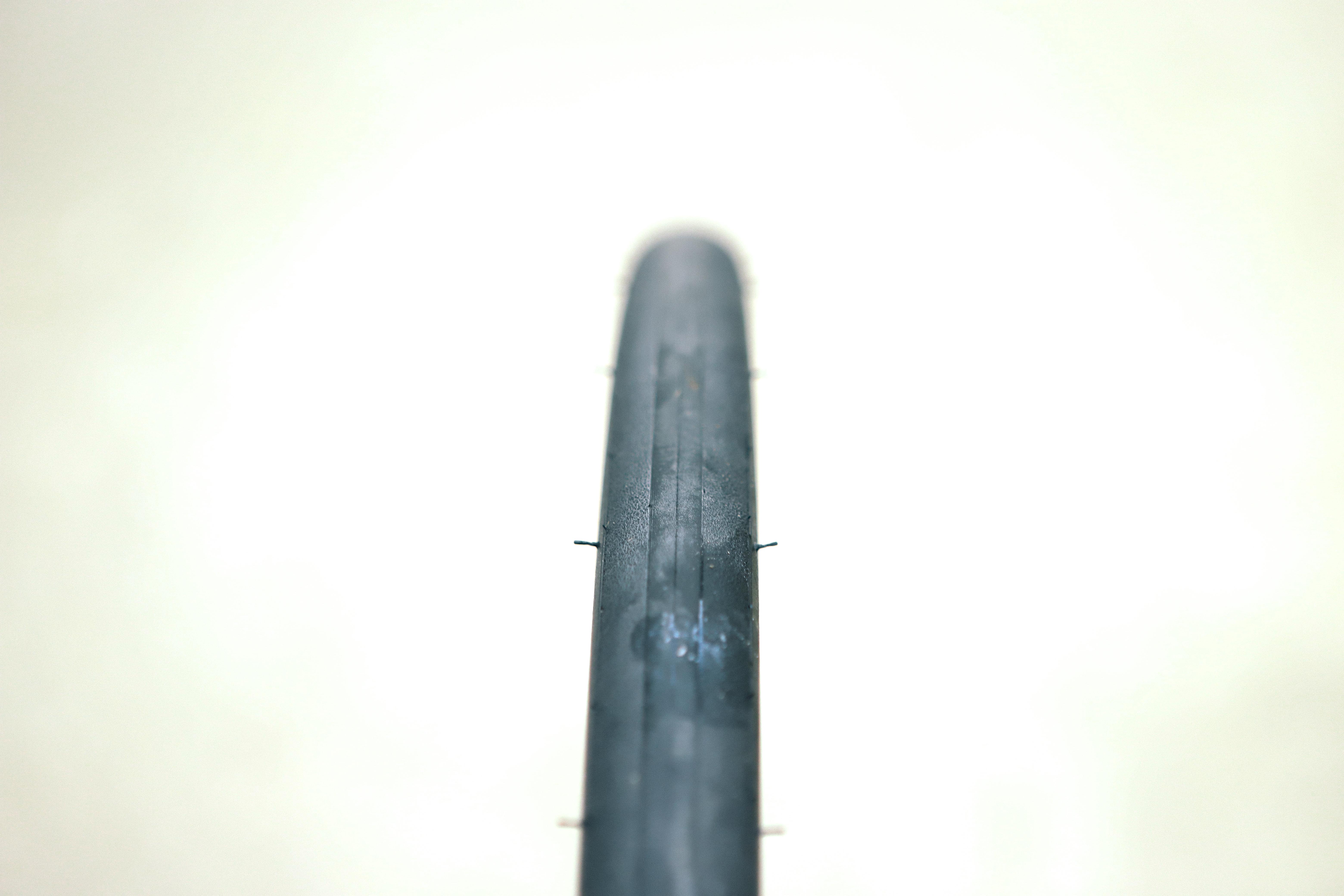
- Power at 9m/s: 13.4W
- Power at 11m/s: 19.6W
- Vs GP5000 S TR at 9m/s: +3.4W
- Vs GP5000 S TR at 11m/s: +3.6W
The faster of the pair of Goodyear tyres we had in for testing, as well as being lighter by around 20g per tyre. Faster, lighter, and a more convoluted name for a similar price. On speed alone this is the one to go for from the pair, ignoring any durability factors that may or may not influence your decision.
Challenge Criterium RS
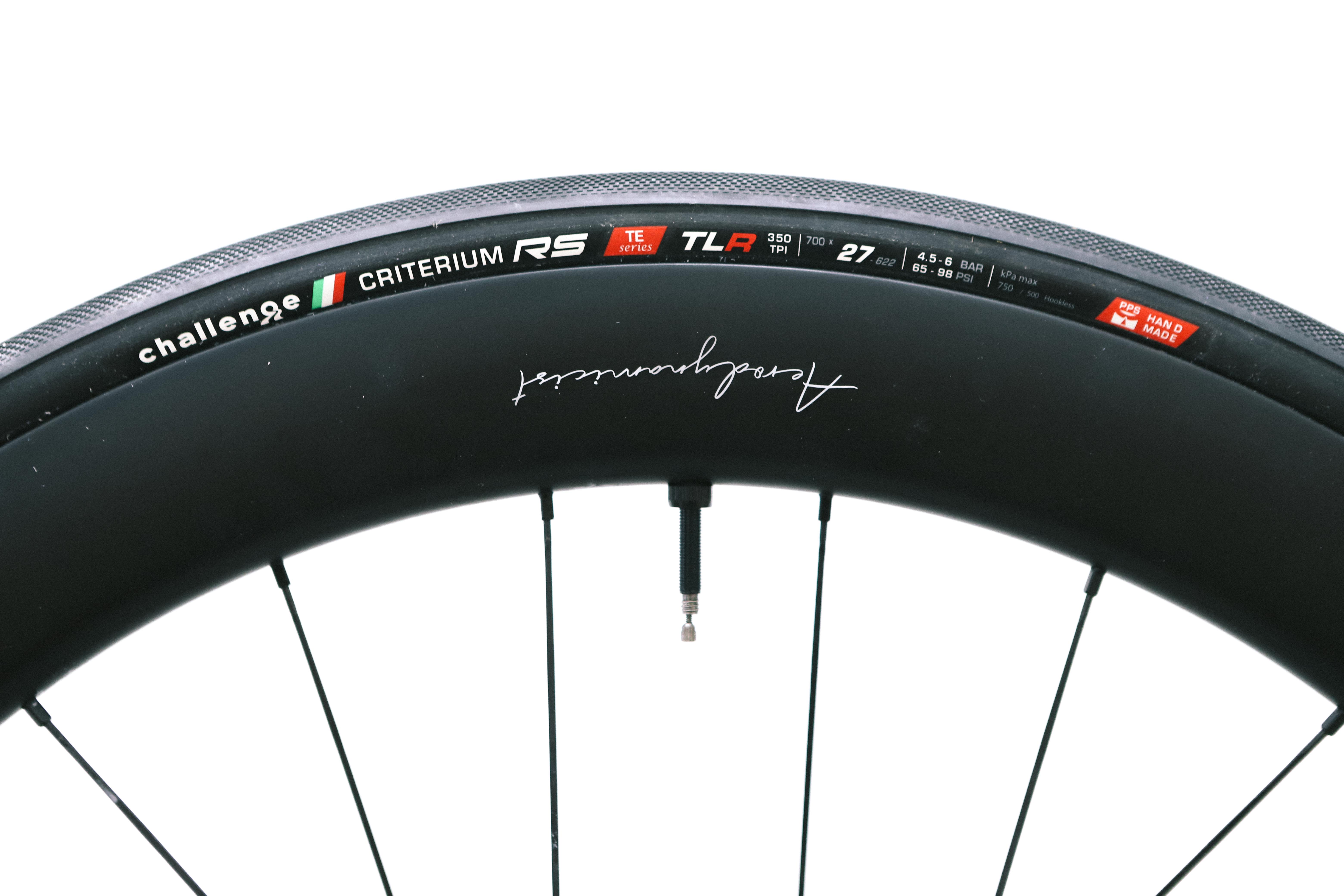
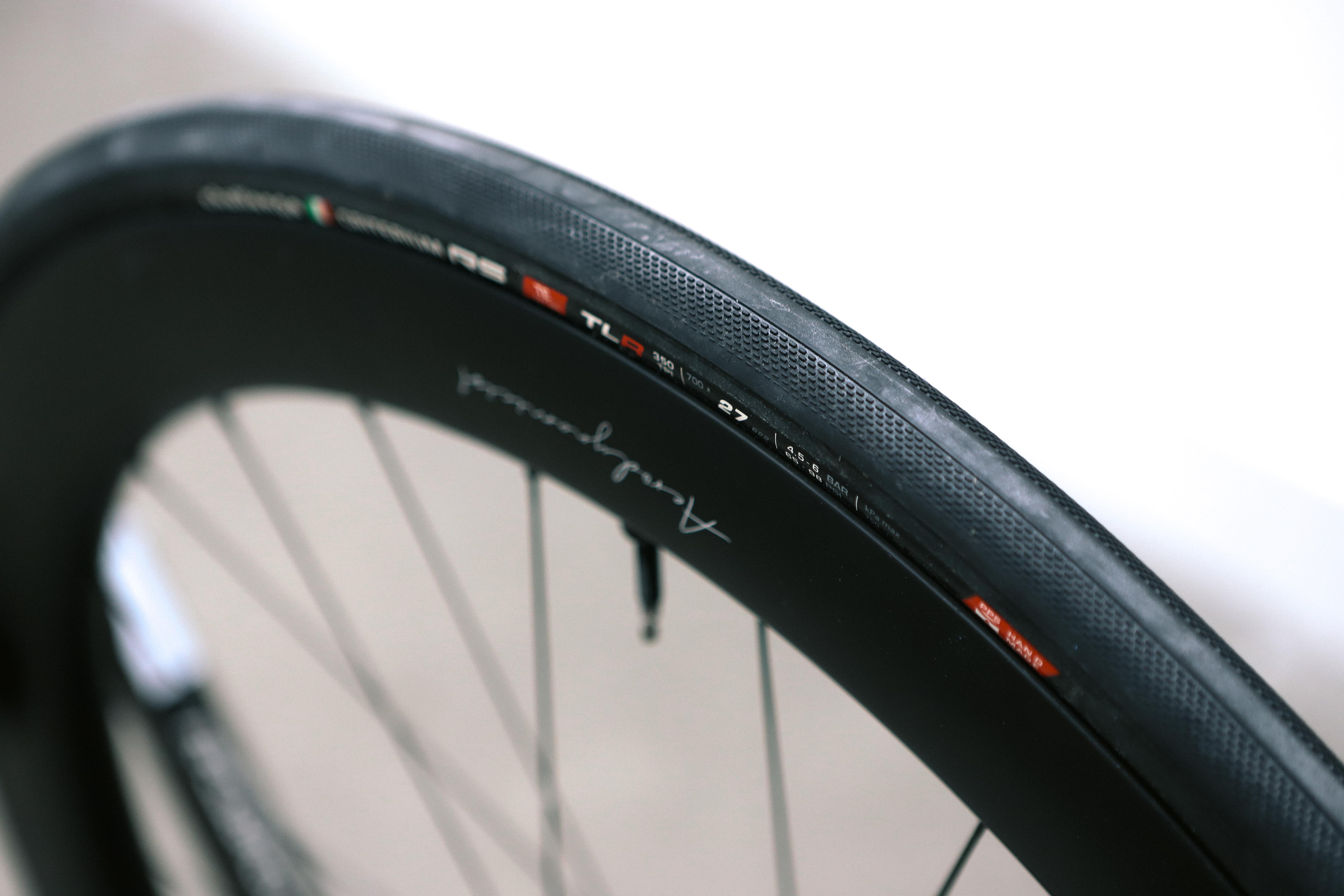
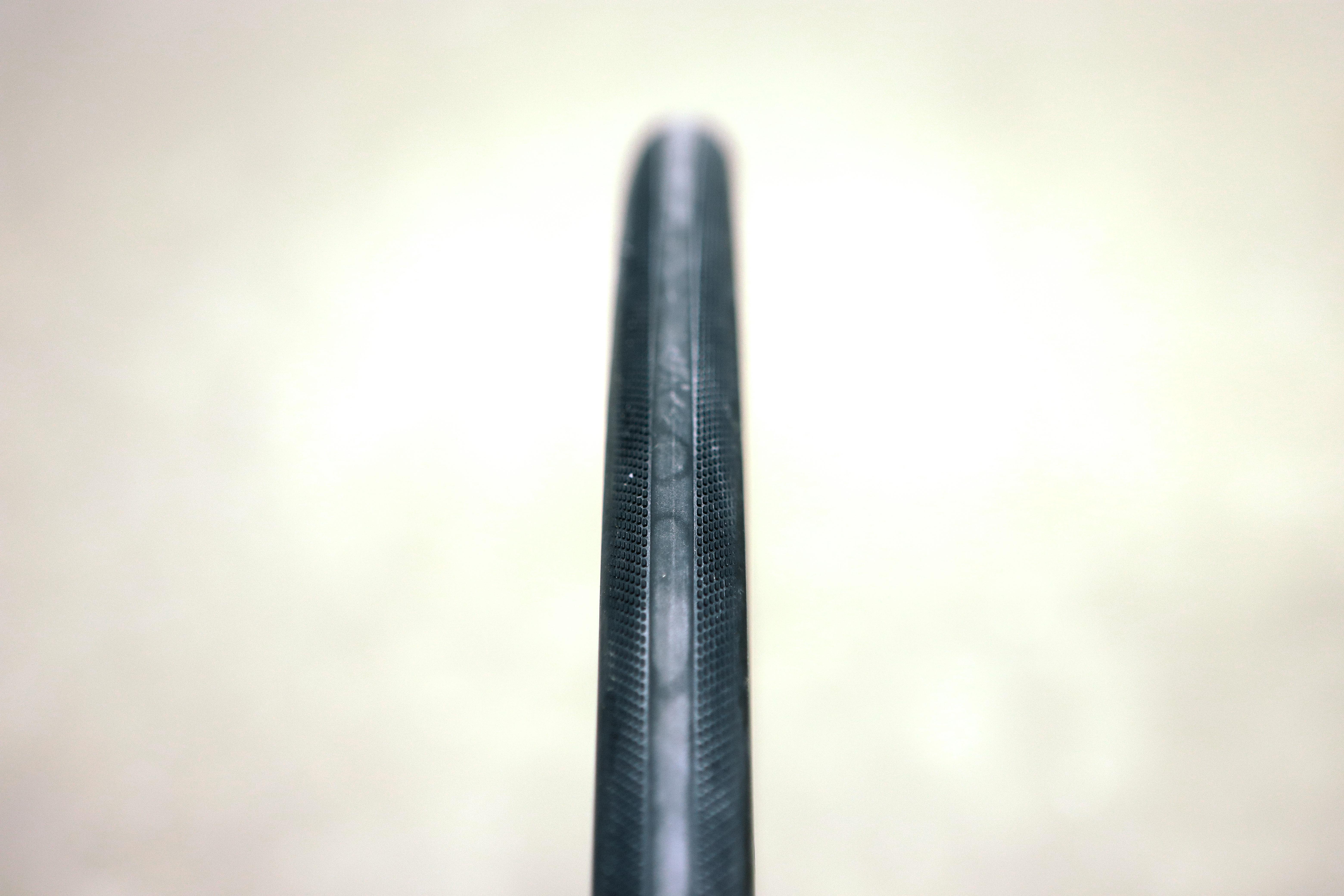
- Power at 9m/s: 13.3W
- Power at 11m/s: 19.7W
- Vs GP5000 S TR at 9m/s: +3.3W
- Vs GP5000 S TR at 11m/s: +3.7W
Our test tyre was a legacy 27c size, and in addition, it was an absolute pain in the backside to fit (sadly a common theme with Challenge tyres, we've found). Sealant leakage occurred in setup, so this may have had an influence on things, but nonetheless, it’s still a relatively fast tyre, perhaps down to its 350TPI casing. TPI notation in casings isn’t always consistent across brands - as explained in our what is TPI guide - so again take this with a pinch of salt as a measure of a tyre’s suppleness.
Continental GP5000 AS TR
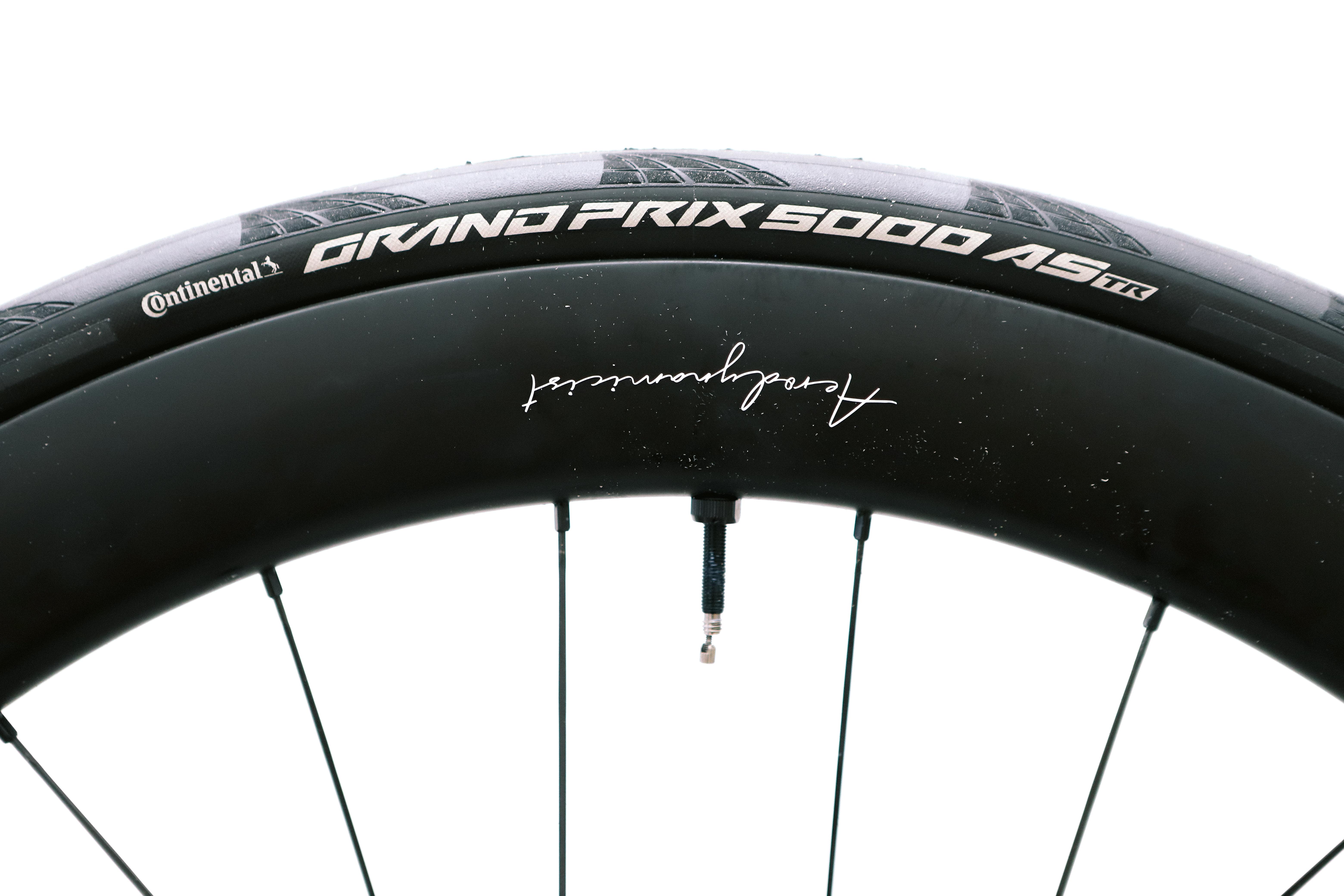
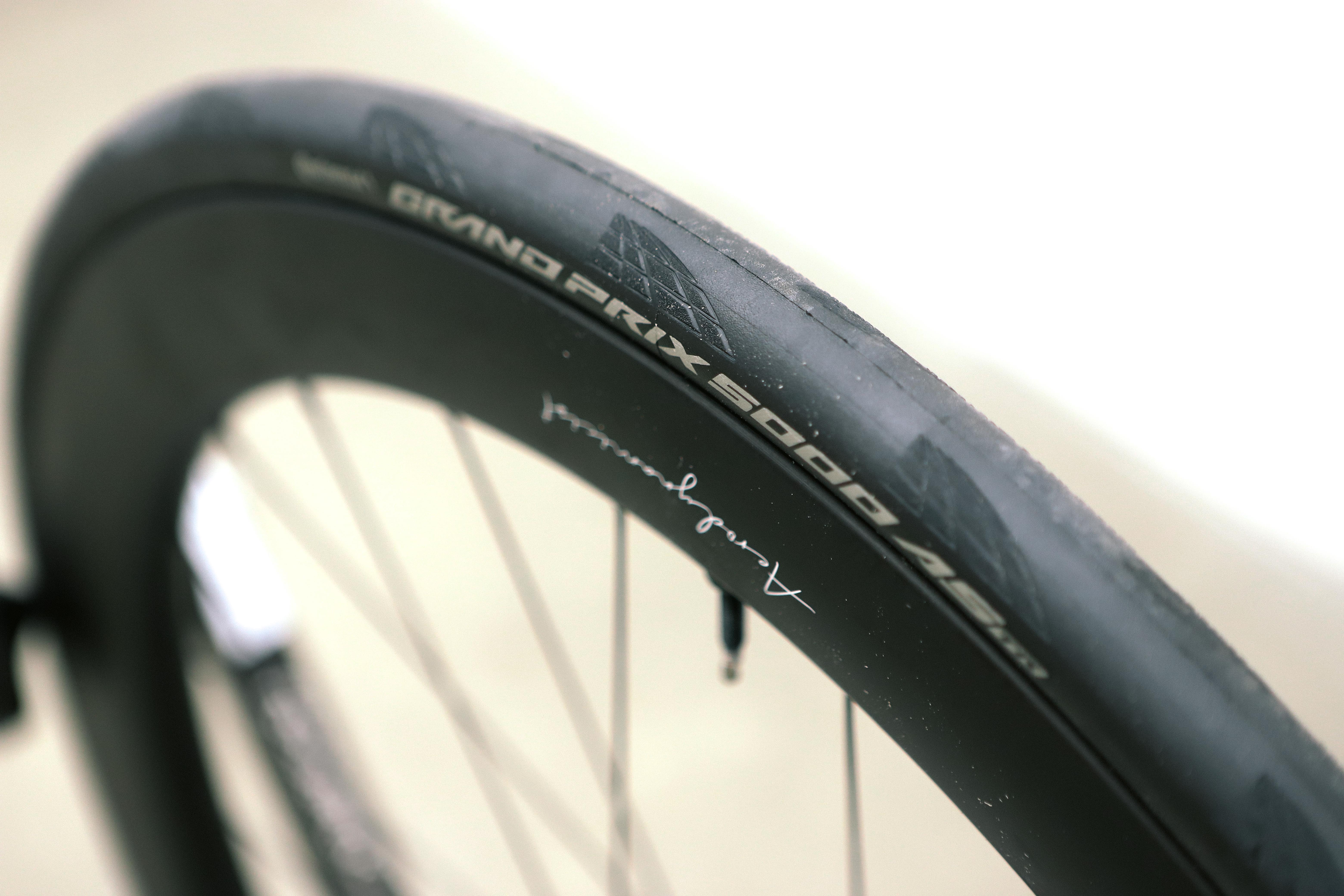

- Power at 9m/s: 13.3W
- Power at 11m/s: 21.2W
- Vs GP5000 S TR at 9m/s: +3.3W
- Vs GP5000 S TR at 11m/s: +5.2W
This tyre did fluctuate in terms of position between the two speeds by more than any other, but the results are still interesting. For the generalist riding at 30km/h, opting for these, with improved service life and claimed improvements in grip, as well as stealthy reflectivity on the sidewalls, is going to cost you 6.6 Watts over the standard GP5000 S TR. This is starting to approach the wattage you can only just feel in an immediate, direct comparison, so if you aren’t actively pursuing absolute performance, the trade-off looks a good one.
Continental Aero 111
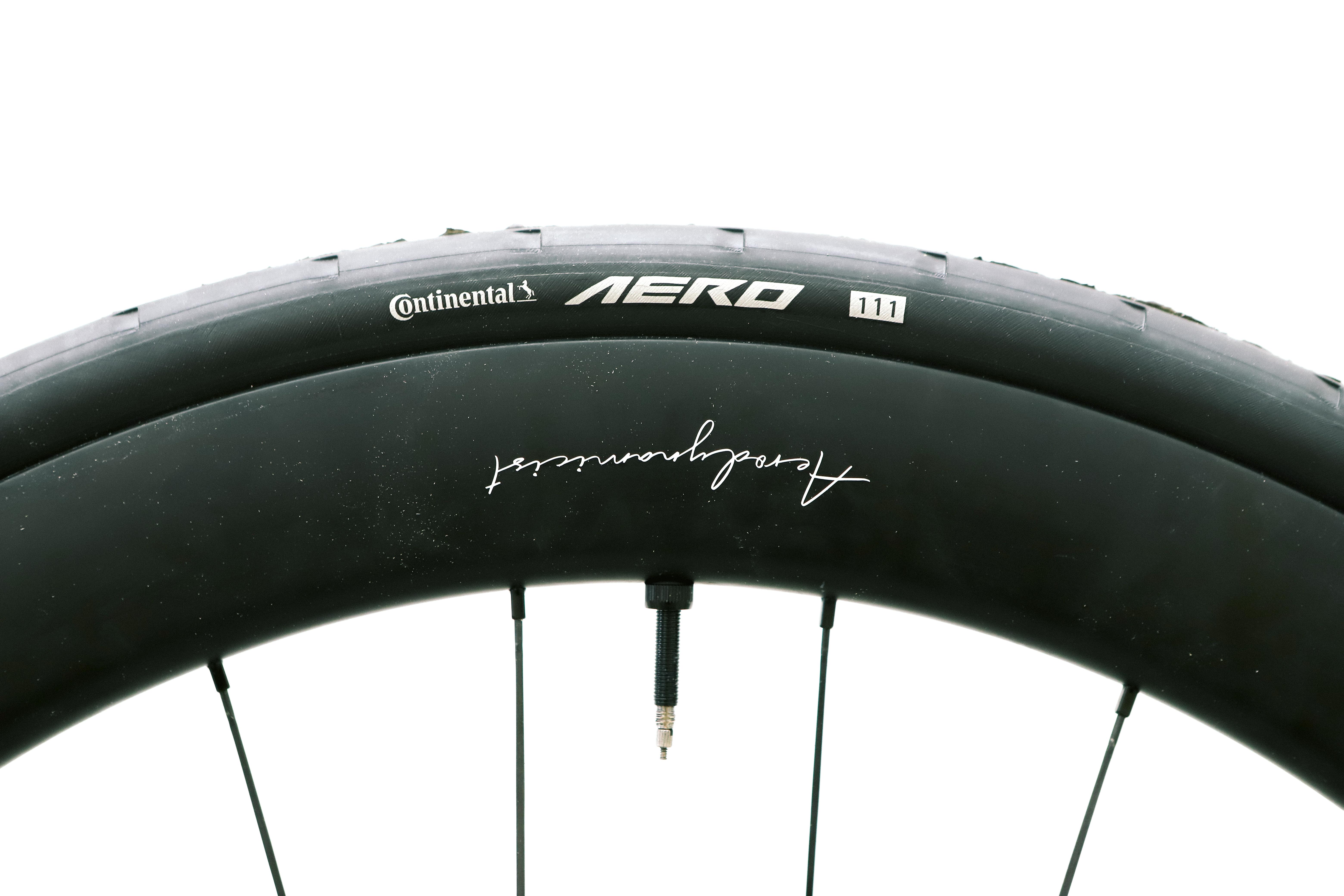
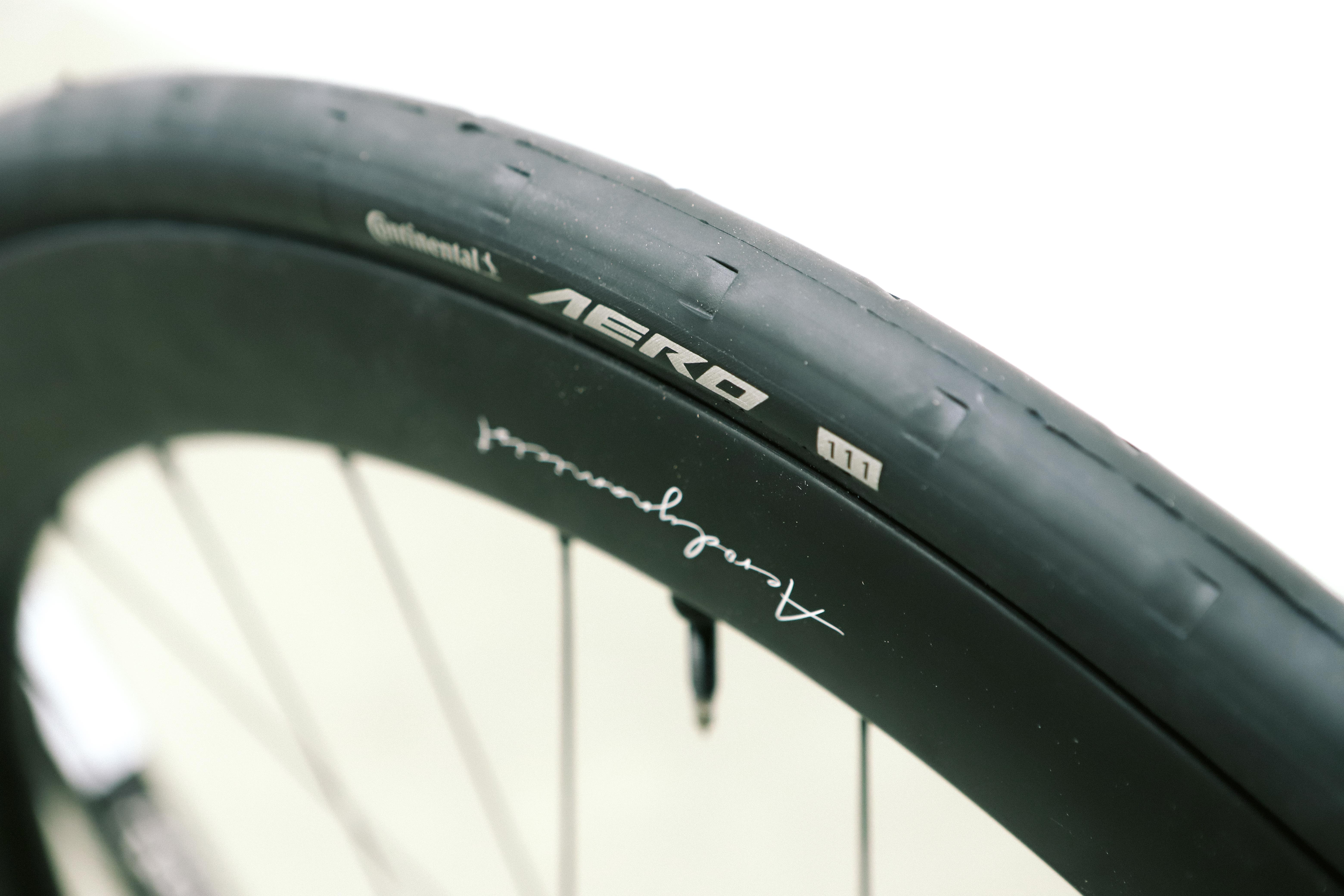
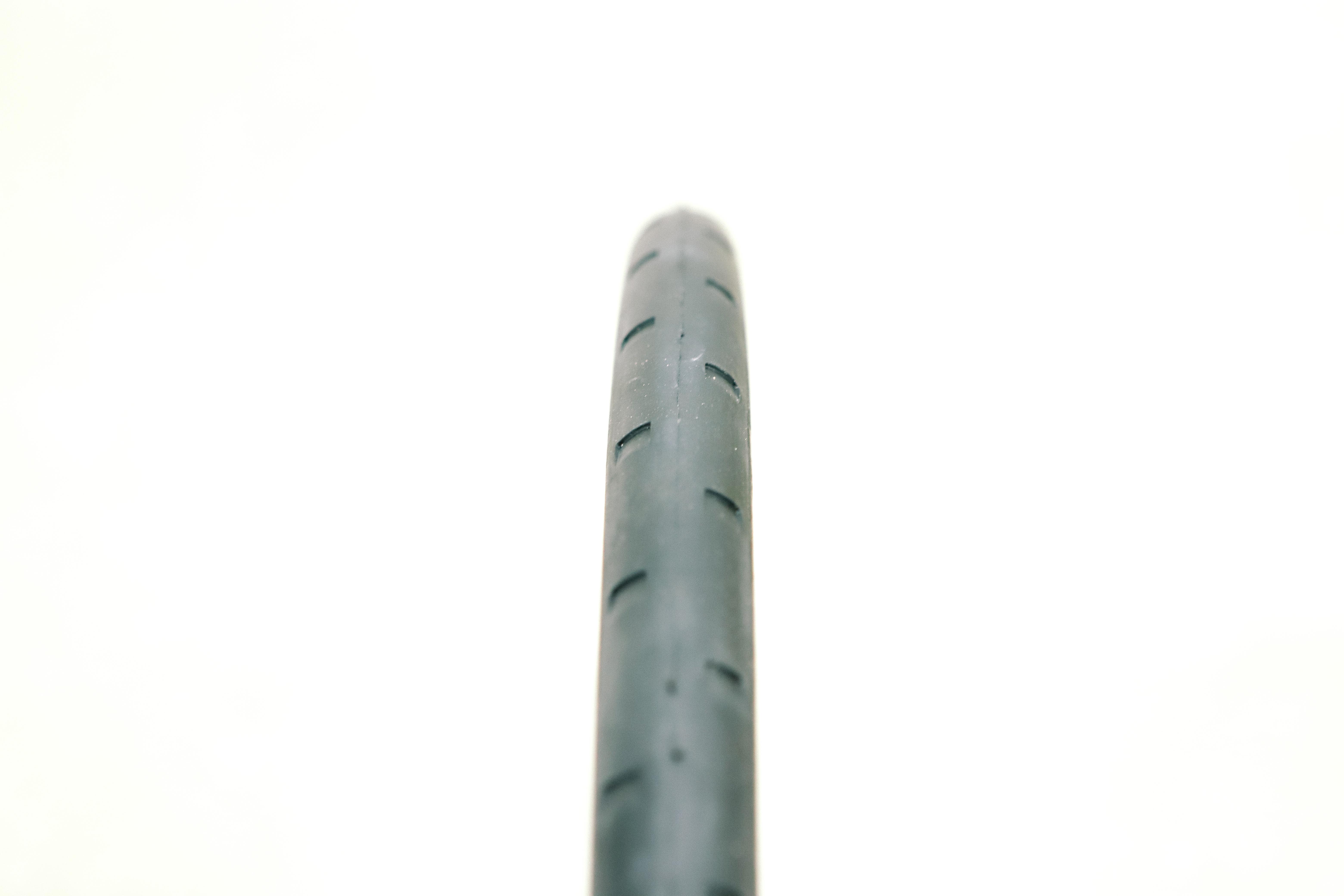
- Power at 9m/s: 12.4W
- Power at 11m/s: 19.7W
- Vs GP5000 S TR at 9m/s: +2.5W
- Vs GP5000 S TR at 11m/s: +3.7W
The marketing claims an 18 Watt saving here, but by our numbers, this is reduced somewhat as there is a rolling resistance penalty of 3.8 Watts over the Continental GP5000 TT TR (a single tyre value here, as it’s a front tyre only) at 11m/s. If the aero claims are true that’s still a net gain but one that is less than claimed - maybe that's next for us to test. I go into this a bit more later when comparing TT tyres to standard race models.
Specialized Turbo Cotton
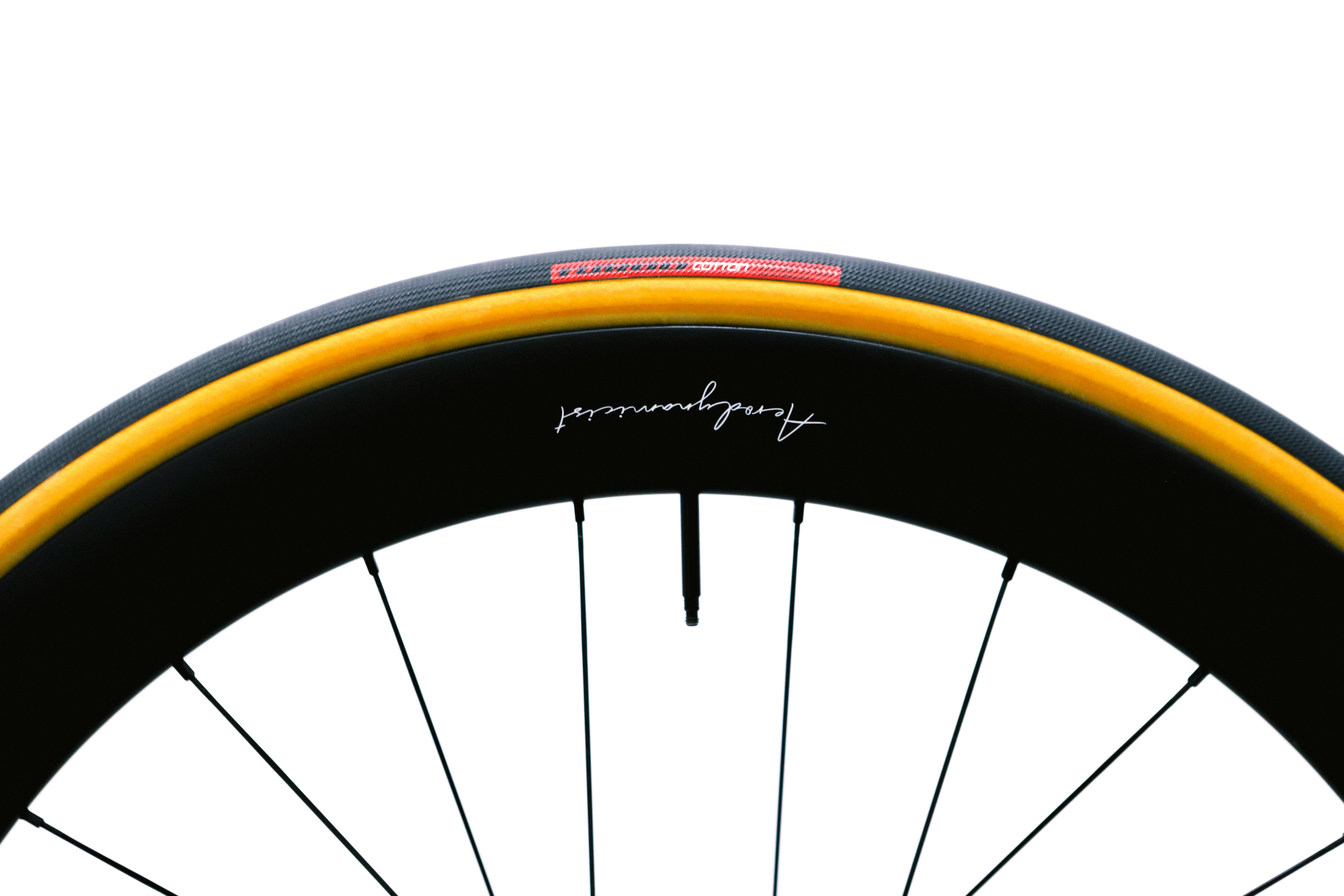
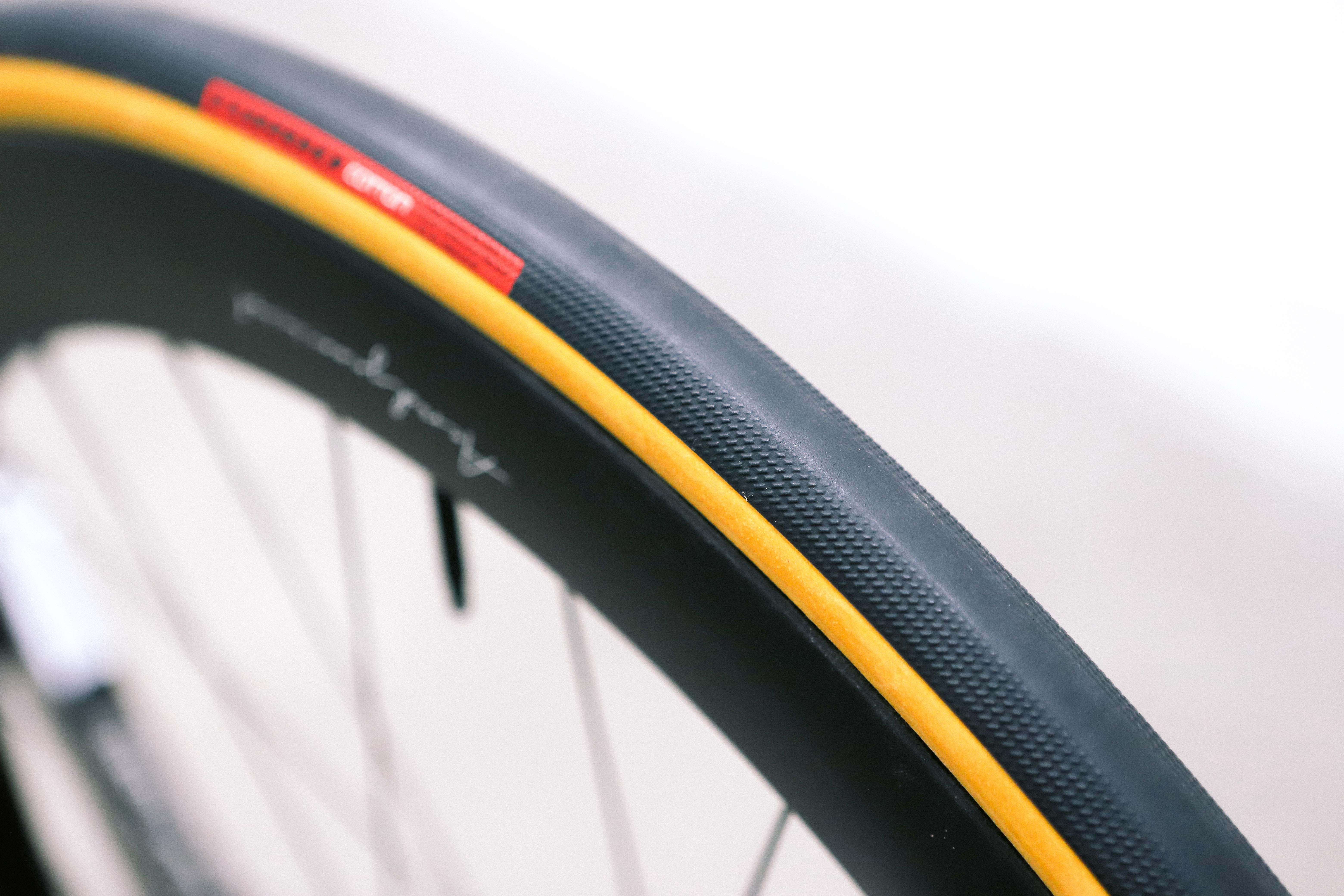
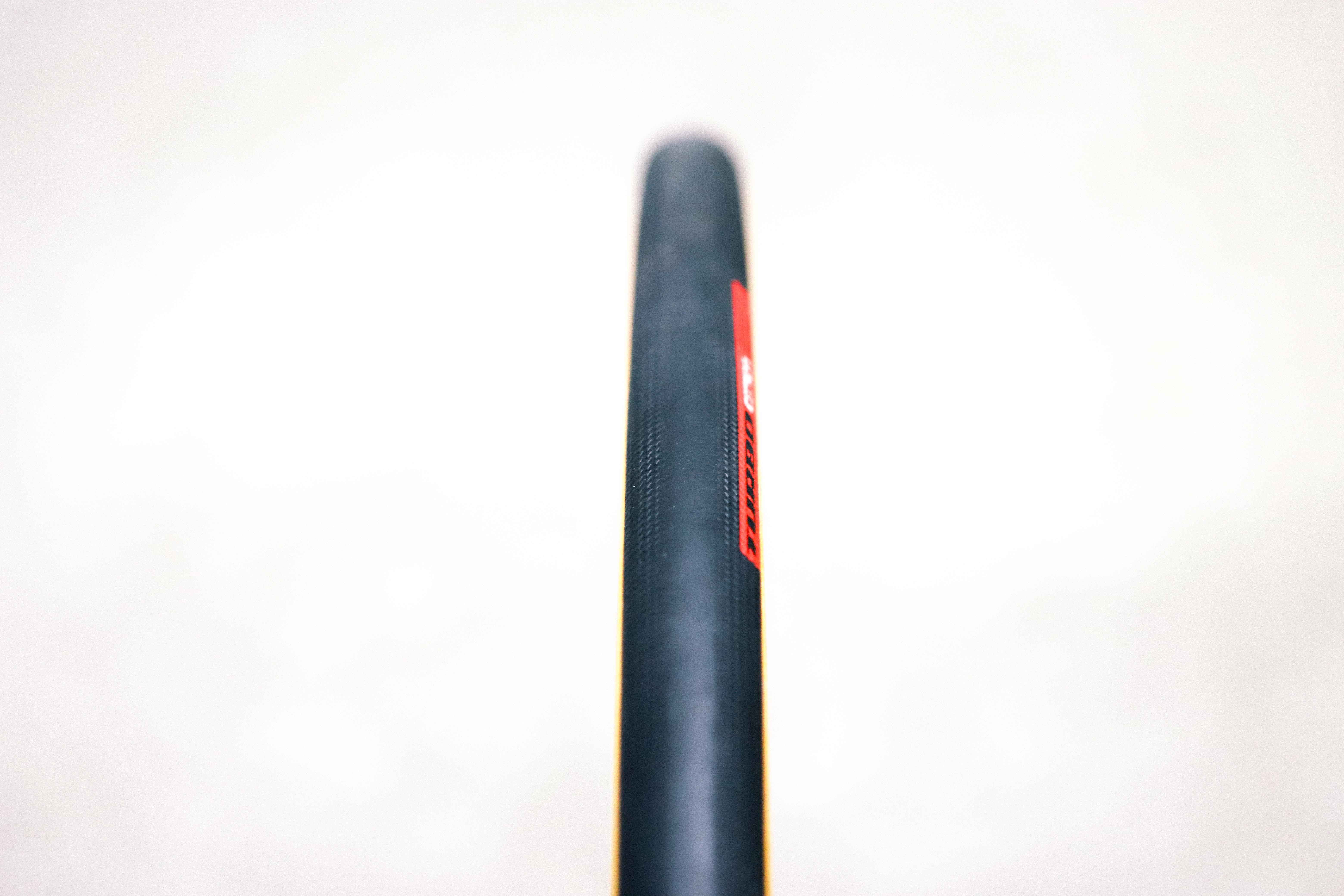
- Power at 9m/s: 11.2W
- Power at 11m/s: 17.8W
- Vs GP5000 S TR at 9m/s: +1.2W
- Vs GP5000 S TR at 11m/s: +1.8W
The Turbo Cotton and the wider Hell of the North version tested more or less identically, and given the non-Hell tops out at a 26c size I’d wager the Hell of the North version is the one most of us will go for. In spite of the fact that these are pretty old tyres now, being non-tubeless and non-hookless, they’re still mixing it with the best, and discounting the Corsa Pro Speed are the fastest cotton tyres that we’ve tested.
Specialized Turbo Cotton Hell of the North
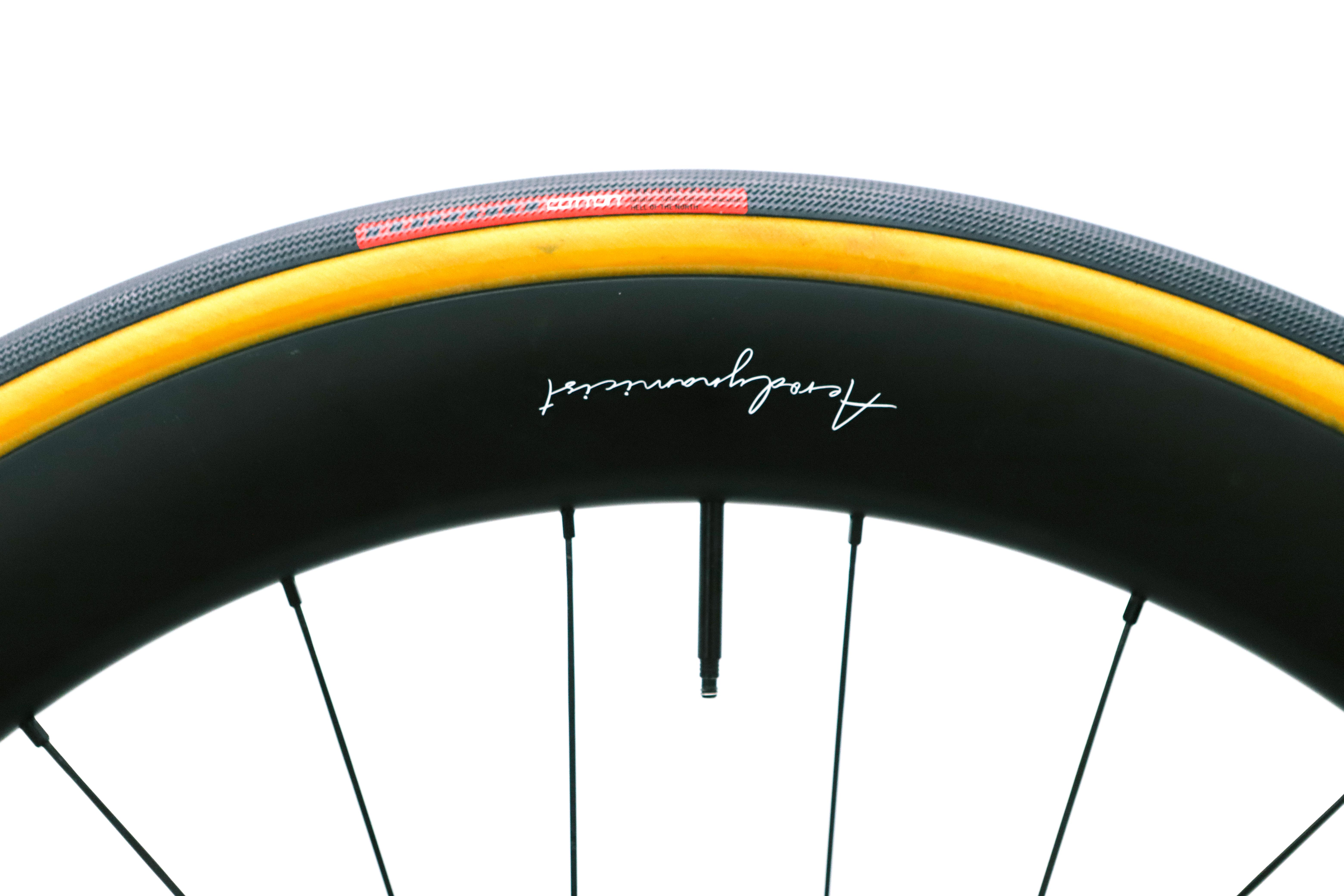
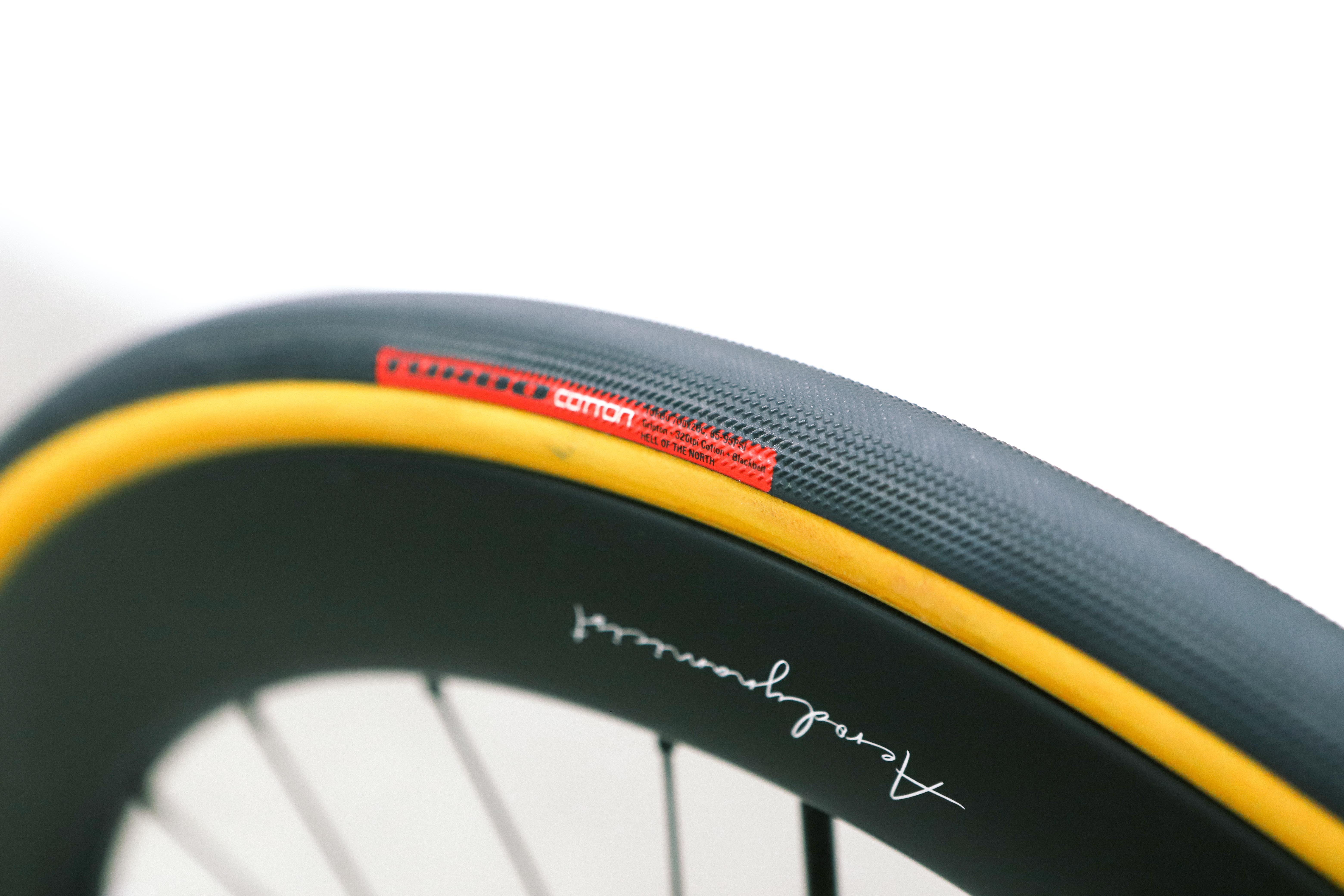
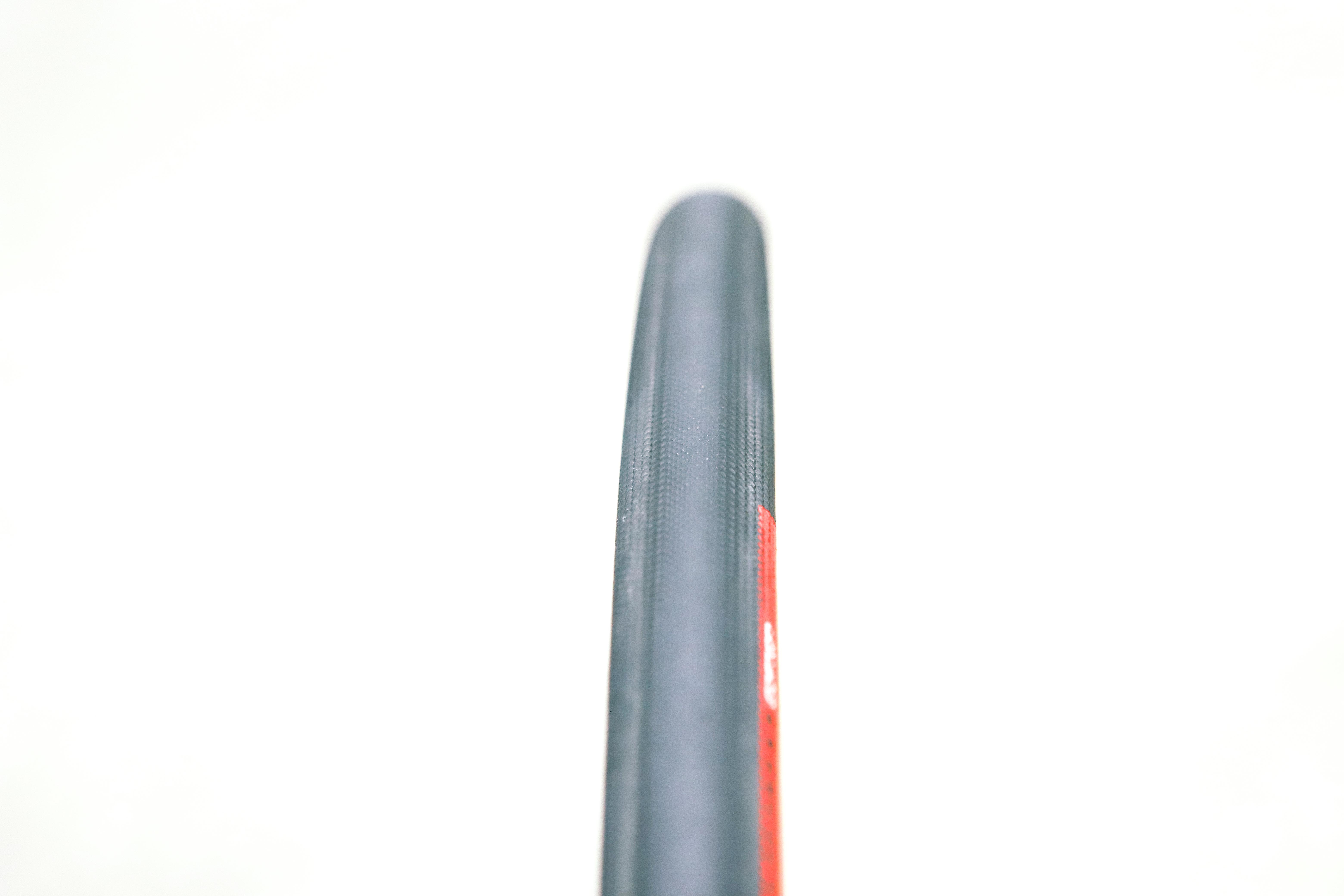
- Power at 9m/s: 11W
- Power at 11m/s: 18.3W
- Vs GP5000 S TR at 9m/s: +1.1W
- Vs GP5000 S TR at 11m/s: +2.3W
In terms of speed there’s no difference between this and the standard Turbo Cotton. This version is also purported to be more grippy, and comes in a 28, so unless your bike can only clear a 26c tyre then go for this one instead. For such a high performer both the Turbo Cotton models come in relatively cheap, though the trade-off is that they aren’t tubeless-ready and require latex tubes to get these wattage figures, which ups the total cost a little.
Schwalbe Pro One TT
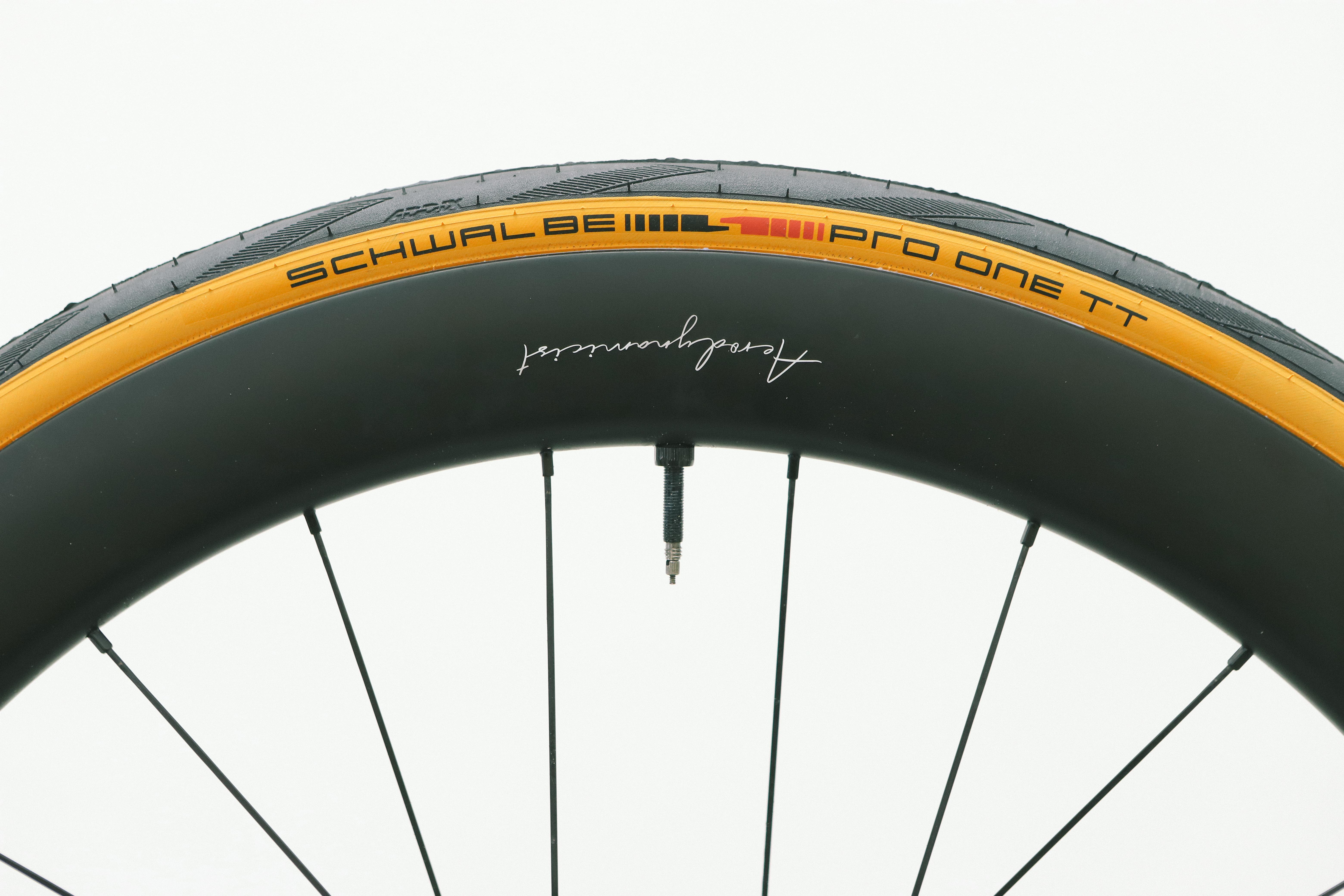
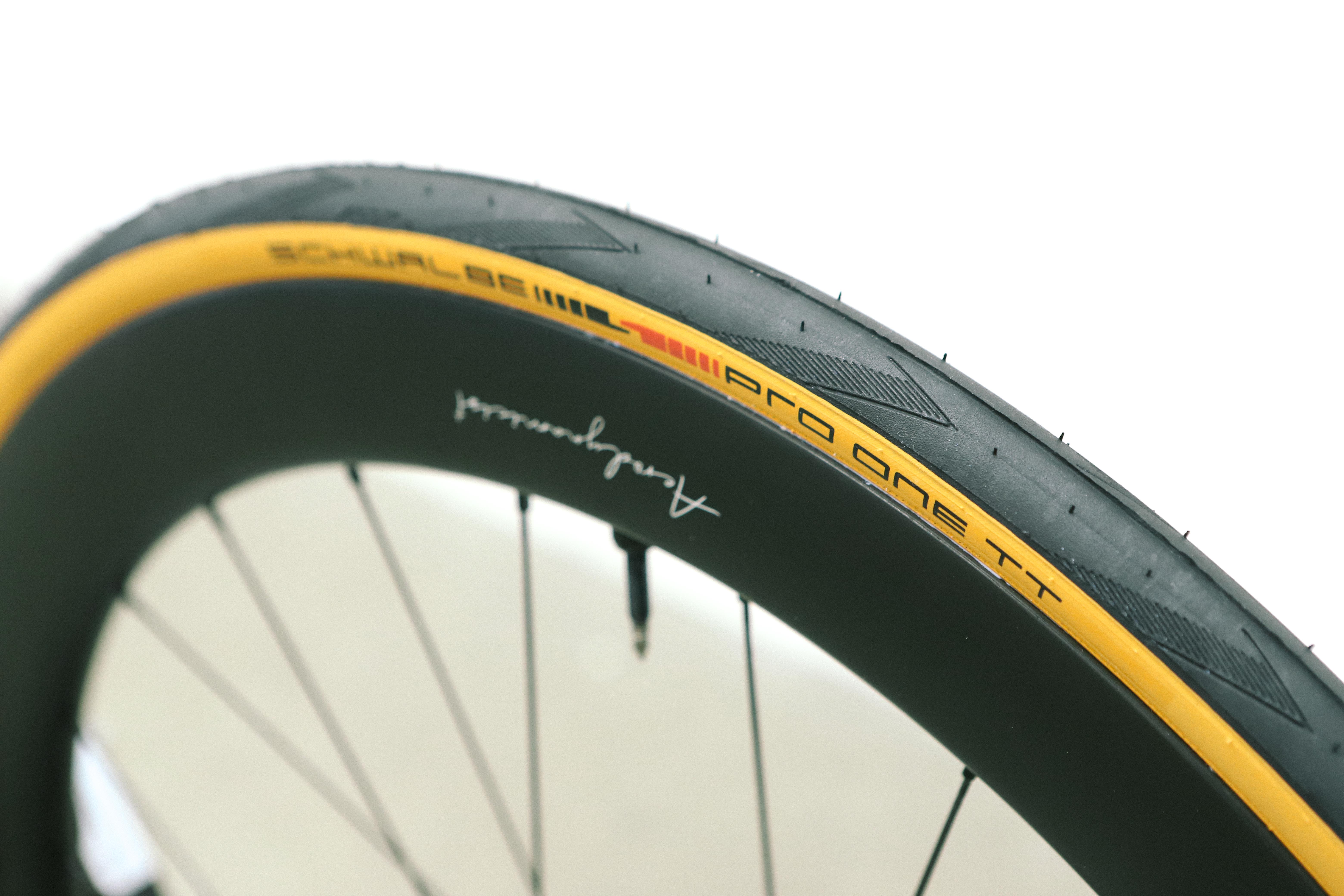

- Power at 9m/s: 10.1W
- Power at 11m/s: 16.9W
- Vs GP5000 S TR at 9m/s: +0.2W
- Vs GP5000 S TR at 11m/s: +0.9W
A fast tyre in its own right, but taken in the context of the TT tyres the Pro One TT was the slowest of the bunch, with a 4.6 Watt penalty over the Vittoria Corsa Pro Speed. Marginal, but in time trials, the winning margins can be equally marginal. Despite being a TT tyre it’s also slower than a standard GP5000S TR.
Panaracer Agilest Fast
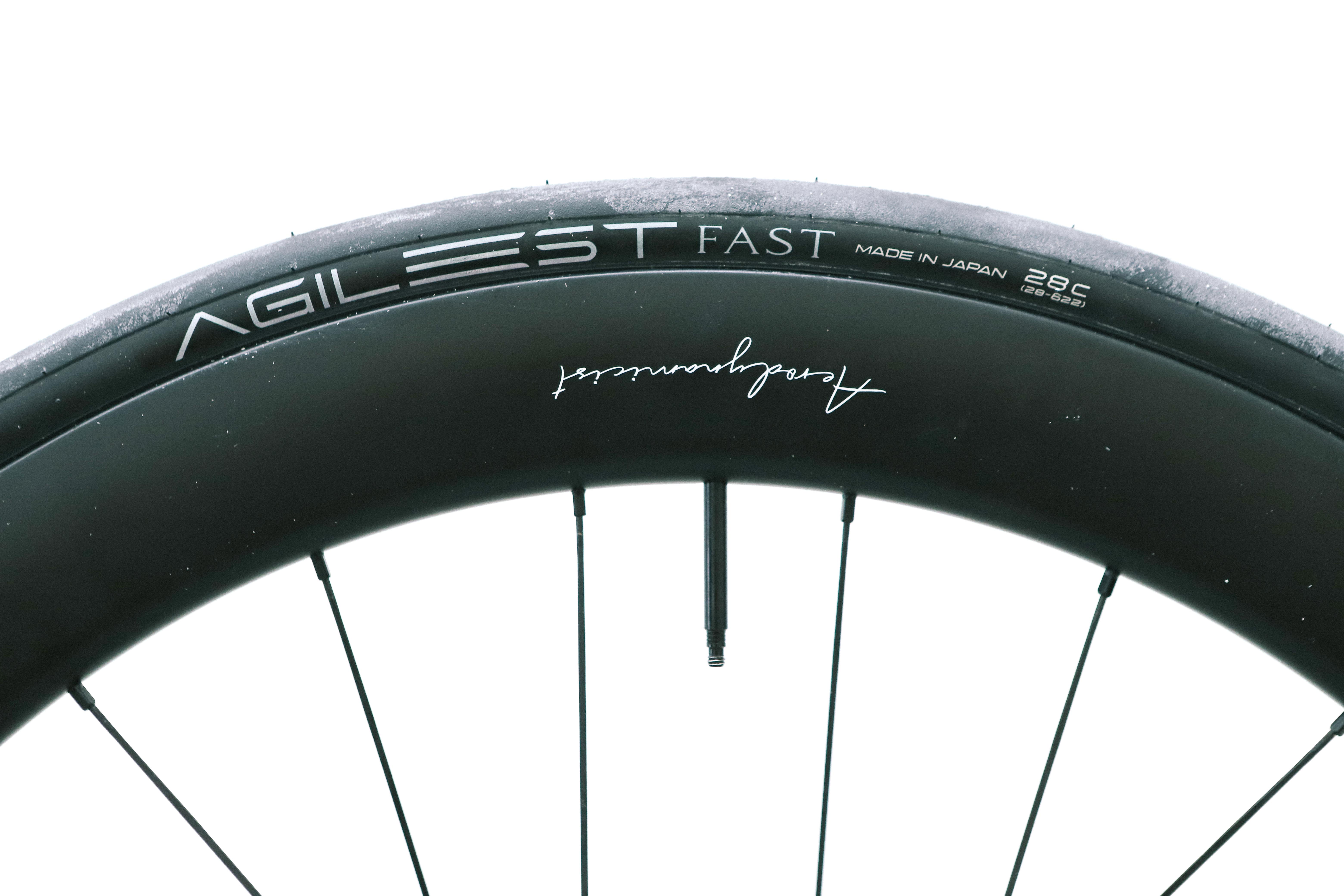
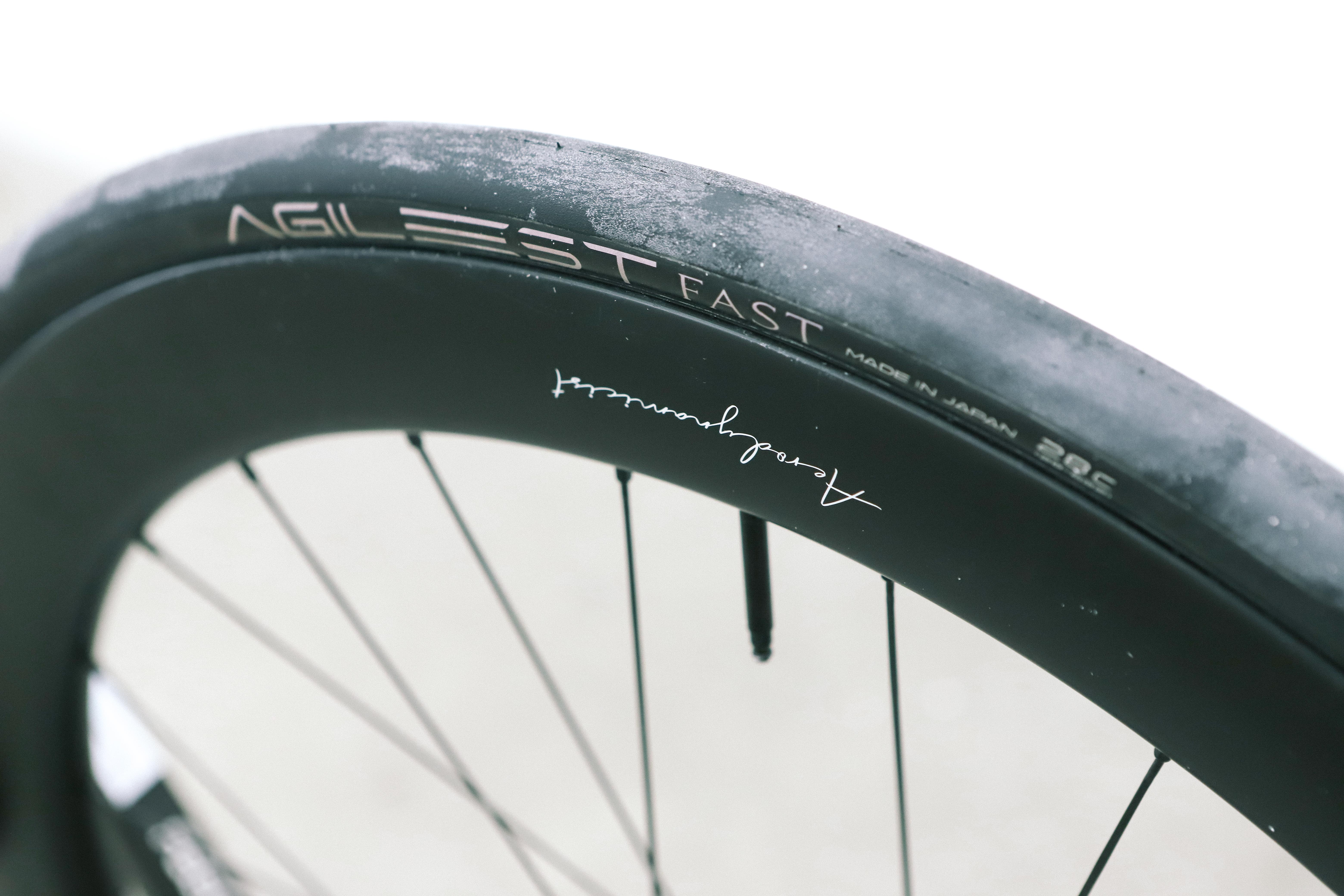

- Power at 9m/s: 10W
- Power at 11m/s: 16.8W
- Vs GP5000 S TR at 9m/s: +0.1W
- Vs GP5000 S TR at 11m/s: +0.8W
There’s a pretty huge gulf in terms of performance between the tubeless, normal Agilest TLR and this tube-only ‘Fast’ model. A difference of 16 Watts at 9m/s to be precise. It is tube-only, (a tubeless one is launching soon, we're told) and is the fastest of the tube-only models, beating the Turbo Cotton. It’s not clear in the marketing whether it is billed as a TT tyre, but without any mention of a time trial specifically, we can conclude that it’s the only all-round race tyre to match the GP5000S TR, effectively offering the same wattage penalty.
Continental GP5000S TR
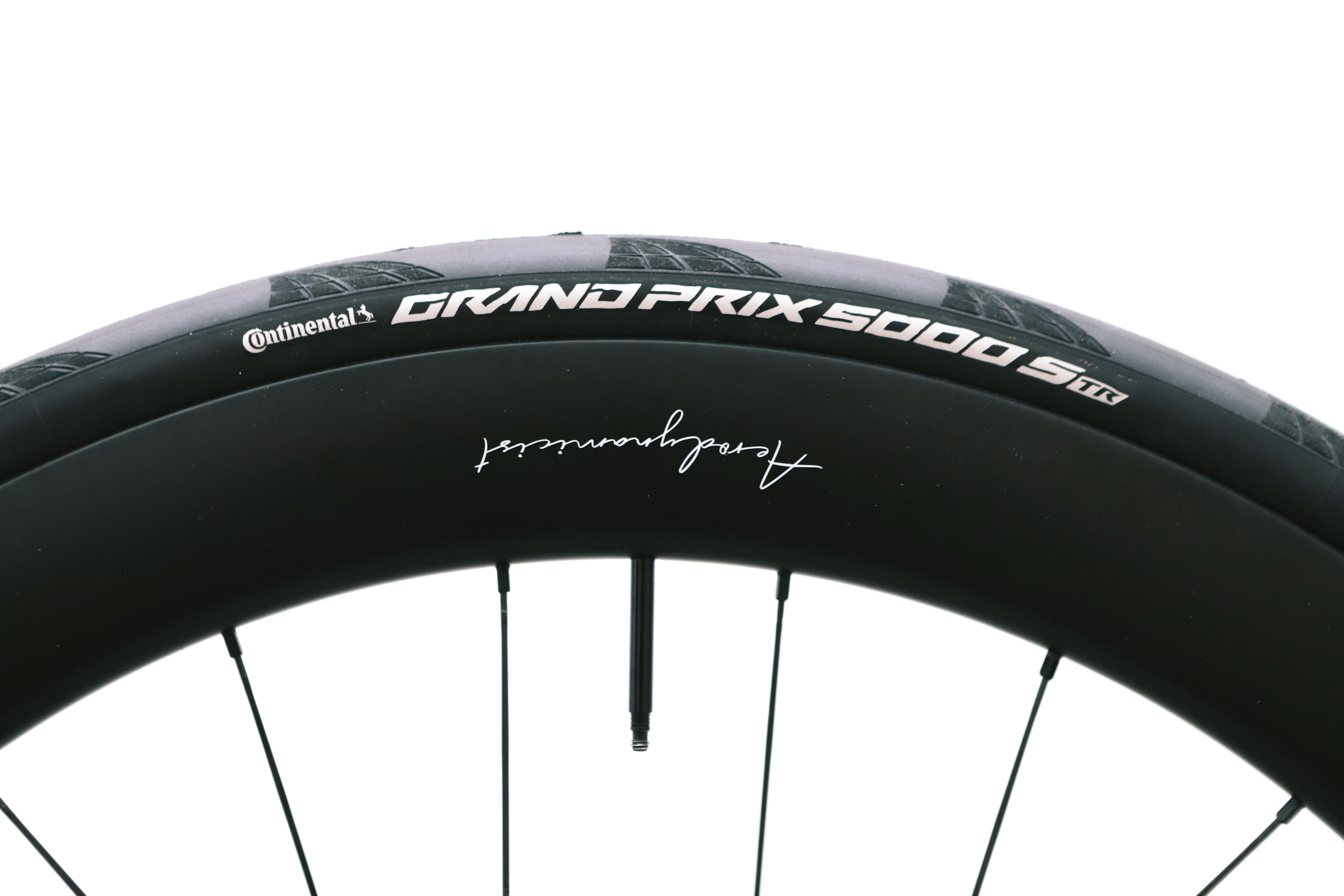
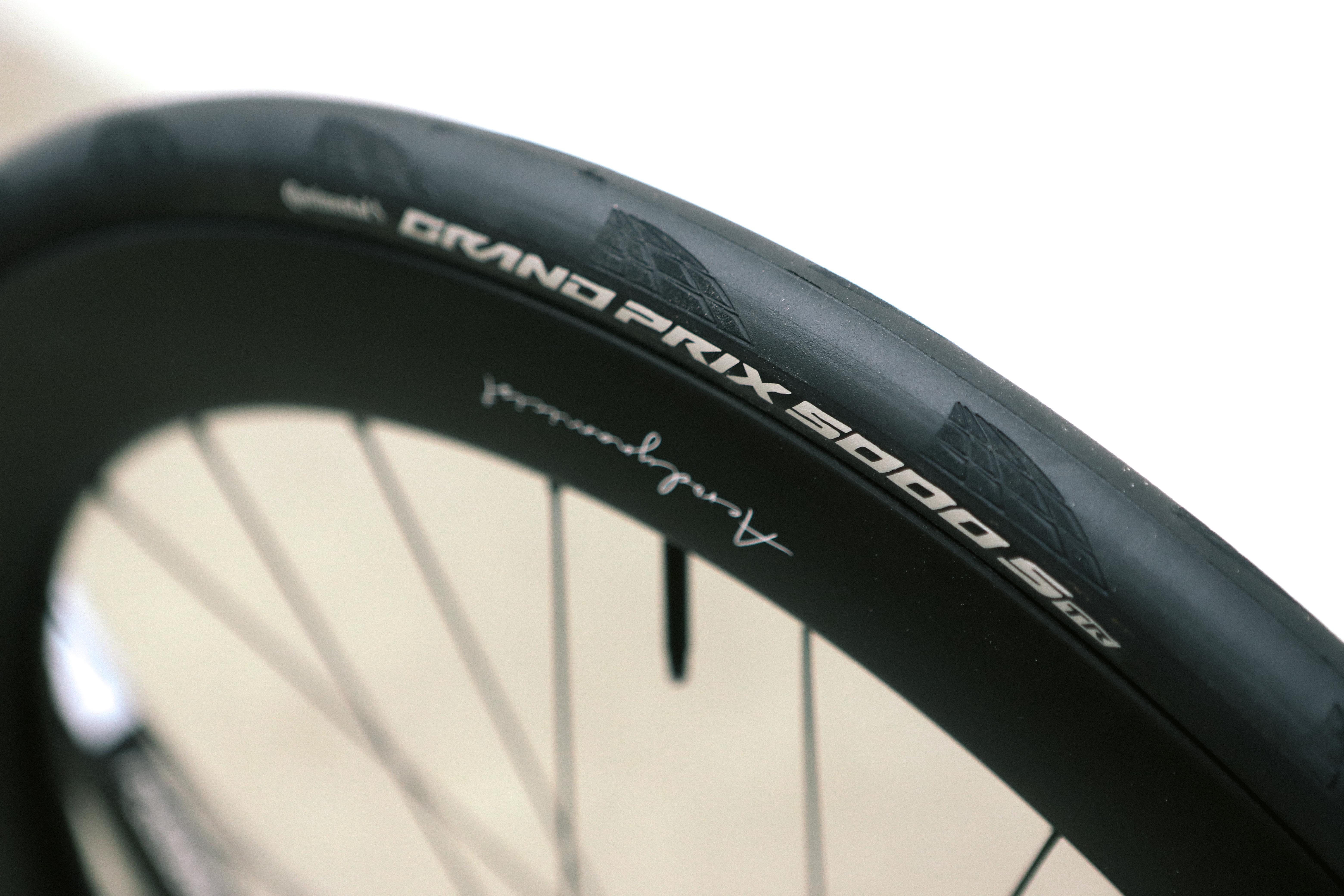
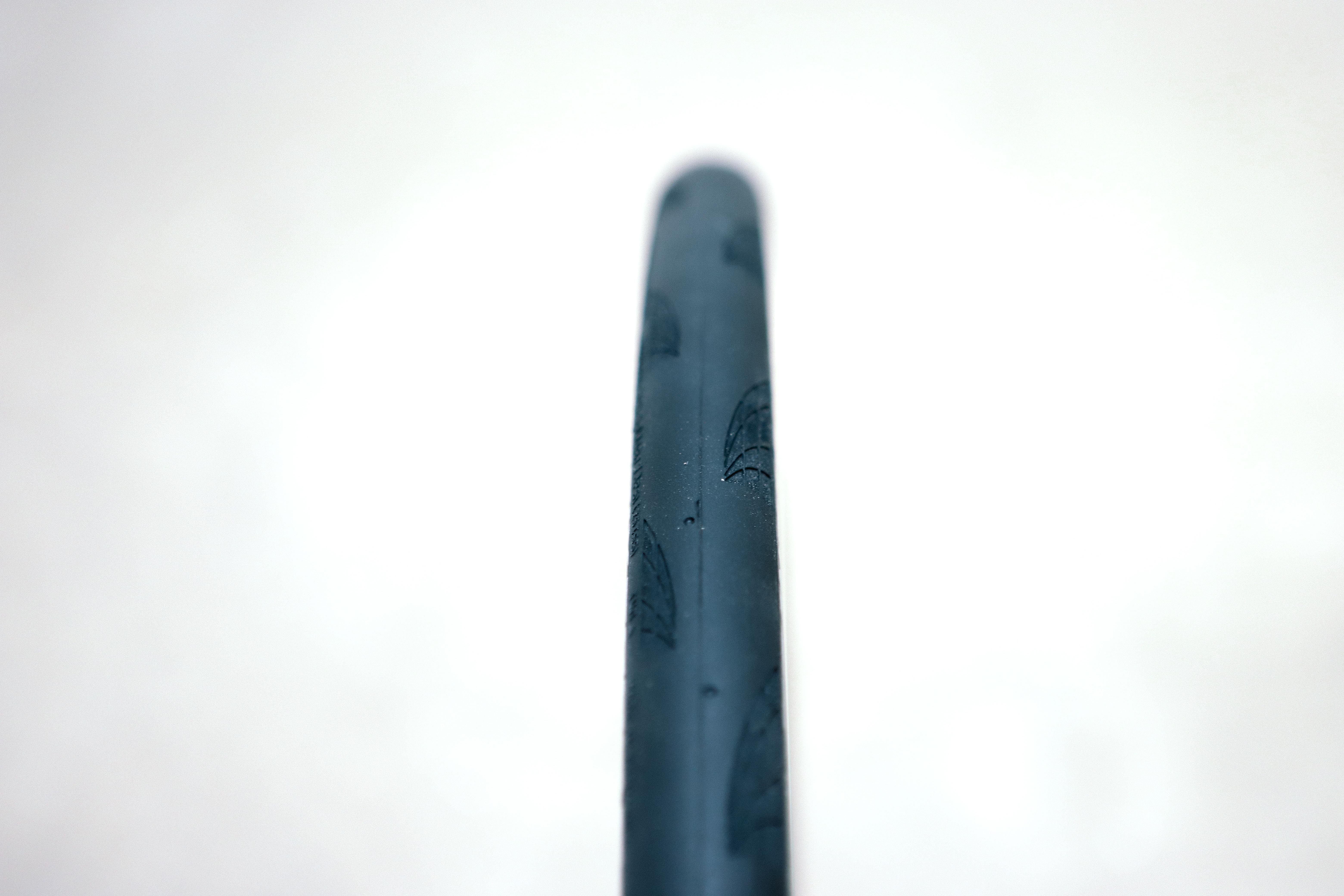
- Power at 9m/s: 10W
- Power at 11m/s: 16W
- Vs GP5000 S TR at 9m/s: -
- Vs GP5000 S TR at 11m/s: -
The benchmark, both for this test and in general. Race-winning credentials, reviewed well, and the fastest of the standard road race tyres make this a pretty nailed-on candidate for the best road bike tyre (which is lucky, as we already said it was without the benefit of all this data). As well as all that, it comes in sizes up to 32c and is tubeless-ready. It is expensive, but if you want the best then at least you can justify your purchase more easily now.
Continental GP5000 TT TR
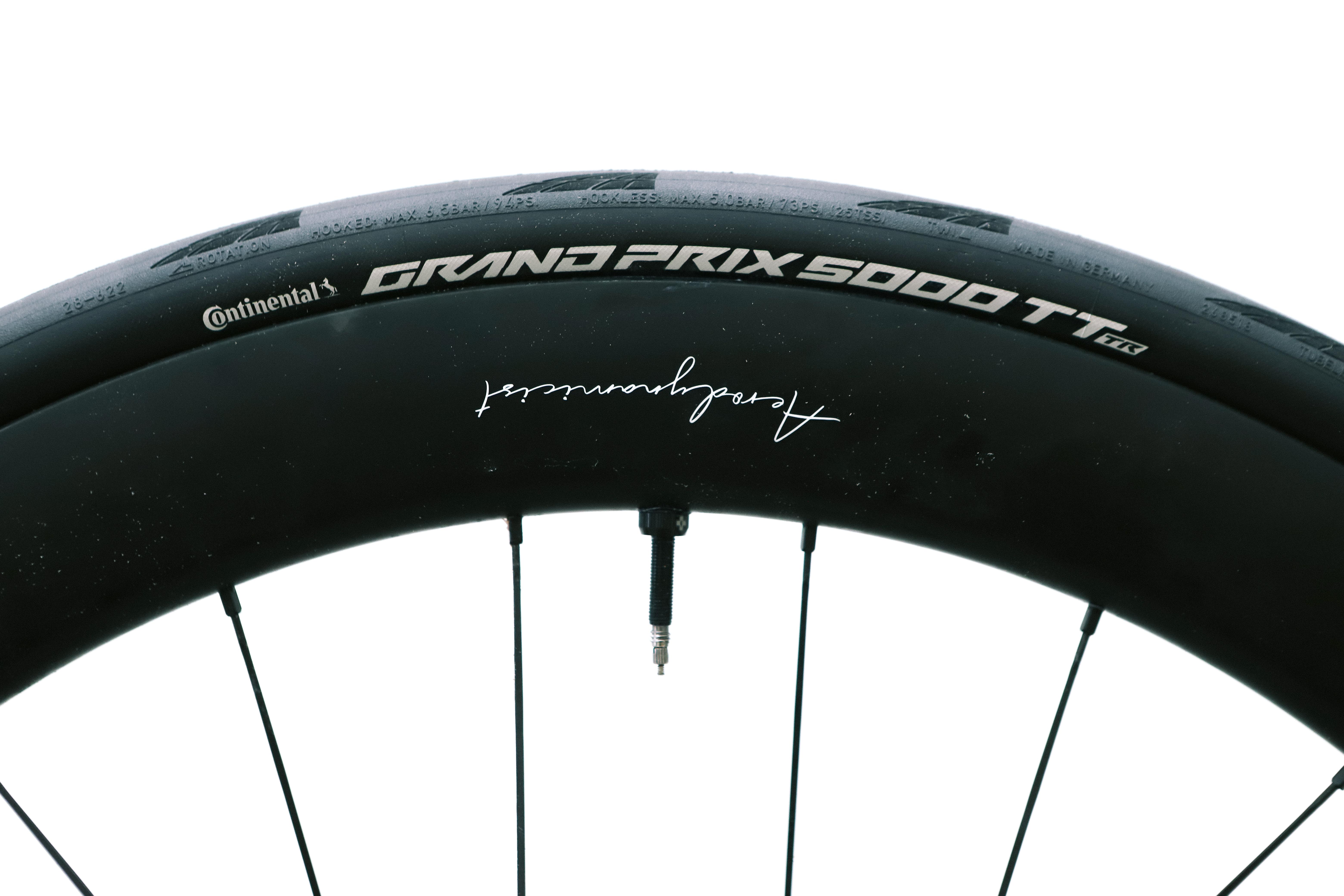
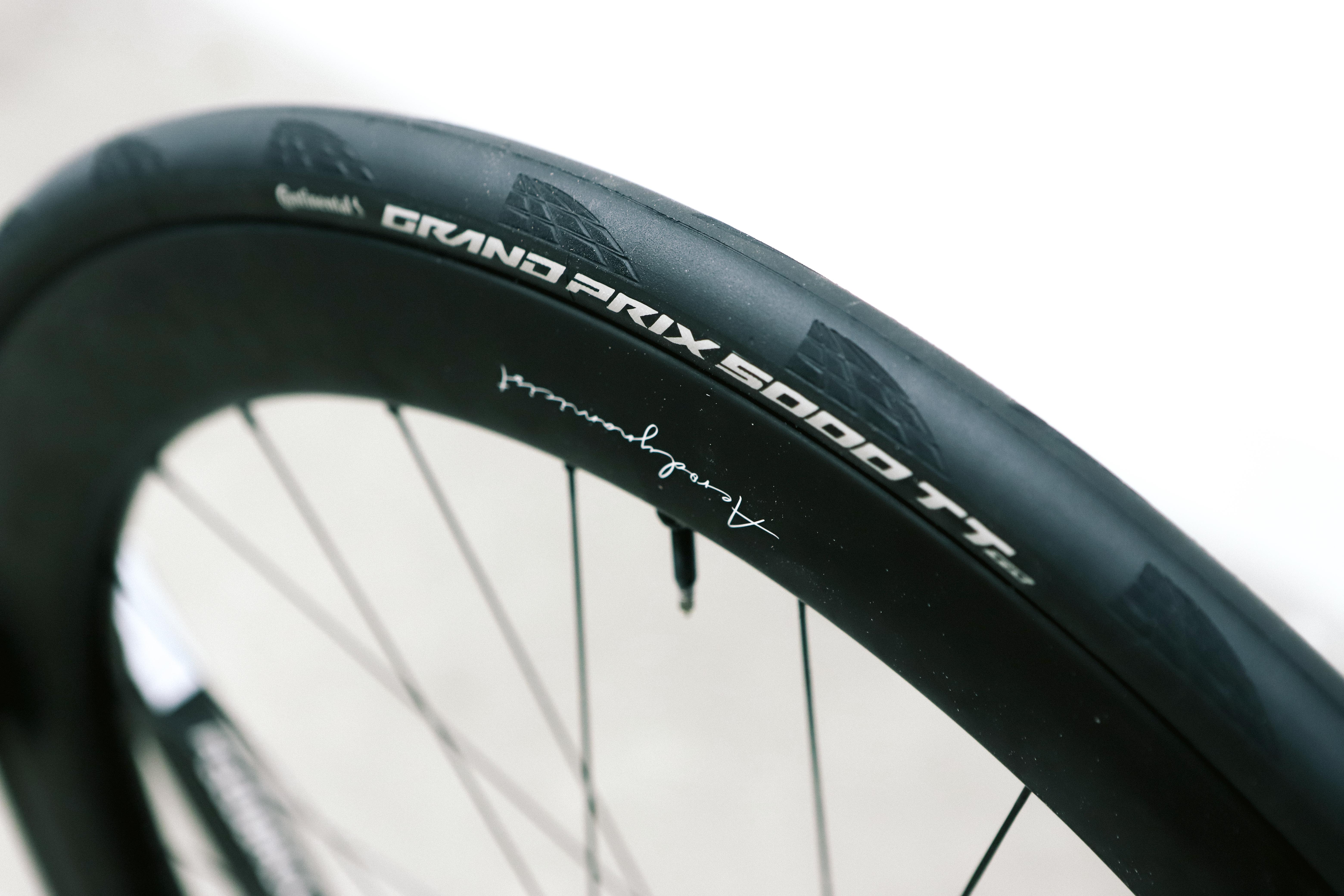

- Power at 9m/s: 9.8W
- Power at 11m/s: 15.9W
- Vs GP5000 S TR at 9m/s: -0.2W
- Vs GP5000 S TR at 11m/s: -0.1W
Our testing showed no significant difference at all between the GP5000S TR and the TT TR. Near identical wattages, and the standard GP5000S TR even came in a little lighter on the scales. Interestingly, the TT TR measured almost 1mm wider on our test rim, despite both being labelled as 28mm. We do see teams like Ineos running the TT TR as their general use tyre, but from what we’ve seen it’s not really gaining them anything, even at higher speeds.
Vittoria Corsa Pro Speed
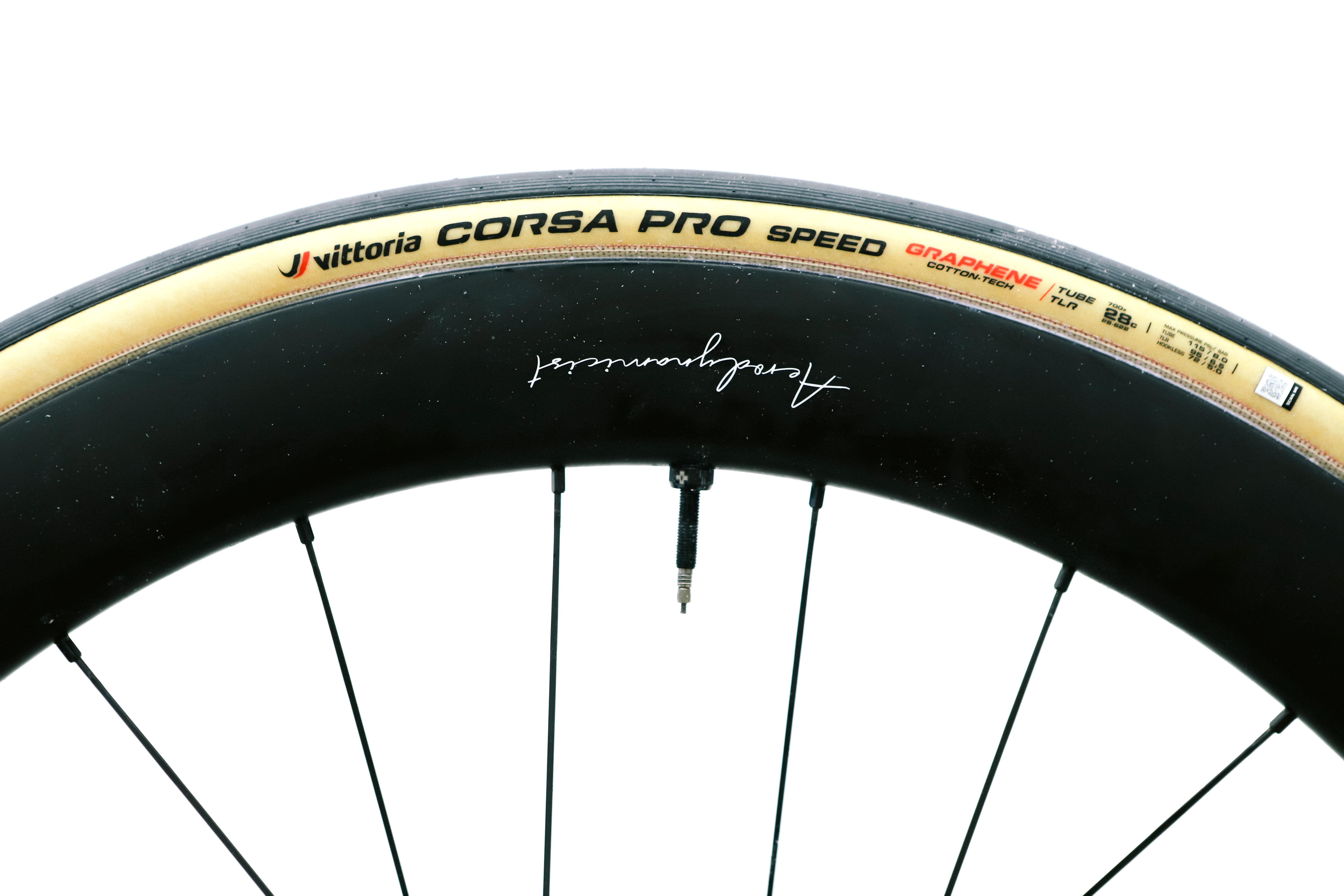
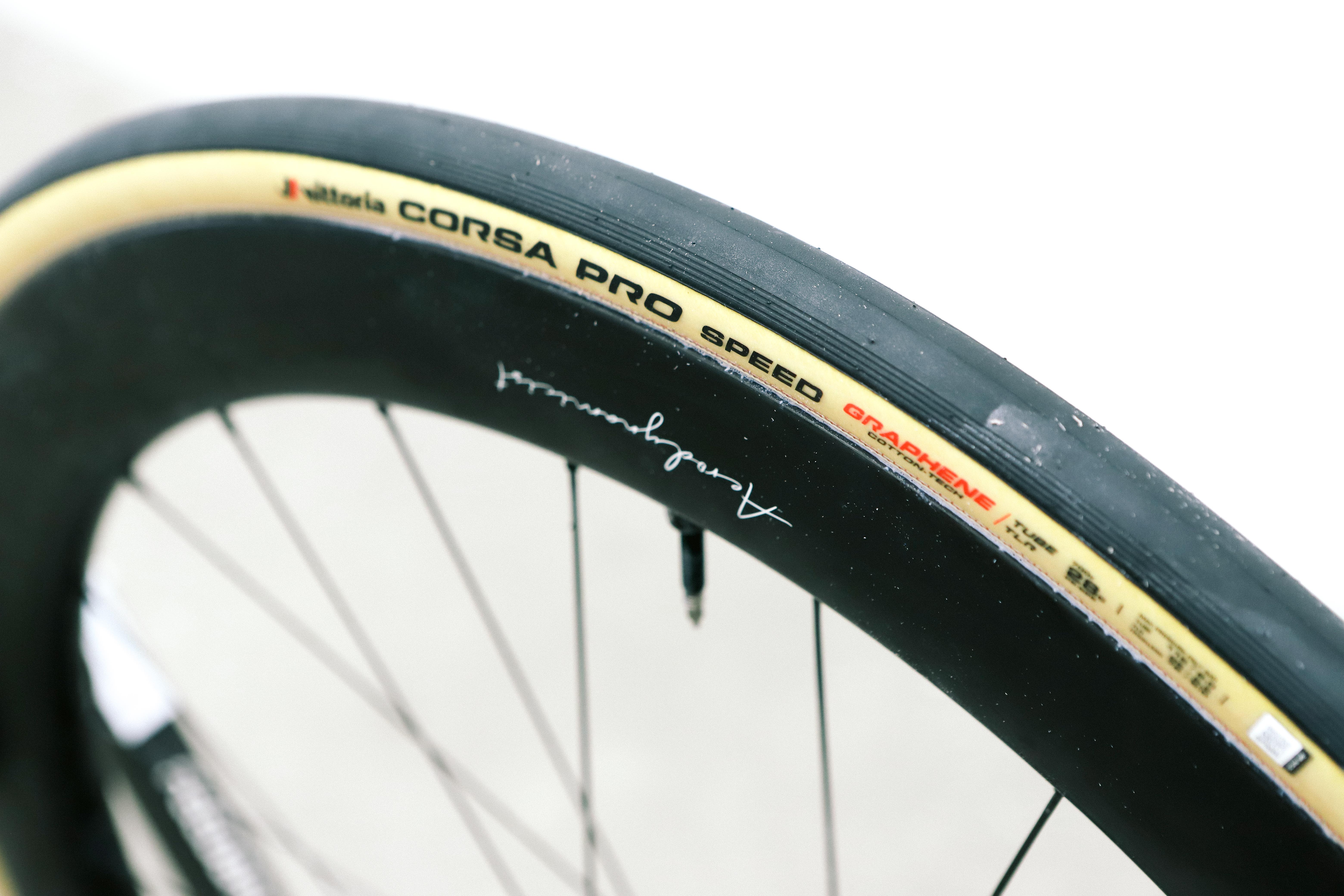

- Power at 9m/s: 8.6W
- Power at 11m/s: 14.6W
- Vs GP5000 S TR at 9m/s: -1.3W
- Vs GP5000 S TR at 11m/s: -1.4W
With confidence, we can say this is the fastest tyre on test by our numbers, and incredibly thin feeling in the hands. You’re netting 2.8 Watts over the GP5000 S TR, and about the same over Continental's TT tyres. It’s fast, and expensive, but at WorldTour level where TTs are won by hundredths of a second I know which tyres I’d want on my bike for the race of truth.
Resolving for speed and time
Up to this point, I have stopped short of outlining any time gains or increases in speed. The issue in this case is that the faster you ride the greater the influence of aerodynamic drag, increasing as it does exponentially. The wattage savings noted are absolute values, and for a given velocity you will be able to feel that it is easier to maintain that speed, but for a given power output quantifying an increase in velocity is more tricky.
In the simplest terms the faster you ride the smaller the differences will be between two pairs of tyres. Resolving aerodynamic equations as we have done in the wind tunnel is much more easily done as you can for the most part assume that drivetrain forces are constant, and therefore they can be assumed equal.
Here you have the issue that as your tyres make you faster, your increase in velocity increases the air resistance you experience, reducing your gains. The maths behind it is relatively complex, but fortunately, interactive calculators exist online into which one can input various parameters to output wattage savings or speed gains.
Steve Gribble's Cycling Power and Speed tool, as recommended by the ever-helpful Casper Von Folsach of team Uno-X Mobility is one such tool, and inputting the numbers for our lab rat Josh shows the following from an improvement in the coefficient of rolling resistance of 0.002:

This is a purely hypothetical situation using what is surmised to be a pretty large improvement in rolling resistance, but an illustrative one nonetheless, and based on as real-world numbers as we can get. In short, the more powerful you are, assuming your aerodynamic drag remains the same, the harder won each additional second is.
In reality, there are so many other factors at play that it's very hard to predict things based on calculators alone. Road surface, fluctuations in wind direction, weight change, slope all come into play here, so while it is tempting to learn what you can perhaps gain in an ideal world do take these with a pinch of salt and perhaps lean more heavily on the comparative data instead. Without the measured coefficient of rolling resistance figures for the actual tyres in question, which we are unable to resolve based on our tests, it remains a prediction only.
Further interrogation of the data
We've already established which tyres are the fastest, which are the slowest, and if you're trying to choose between two different tyre sets then this is no doubt valuable information. There are perhaps greater insights to be learned by trying to tease out trends, which is what I've tried to do below.
Time trial tyres vs Road tyres
Time trial specific tyres are relatively new. The two leading brands in terms of WorldTour sponsorship - Continental and Vittoria - both have a time trial version of their general race tyre. Schwalbe, too, has the same, and both Schwalbe and Continental now also offer a tyre optimised for aerodynamics. Taking the data for 11m/s only (more representative of a time trial) I've highlighted the TT tyres to show where they sit in the mix.
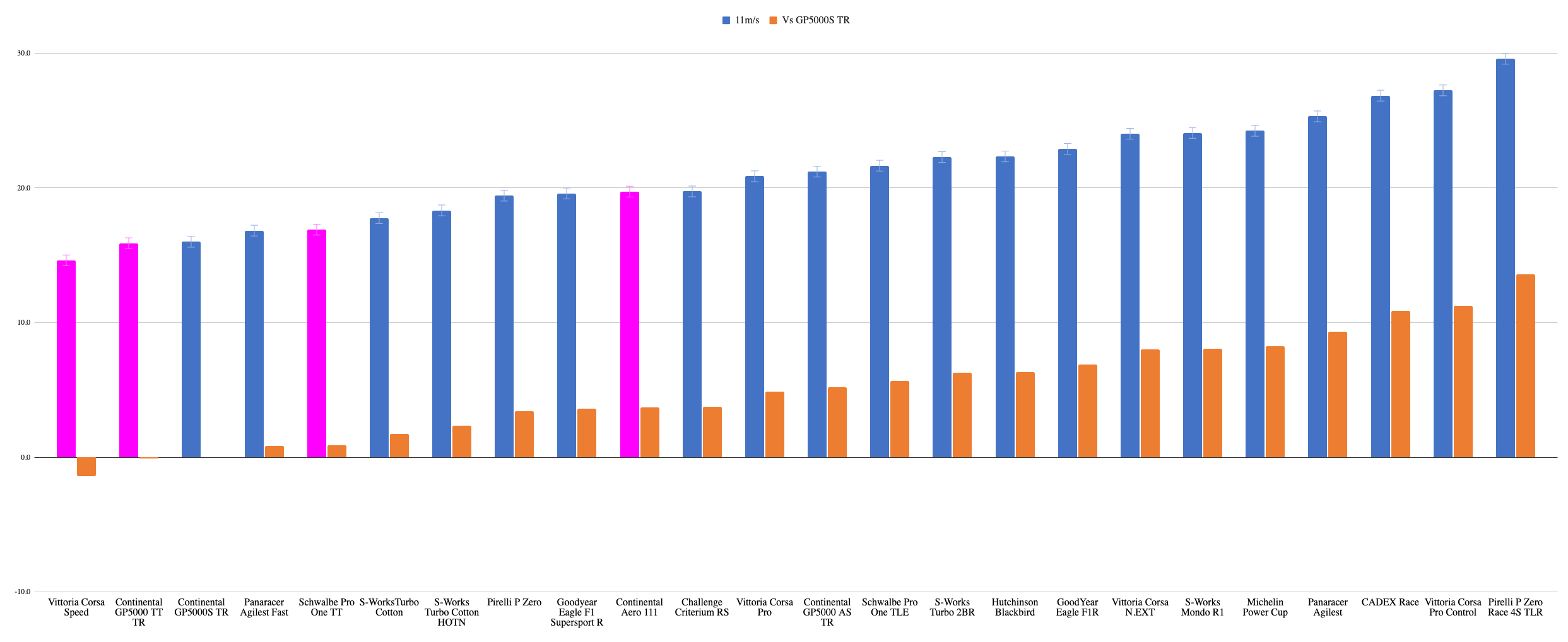
From this we can see that TT tyres in general are all at the faster end of the scale, though only the Corsa Pro Speed falls outside the margin of error for the fastest general use race tyre. The Continental GP5000 TT TR tested effectively identically to the standard GP5000S TR, and has crossover in terms of the margin for error with the Schwalbe Pro One TT, so the three dedicated TT tyres on test could have occupied the podium positions on the day.
The main outlier to this is the Continental Aero 111, which has been optimised for aerodynamics but it seems not necessarily for rolling resistance. There is a 3.8 watt penalty by our numbers in terms of rolling resistance for any rider opting to run a mixed set of a GP5000 TT TR rear and an Aero 111 front rather than a full set of TT tyres. This, if Continental's aero claims are true, should be more than offset by the watts gained in terms of drag reduction, but it is still an outlier nonetheless.
I suspect that to create the deep 'vortex generator' pits in the tyre tread, the tread itself has had to be thickened over that standard GP5000 S TR, causing the observed rolling resistance penalty.
All season tyres Vs normal tyres
Perhaps a more realistic choice that the general rider is faced with is whether to choose a race tyre in the hopes of netting some wattage gains, or a more durable, more grippy, or more puncture resistant 'all-season' model. Below I have pulled out in pink all the all season models from the 9m/s graph (a more representative speed for all-season riding) to see what we can say in this regard.
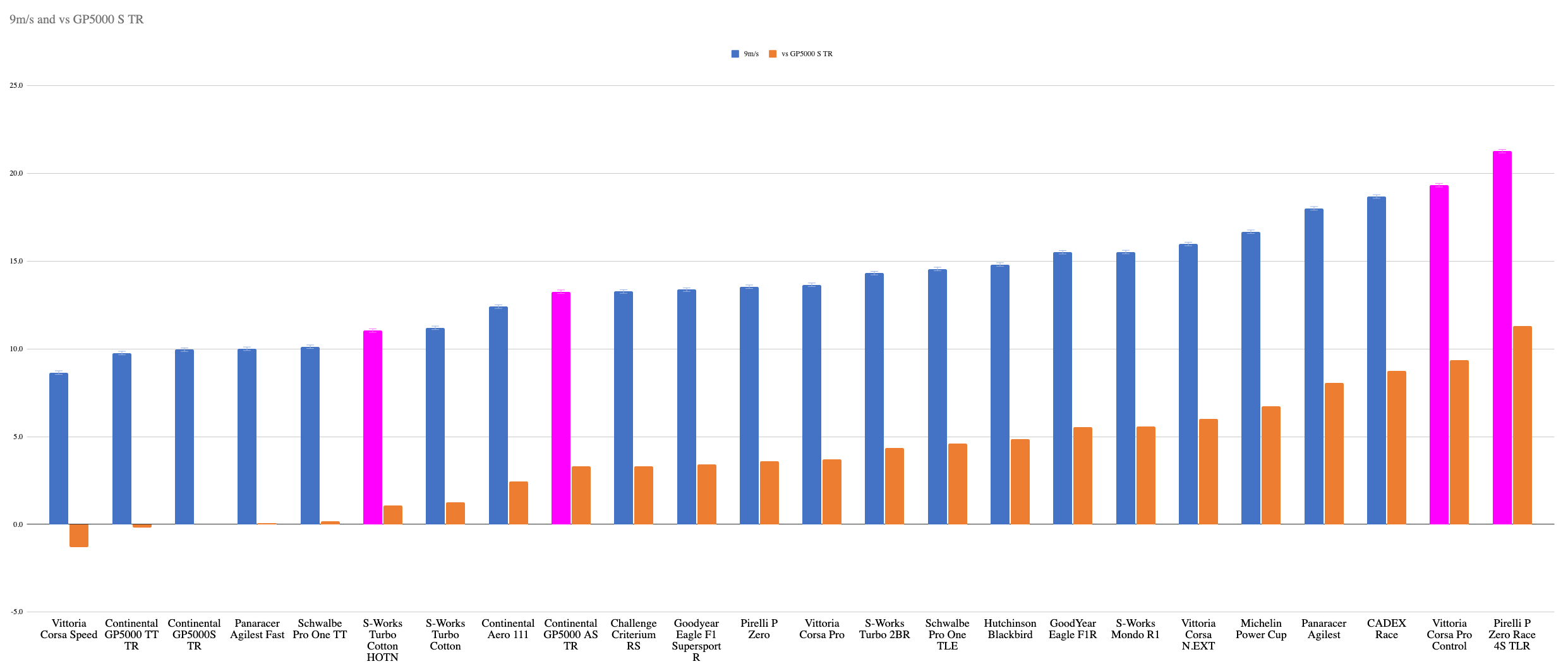
A mixed bag here. The two slowest tyres on test were both all-season offerings from Vittoria and Pirelli, but the GP5000 AS TR tested very well. At faster speeds it did drop a few places, but 11m/s is much more of a race pace and nor totally representative of what the tyres are aimed at in my view.
The penalty for choosing the all season version if you're a Continental fan is 6.6 watts for a pair at 9m/s, whereas for Vittoria enjoyers swapping from the Corsa Pro to the Corsa Pro Control will set you back 11.2 watts at 9m/s for a pair. This is helped somewhat by the Corsa Pro being 3.7 watts slower per tyre than the benchmark.
Of all the all season tyres the S-Works Turbo Cotton Hell of the North performed best, but this is effectively just a wider version of the standard Turbo Cotton, and was run with latex tubes, so isn't entirely representative of a true all season tyre, which I think we'd mostly all view as tubeless nowadays.
Mid-tier Vs high-end
The all-season tyres aren't necessarily all second-tier options, with some being very expensive but marketed as offering better grip or some such. How do second-tier tyres perform, in general terms, compared to their top-tier siblings? Below I've highlighted in two graphs (both at 9m/s) the race tyres and then the second-tier options.
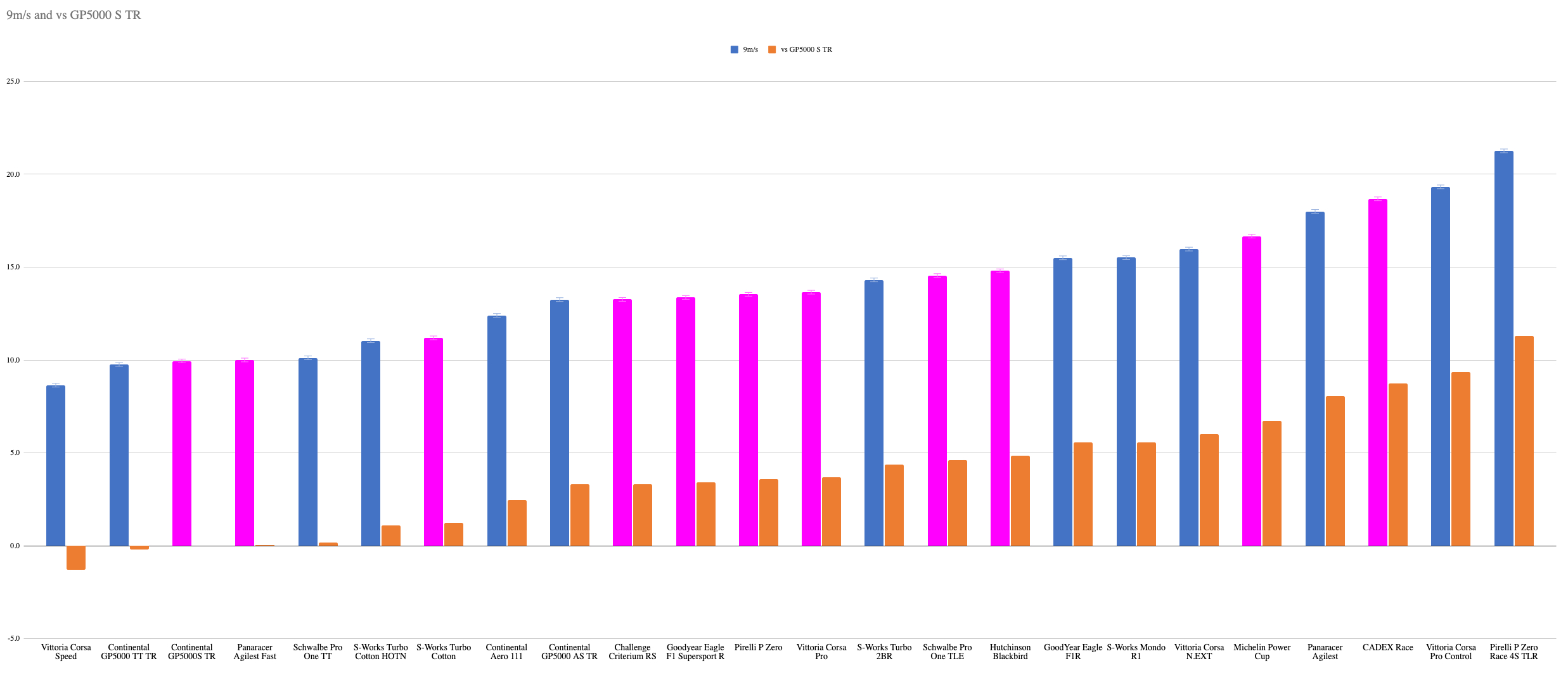
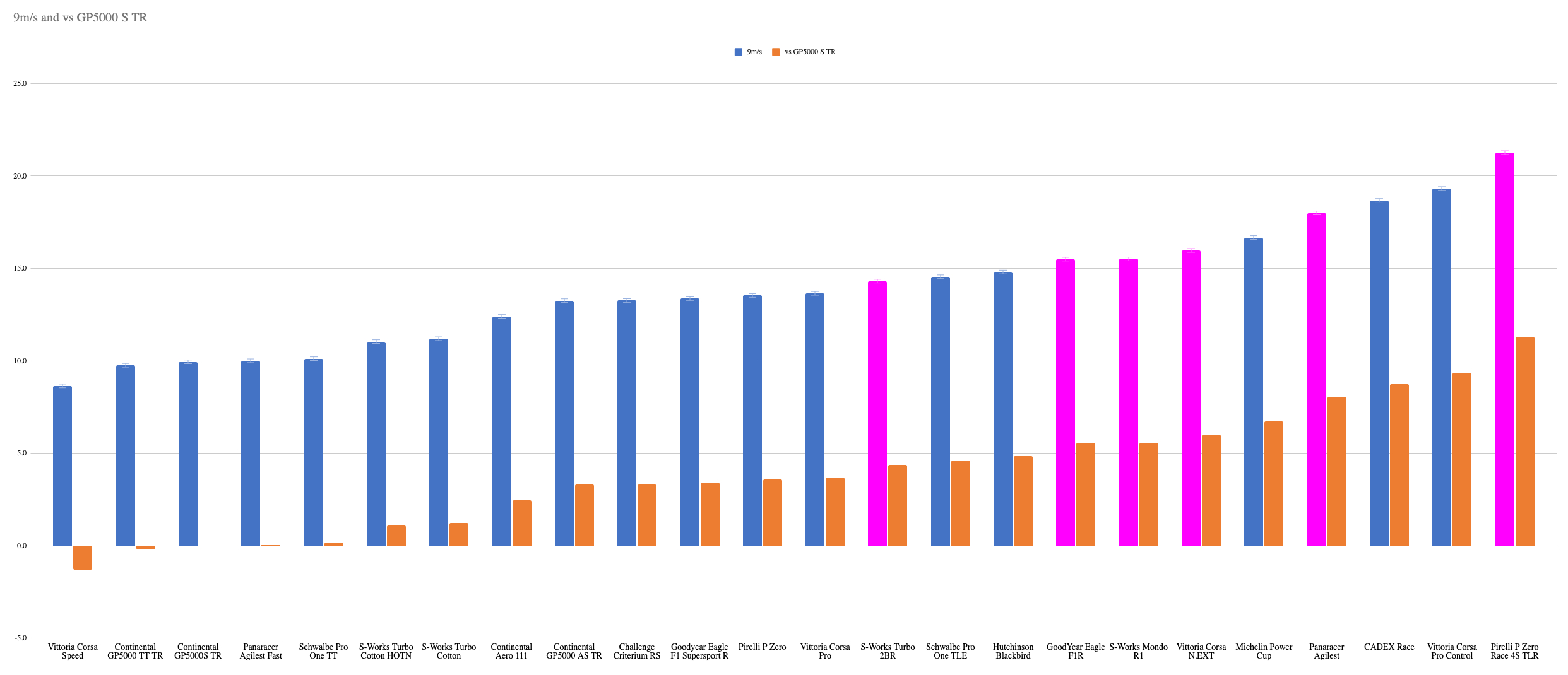
It is easy to be cynical about what marketing tells us, so it is heartening to at least see that the second-tier tyres occupy the bottom end of the table only. The general race tyres do occupy a broad spread from nearly the fastest to nearly the slowest, but we also tested far more race tyres than we did all season or second-tier options.
The impact of price
Let's now dig into the price conundrum a little deeper. We've established that second-tier tyres are generally slower than high-end tyres, but second-tier tyres aren't necessarily cheaper, with some race tyres coming in at a lower RRP than second-tier options from competitor brands. In the following graph of 9m/s data, I've ranked each tyre in ascending order of RRP in GBP, or the closest I could get to the RRP figure at the time of writing.
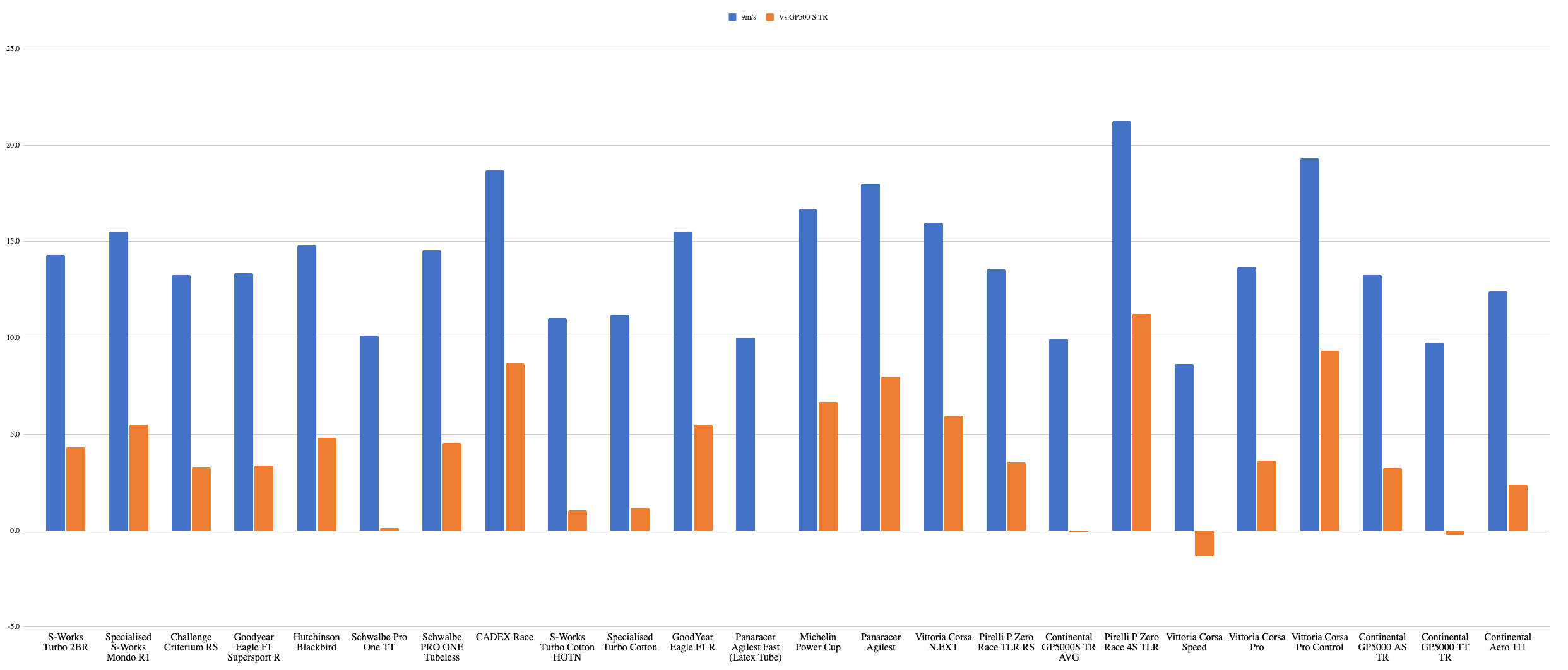
Well, that's pretty messy; no discernible trend here. In short, price has no real bearing on performance. You could perhaps say the Schwalbe Pro One TT is the best value as its performance roughly matches the GP5000 S TR for a lower price, but it is a TT tyre, and without any data on puncture resistance I'd be hesitant to suggest you should run it as an everyday option.
This graph will also fluctuate wildly if, instead of the recommended retail price from each brand, I plotted it using actual prices found online. Tyres are often on sale, and I'm afraid I'm simply not good enough at coding to create a live graph that plots the cheapest available price for each tyre against its wattage losses.
Are cotton tyres faster?
Tanwall tyres have become pretty ubiquitous over recent years, more for style reasons than anything else. Originally tan sidewalls meant you had cotton cased tyres, which were assumed to be faster due to a higher threads per inch. Nowadays tanwalls are often just tan rubber. Several of the tyres we tested did actually have cotton casings though, so we can interrogate the dataset to see if cotton casings make your tyres faster or not.
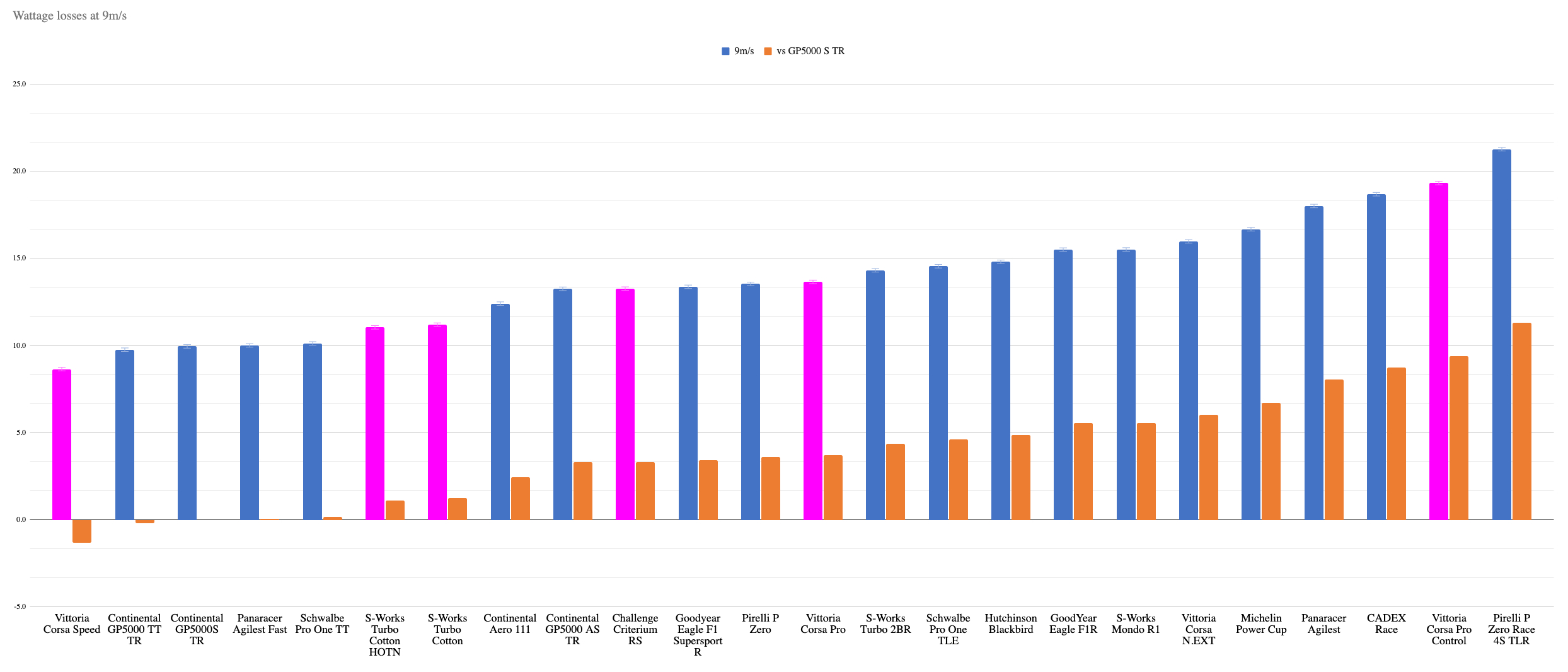
Cotton-cased tyres were the fastest overall, but they were also the second slowest, and they were also somewhere in the middle. Having cotton tyres may look cool, and in my experience, it does have a noticeable impact on ride feel, but there is nothing to suggest that cotton tyres are faster than their vulcanised rivals in any meaningful sense.
If you want tanwalls you are just as well to pick the tan rubber kind as the cotton kind, assuming of course that tanwall versions of vulcanised tyres offer the same rolling resistance as the all black versions of the same tyre, and this may not necessarily be the case as the rubber compound used in the sidewall, by dint of being a different colour, will be of a different composition.
Tubeless Vs. Tubes
Given we had the testing rig for the day it seems daft to not do some side quests. Tubes vs tubeless is a source of constant debate, so to add some more data into the mix we compared our wattage losses for a GP5000S TR to the watts lost for the same tyre at the same pressure using latex, TPU, and butyl inner tubes.
A Vittoria Competition Latex, a Pirelli Smartube, and a Specialized lightweight butyl were the inner tubes used in this case.
For the tests we used two different GP5000S TR tyres, a 'wet' one for the tubeless setup, and a 'dry' one for the inner tubes, to avoid any interference (and mess) from installing an inner tube into a previously tubeless setup.

We found that latex inner tubes were 0.4 watts faster at 9m/s and a watt slower at 11m/s than tubeless. Accounting for the margin for error for each test it's relatively safe to say that for our benchmark tyre, there was very little difference in performance between running latex tubes and running tubeless sealant.
TPU tubes were slower, and butyl tubes slower still over tubeless. For our setup, we'd stand to gain 8 watts by swapping from butyl tubes to tubeless sealant using our benchmark tyre at 9m/s, which is about the same difference as that between our a tyre around the median of our range and the fastest pair.
The effect of tyre pressure
Ok, we've established that swapping from butyl tubes to tubeless can net you a decent gain; no surprises there. What about tyre pressure? There are a load of tyre pressure calculators out there that can spit out what is claimed to be your optimal pressure depending on the tyre width, tyre type, rim dimensions, road surface, speed etc.
To dig into this, we ran our benchmark GP5000 S TR at 90, 80, 70, 60, 50, 40, and 30psi, in addition to the data we already had from running it at 73psi. The following bar chart shows what we found for each pressure.
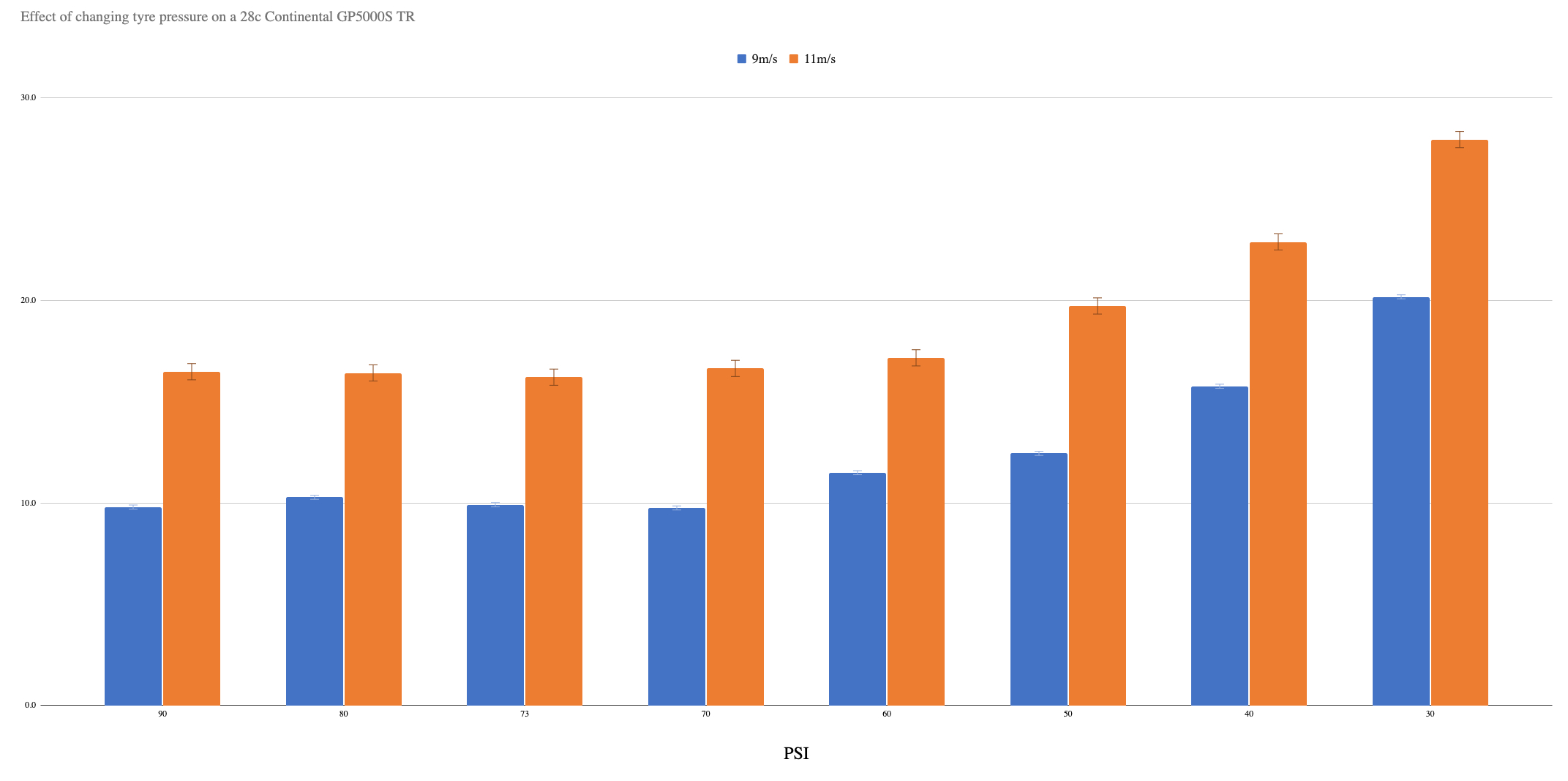
Looking first at the data at 11m/s, we can see that - accounting for the error margin - the same resistance could be found at each pressure from 90-60psi. That's a pretty wide range of pressures, and covered both what was well above Josh's ideal to below what he'd usually run by about 10psi.
A similar sort of trend is seen at the slower speed, but with the error margin being smaller we can tease out more of a slight U shape for the trend. Going harder or softer than 70psi will result in wattage losses (though oddly the resistance drops off again at 90psi, just below the maximum allowable pressure for this tyre on a hooked rim).
More generally, just looking at the trends, we can see the penalty for running your tyres too soft is far greater than running them too hard, but the flip side to this is that running your tyres too hard doesn't actually gain you anything beyond being more uncomfortable. It is 'safer' in terms of not losing speed by going too hard rather than too soft, but we had a buffer of at least 10psi below what is Josh's ideal pressure before we saw any tangible drop in performance.
Perhaps the most useful takeaway here is that as long as you're in the right ballpark in terms of tyre pressure you don't need to worry. Interestingly, Josh could have run a GP5000S TR at 30psi and still been faster than if he was using a Pirelli P-Zero 4 Season at 73psi at 9m/s, and even comparing race tyres he's still better off on a GP5000S TR at 40psi than he is with a 73psi Cadex Race GC. Tyre construction, then, is a greater factor than tyre pressure.
The takeaways
I appreciate that is a lot to take in, though I also appreciate that some of you may have skipped ahead to this bit so the following is a digest of what we’ve learned so far based on the questions we started with at the beginning. If you have read all this way… well done!
1. How much difference is there between tyres in a real world situation?
If you're swapping from the absolute worst to the absolute best tyres using 40km/h as the speed and swapping a pair of tyres, there are 30 watts on the table. Add in swapping from butyl tubes to tubeless and that's another 8, but a more realistic figure for most of us, using 30km/h as the speed and swapping from a slow, tubeless four-season tyre to a top-tier general race set could gain you around 22-23 watts.
This is certainly enough to be tangible when swapping on your own bike, and enough to have an impact on your overall speed, or just allow you to ride at the same speed for less power.
At the WorldTour level the difference between the two most commonly used tyres, the GP5000S TR and the Corsa Pro is just shy of 10 watts for a pair, which is significant in a sport where sub-watt gains are now being chased.
Doing some back-of-the-envelope calculations, for a 90-hour Tour de France, using Power = Energy x Time, and assuming all else is equal, those 10 watts are worth 3,240,000 joules of energy. That's a huge number, but in reality, it's only about the energy contained within 430g of white rice... and all else isn't actually equal anyway, but a fun experiment nonetheless.
2. How does this compare to wheels, bikes, helmets?
In order to compare apples with apples I'm going to use 11m/s data here, as that is closest to the velocity we used for our previous wind tunnel tests when quoting data. Swapping from the slowest to the fastest race tyres at 40km/h would net you 21.8 watts with an upgrade cost of £160 at RRP (approx. $210 / €190).
This is roughly equivalent to the same wattage saving from swapping from a decade old Trek Emonda with box section wheels and round bars to a Factor Ostro VAM, an upgrade cost of in the region of £10,000.
Swapping to our benchmark tyre set is in the same ballpark in terms of price as buying an aero helmet, and while we don't have data to compare a second-rate helmet (aerodynamically speaking) to the best of the bunch, the difference between the least aero and most aero of the dedicated aero helmets was 12 watts. This is likely to be greater when swapping from a non-aero to an aero helmet, and so these two upgrades are more or less on a par with each other in terms of price and reward.
Swapping from a budget box section wheel to a deep-section aero wheel (around 60mm) is worth around 5-6 watts on average, although there are nuances to this relating to yaw angle weighting which we'll save for another day. The cost of an aero wheelset is in the region of £1000 to £2000 depending on spec.
As we found when wind tunnel testing race bikes, it is far more cost-effective to change your tyres before you set about trying to change a bike or wheels wholesale. Do tyres and helmets first, then worry about the larger things. Tyres, especially, are great in this regard because at some point you're going to need to replace your current pair sooner than you would your helmet (barring any disasters), so you can just wait and then trade up when you've got your money's worth from your current set.
It is also worth bearing in mind that of all the upgrades, tyres are the only one we have investigated that concern the drivetrain. The faster you go the greater the influence of aerodynamic drag will be, making aero upgrades ever more important compared to everything else at higher speeds, but less important the slower you go.
3. Greater benefits for less powerful riders
Cycling is a sport of diminishing returns, and upgrading your tyres fits the bill. The more powerful you are, or the faster you ride, the greater the influence of aerodynamics and the less rolling resistance will impact the total forces you have to overcome to maintain a steady speed. We have picked two velocities that I think represent two reasonable scenarios, but it is not possible to extrapolate beyond these as there are simply too many variables for this to be a useful endeavour.
4. Can you choose tyres based on ride feel, grip, puncture resistance?
Swapping almost any tyres out for our benchmark set will net you a measurable decrease in rolling resistance, and therefore improve the velocity at which you'll ride.
However, tyres aren't only there to produce the lowest possible rolling resistance. They are the only thing that provide mechanical grip when cornering, can have a tangible impact on ride feel, have to resist punctures to a degree that is acceptable to the rider, and have an acceptable service life.
Rolling resistance will have an impact on your speed, but having an extremely fast tyre that you cannot trust in the corners will impact your speed too. Mechanical grip is not something that we've measured here, and from personal testing, I can attest that the GP5000 S TR handles corners very well indeed, but I have no hard data to back that up.
In short, if you have a tyre set that you like but these data show you are at a measurable performance detriment, don't be disheartened as this is but a small but measurable part of the overall tyre performance assessment.
5. There's nothing slower than puncturing
We have not assessed mechanical grip, and likewise we have not made any assessment of puncture resistance in this study. It may be tempting to fit a set of Corsa Pro Speed tyres to your bike for the greatest possible performance advantage, something Josh had in fact done a few weeks before this test, but for general riding, I'd offer caution in this regard. For general riding, you really must consider puncture resistance carefully, and while the advent of decent tubeless setups has enabled many of us to run faster, more fragile tyres more regularly, there is still nothing slower than being stuck at the roadside with a flat tyre.
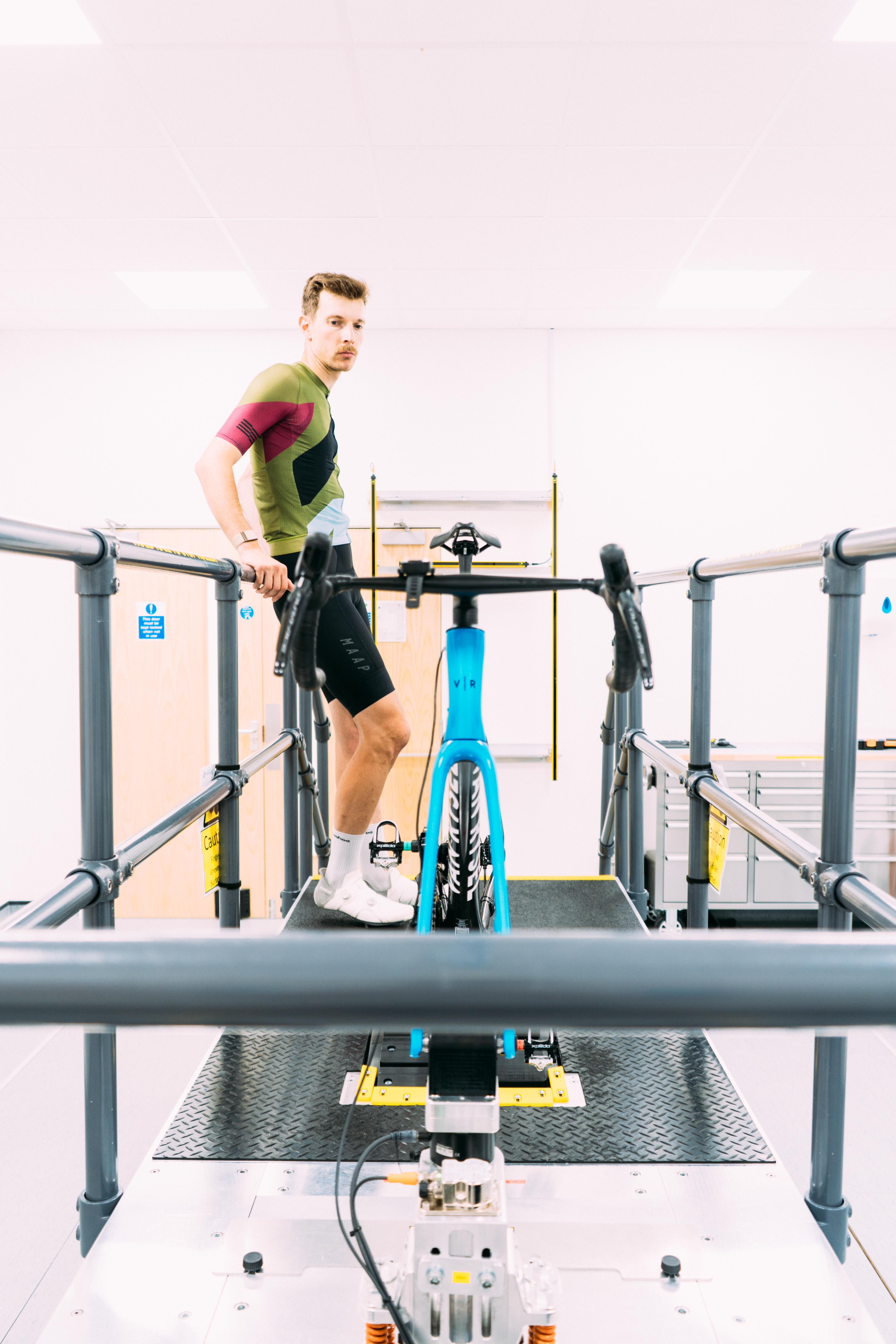
Thank yous
Firstly thank you to all the brands that provided tyres for this test. Without your trust that we'd do a fair job this wouldn't be possible.
Further thanks also must go to Hunt for the loan of a load of identical wheels, to Madison for sorting us out at last minute with a load of brand new cassettes, and to Muc-Off for all we'd need to spend a whole day swapping tyres and setting them up tubeless.
The team at SSEH were ever helpful, patient, and professional, and without their input on protocol and their willingness to power through a full day of testing without a break, we wouldn't have the dataset that we have been able to share with you.
Josh put in a phenomenal amount of work for this test, and while my name is on the byline he was instrumental in setting it up, guiding the process, and above all riding the bike on the test rig for north of 150 individual data recording runs.
Sam and Tom, without you helping with the tyre setup and measurement we'd also have only got a fraction of the tyres tested.
Finally, it must be said that thanks should go out to anyone who has subscribed to Cyclingnews in the recent weeks and months. Without you choosing to spend your hard-earned money on our premium content, we wouldn't be given the free hand we are to create it.
If you subscribe to Cyclingnews, you should sign up for our new subscriber-only newsletter. From exclusive interviews and tech galleries to race analysis and in-depth features, the Musette means you'll never miss out on member-exclusive content. Sign up now.







